
Indulging in the buttery, rich quiche in the morning.

The Blackberry Ricotta Danish is a real treat.



The Flatiron District has to be one of the most interesting and beautiful architectural neighborhoods in New York City. Serving as the old “Midtown” from the end of the Civil War until WWI and the move uptown, this area was once the shopping, entertainment and commerce area of Manhattan.
When all the department stores and businesses moved uptown first to 34th Street and then eventually to their current locations on upper Fifth and Madison Avenues as the City core changed, the businesses left a treasure trove of exquisitely designed former office buildings and department stores that are being refitted for new businesses that are moving into this area.
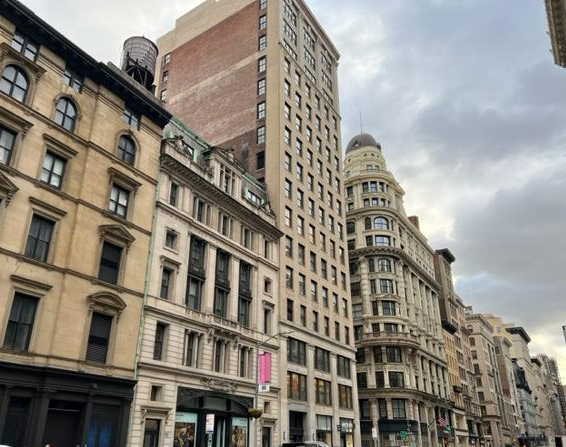
The core of the Flatiron District on FIfth Avenue below 23rd Street
What was old has become new again as the desire for these well-built and designed buildings has become a paramount to new tech and marketing businesses. The buildings may have the appearance of the turn of the last century but there are being remodeled inside with the latest Internet technology and premium office space.
I started my walk down Sixth Avenue again on West 24th Street admiring the old department store buildings of the “Ladies Shopping Mile” with their Beaux Art style architecture and curvature symbols with the initials of companies that no longer exist. Just look up at the lions’ heads and pillars that dominate this architecture, and it shows this type of embellishment was used to draw customers in and showcase their elegant wares. These are now the home of discount retailers and small business offices.
On the side streets of this district, you see how companies used to impress the outside world with their elegant buildings as a ‘calling card’ of who they were as a company. Tucked between more modern buildings, there are some true architectural gems all over the neighborhood. You really have to stop and admire the detail work of these buildings.
As I rounded the corner down West 24th Street, slightly hidden by scaffolding but still seeing its beauty was 46 West 24th Street, the Masonic Lodge.

46 West 24th Street-The Masonic Lodge (Streeteasy.com)
https://www.newyorkitecture.com/tag/46-w-24th-street/
https://streeteasy.com/building/24-west-46-street-new_york
http://daytoninmanhattan.blogspot.com/2018/05/masonic-temple-and-masonic-hall.html
The Masonic Lodge’s elegant structure was designed by architect Henry Percy Knowles in the Beaux Arts style and was completed in 1910. It was built for the offices of the Masonic Lodge on West 23rd Street and its embellishments were made of stone and brick work (Daytonian in Manhattan). It’s currently going through a renovation but you can see all its beautiful decorations on the side and top of the building.
Making my way down West 24th Street, you come to the center of the neighborhood, Madison Square Park, which the Flatiron District shares with Rose Hill, NoMAD and Kips Bay to the east and Gramercy Park to the south. These neighborhoods overlap between Fifth and Lexington Avenue and Park Avenue South, so take time to read my blogs below on those neighborhoods as well to share in all the wonderful things you will see in this section of the Manhattan.
Madison Square Park has become like a second home to me since walking this set of neighborhoods. It is a nice place to relax under shade trees in the hot weather and have snacks and eat your lunch while spending time people watching. It is also the home of many statutes of fascinating people and getting to know their history as well.
Madison Square Park is an interesting little oasis from all the traffic and office space. It has an interesting history since it was designated a public space in 1686 by British Royal Governor Thomas Dongan. It has served as a potter’s field, an arsenal and a home for delinquents. In 1847, the space was leveled, landscaped and enclosed as a park. It became part of the New York Park system in 1870. There are many historical figures featured in the park (NYCParks.org).
The park today is a major meeting spot for residents and tourists alike with a dog track and the original Shake Shack restaurant.
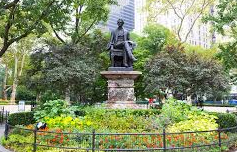
Madison Square Park in the Spring when I was walking the length of Broadway
https://madisonsquarepark.org/
https://www.nycgovparks.org/parks/madison-square-park
An interesting sculpture that that welcomes you into Madison Square Park is the statue of William Henry Seward, the former Governor of New York State, US Senator and Secretary of State during the Civil War. He also negotiated the Alaskan Purchase in 1867.
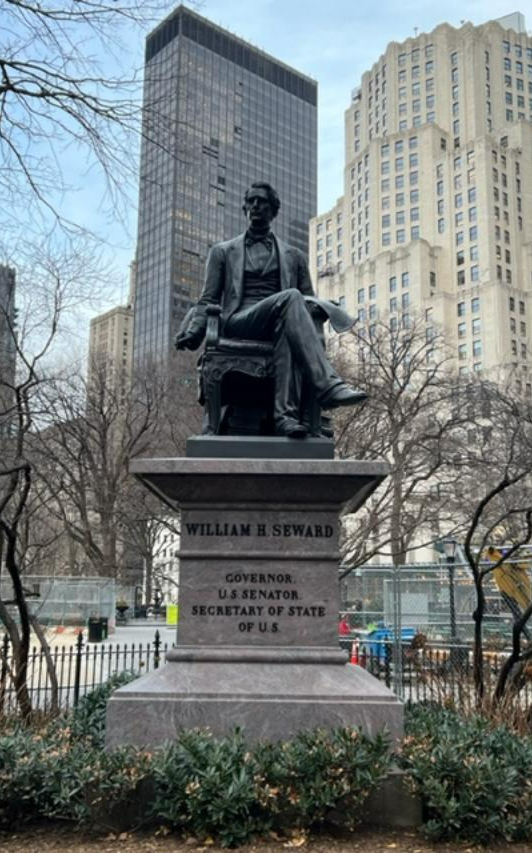
Governor William Henry Steward statue in Madison Square Park

Governor William Henry Seward, who negotiated the Alaskan Purchase “Seward’s Folly”
The statue was designed by artist Randolph Rogers an American born sculptor who studied in Italy. He was a Neoclassical artist known for his famous historical commissions.
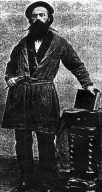
Artist Randolph Rogers
https://www.shsart.org/randolph-rogers
When I walked into the park to take a break, it must have been the busiest section of the neighborhood between the playground and the original Shake Shack that were serving food to a crowd clung to their cellphones.
I stopped to look at the statue of our 21st President Chester A. Arthur, who had taken oath just two blocks away in his New York townhouse where the Kalustyan’s Specialty Foods is located at 123 Lexington Avenue (See My Walk in Kips Bay below). I thought about what was going on in our government today and what they must have gone through with this transition.

The Statue of Chester A. Arthur in Madison Square Park
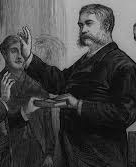
President Chester A. Arthur
https://www.whitehouse.gov/about-the-white-house/presidents/chester-a-arthur/
The statue of our 21st President was designed by artist George Edwin Bissell and the pedestal by architect James Brown Lord.

Artist George Edwin Bissell
https://americanart.si.edu/artist/george-edwin-bissell-430
George Edwin Bissell was an American born artist from Connecticut whose father was a quarryman and marble carver. He studied sculpture abroad in Paris in the late 1870’s and was known for his historical sculptures of important figures of the time (Wiki).
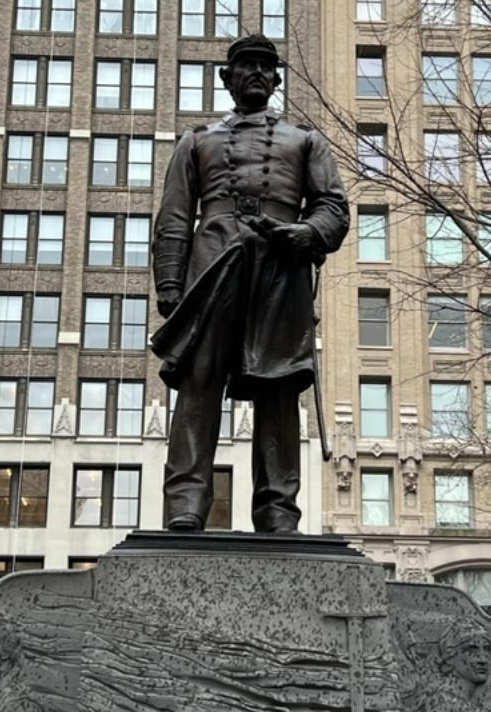
The Admiral David Farragut statue in Madison Square Park by artist Augustus St. Gaudens

Admiral David Farragut
https://www.britannica.com/biography/David-Farragut
Another interesting statue that stands out in Madison Square Park is the of Civil War Navy hero, Admiral David Farragut. Admiral Farragut commanded the Union Blockade of Southern cities and helped capture New Orleans. The statute was designed by sculptor Augustus St. Gaudens. This was the artist’s first major commission when it was dedicated in 1881 (NYCParks.org).
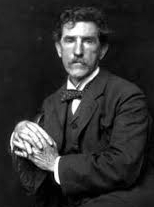
Augustus St. Gaudens
https://www.nps.gov/saga/index.htm
Augustus St. Gaudens was an Irish born American artist whose specialty during the Beaux-Arts era was monuments to Civil War heroes. He had created the statue the William Tecumseh Sherman in the Central Park Mall on Fifth Avenue along with this statue of Admiral Farragut. He had studied at the National Academy of Design, apprenticed in Paris and then studied at the Ecole des Beaux Arts (Wiki).
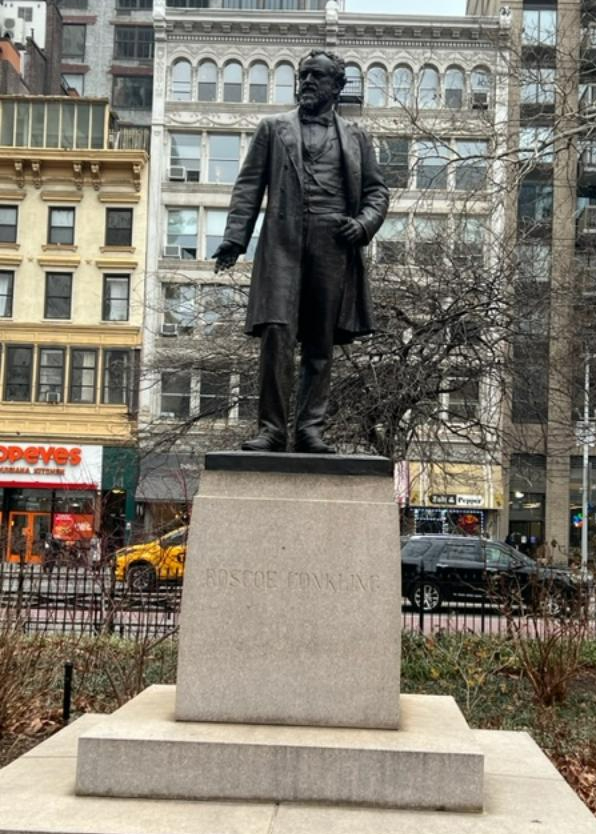
The Roscoe Conkling statue on the south side of the park
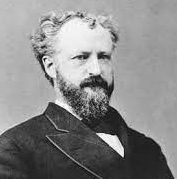
Senator Roscoe Conkling
https://en.wikipedia.org/wiki/Roscoe_Conkling
https://www.nycgovparks.org/parks/madison-square-park/monuments/319
Roscoe Conkling was an American lawyer and Republican politician who represented New York in the United States House of Representatives and the United States Senate (Wiki).

Artist John Quincy Adams Ward
https://en.wikipedia.org/wiki/John_Quincy_Adams_Ward
He trained for seven years (1849 to 1856) under the well-established sculptor, Henry Kirk Brown and then Ward went to Washington in 1857, where he made a name for himself with portrait busts of men in public life (Wiki).
The statue was created by sculptor John Quincy Adams Ward in 1893. Referred to as “the Dean of American Sculptors,” Ward contributed nine sculptures to the parks of New York, among them Horace Greeley (1890) now in City Hall Park, Alexander Holley (1888) in Washington Square Park, William Earl Dodge (1885), now in Bryant Park. Ward’s depiction of Conkling is a sensitive and vigorous portrait of him posed (NYCParks.com).
I love walking around the park in the summer, when you can admire the flowers and green lawns and relax under the shade of tree on one of the benches. When I walking through the park after classes during Christmas, the park was like a ‘Winter Wonderland’ with white lights lining the park, the Christmas tree in the corner of the park and Shake Shack decorated for Christmas.
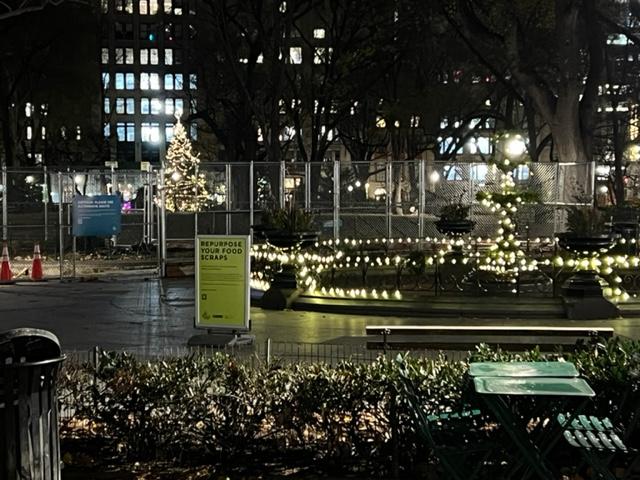
Madison Square Park at Christmas time

Shake Shack decorated for Christmas
https://shakeshack.com/location/madison-square-park-ny#/
My review on TripAdvisor:
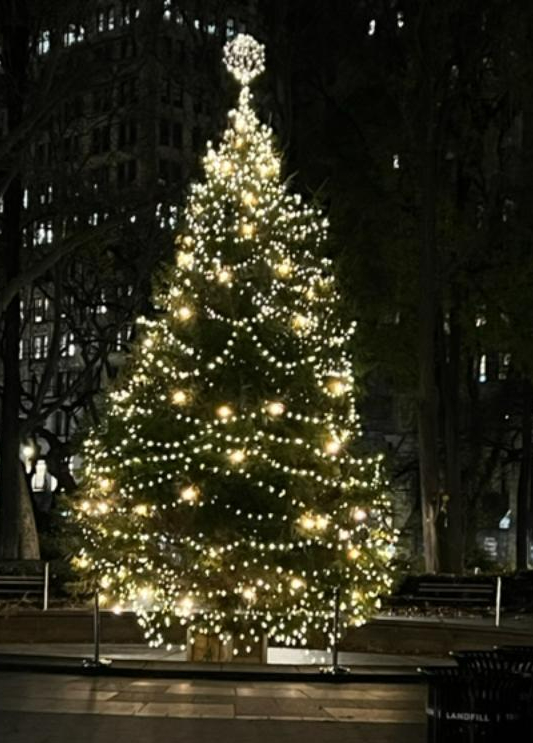
The Madison Square Park Christmas tree

Even during the day Christmas is in full swing in Madison Square Park
I crossed the park and entered the other side of the park that the Flatiron neighborhood shares with NoMAD and Rose Hill neighborhoods. This section of the neighborhood is still home to many headquarters of companies and the architecture displays the company’s influence in their industries.
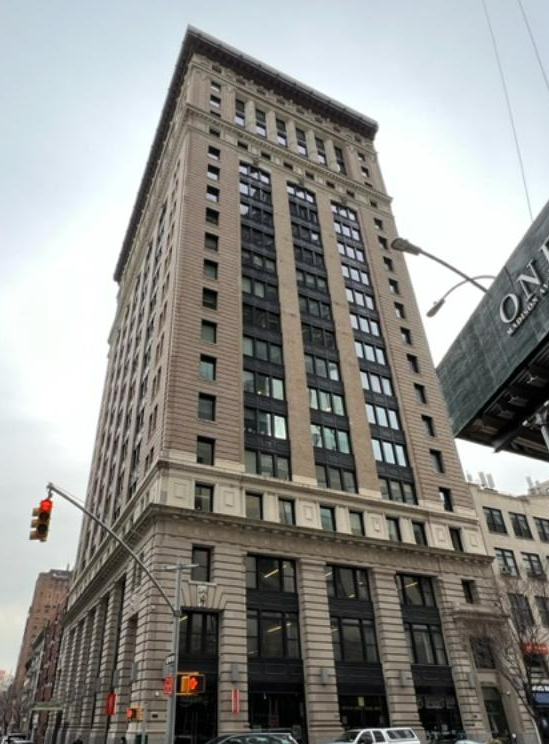
315 Park Avenue South
https://www.metro-manhattan.com/buildings/315-park-avenue-south-office-space-for-lease/

The detail work at 315 Park Avenue South
The building was designed by architect William C. Frohne in the Beaux Arts style and was completed in 1911. The building was known as the Remington Rand Building being the headquarters of the Remington Rand Company who used to manufacture typewriters and electric shavers (Metro Manhattan.com). Look up at the exquisite detail work of the doors, windows and roof with interesting design.
Another building that stood out as I walked down the street was 125 East 24th Street, the St. Francis of the Friends of the Poor.
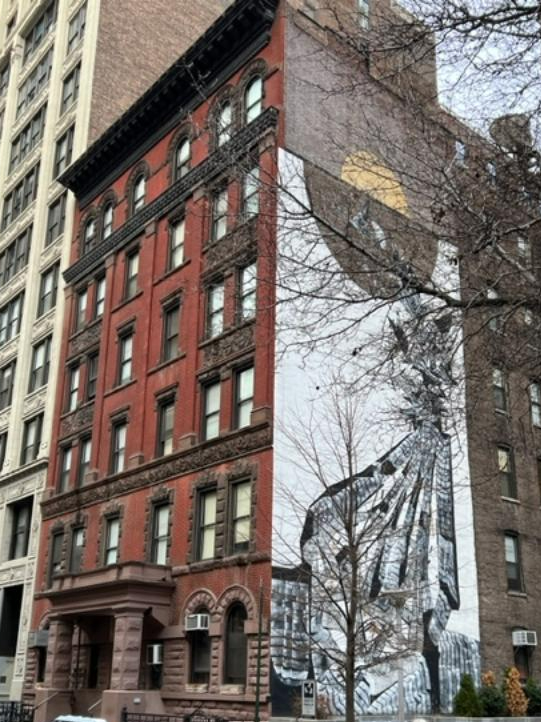
125 East 24th Street-St. Francis Friends of the Poor Building
https://www.stfrancisfriends.org/
The structure was built in the late 1880’s as the home of William Frances Oakley. When he passed aways in 1888, it became the Beechwood Hotel, a residential hotel for the carriage trade. In the 1937, it became a writing school and by the early 1950’s it was turned in SRO. In 1979, the Friars of St. Francis of Assisi bought the building as housing for the homeless with psychiatric issues. It is now home to the St. Francis Friends of the Poor, where it is a community for people who need assistance with their issues and helps them live a better and more productive life (Wiki/St. Francis Friends of the Poor.com).
The street art on the wall of the building is interesting and faces Lexington Avenue. One the corner of East 24th Street & Lexington Avenue is the Friends House New York, a housing unit. Painted on the wall is a very unique painting by Italian street artist, Jacopo Ceccarelli.
Painting by artist Jacopo Ceccarelli
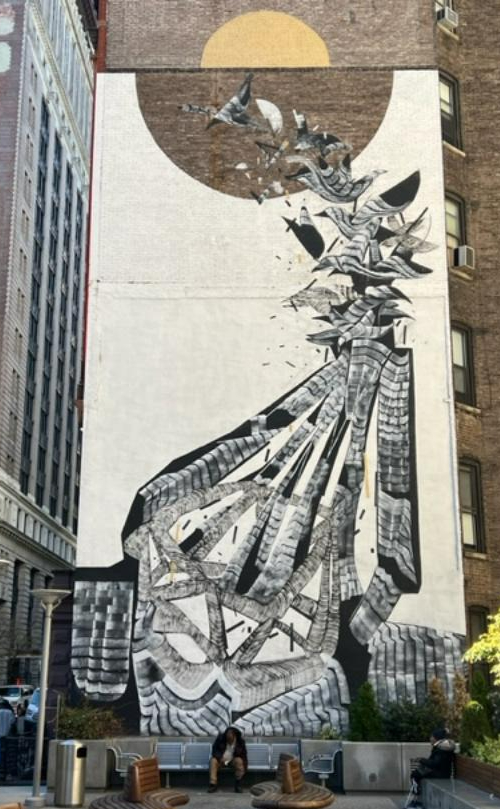
The mural is on the corner of East 24th & Lexington Avenue-The St. Francis Residence Building

Artist Jacopo Ceccarelli
http://doartfoundation.org/index.html@p=3375.html
The Milan born street artist, who goes by the name “Never 2501” hones his skills after moving to San Paolo, painting murals with an edge that got global recognition. He uses geometric forms in his work with circles and lines creating the abstract (Do Art Foundation).
As I walked Lexington Avenue, it was like visiting an old friend. I had not walked around Kips Bay, which shares the border with the Flatiron District in a long time. The Baruch College promenade had finally been finished and students in their summer classes were hanging out there.
Restaurants that had shuttered when I was walking around the neighborhood had finally reopened and catering to the students and hotel guests in the area. I still did not see a lot of office workers, but the tourists have definitely come back to Manhattan. I have heard many languages on the streets.
As I walked back down East 24th Street, I noticed buildings that I had seen on walks in the neighborhood come back to life. It was nice to see people walking around the neighborhood again. As I crossed Park Avenue South, I saw the buildings that share the neighborhood with the NoMAD/Rose Hill neighborhood, and it looked like people were coming and going that afternoon.
As I walked closer to Madison Square Park, I noticed the large vault entrances to 11 Madison Avenue, the old Metropolitan Life North Building that had just been renovated. There was also the beauty of 5 Madison Avenue that now serves as the New Edition Hotel.
It was designed by architects Napoleon LeBrun & Sons inspired by St. Marks Campanile in Venice. From 1909 to 1913 this was the Metropolitan Life Insurance Company Tower building. It was once the tallest building in the world until 1913 when the Woolworth Building was finished (Curbed.com/Wiki).
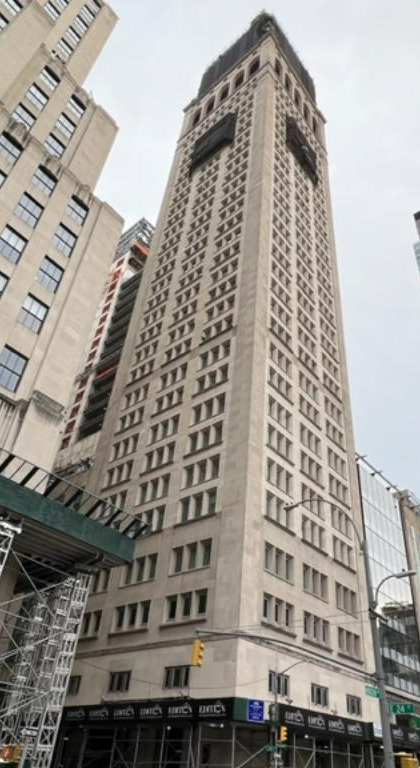
5 Madison Avenue-The New Edition Hotel
https://en.wikipedia.org/wiki/Metropolitan_Life_Insurance_Company_Tower
https://www.editionhotels.com/new-york/
Review on TripAdvisor:
I remembered these impressive buildings facing Madison Square Park on my last visit to the neighborhood as they share the same borders with NoMAD (North of Madison Square Park) and Rose Hill Farm neighborhood.

11 Madison Avenue-Met Life North Building
https://en.wikipedia.org/wiki/Metropolitan_Life_North_Building
https://www.sapir.com/11-madison-ave-2
Owned by the Sapir Corporation now, the building was built in 1929 at the start of the Great Depression and was designed by architects Harvey Wiley Corbett and D. Everett Waid. It was built in the Art Deco style with clean lines and interesting embellishments on the interior of the building (Wiki). It is now home to many well-known companies (Wiki/Sapir Corporation).
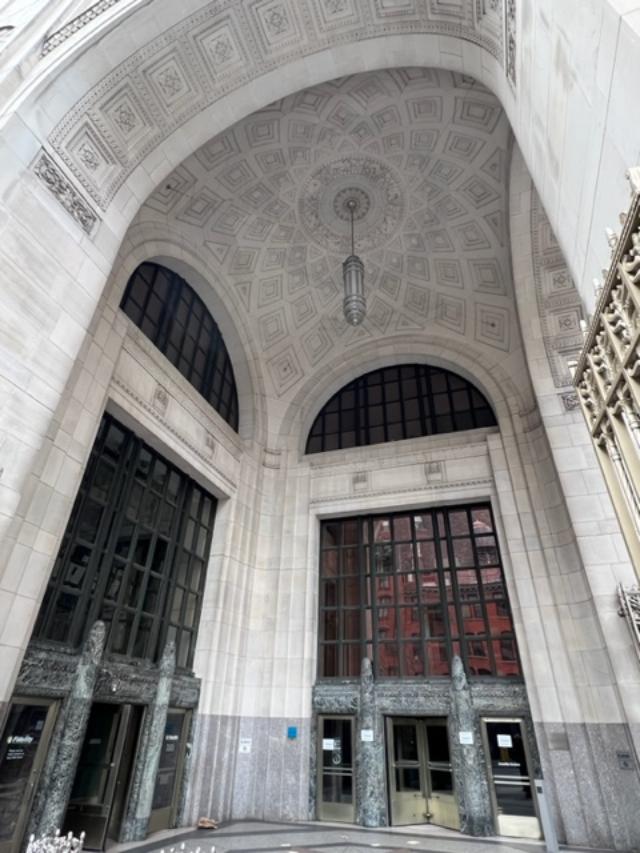
The details in the entrance of 11 Madison Avenue
I crossed the park again and made my way back down West 24th Street. I rounded the corner on West 23rd Street to see many striking gems along this street as well. On the corner of Sixth Avenue and West 23rd Street is 701 Sixth Avenue, the old Ehrich Brothers Department Store. The building was constructed in 1889 by architect William Schickel & Company with additions by Buchman & Deisler and Buchman & Fox in 1889 (Wiki).
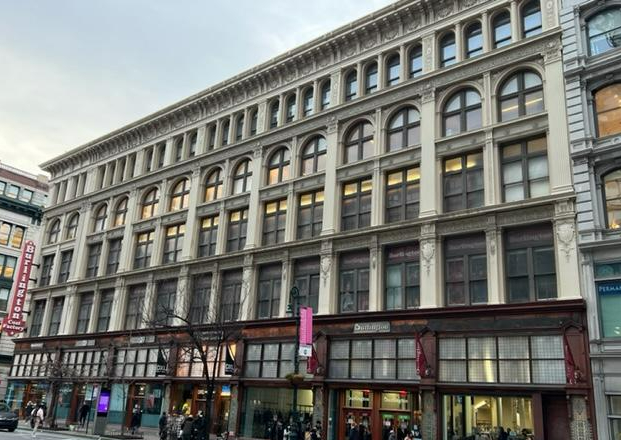
Ehrich Brothers Department Store building at 701 Sixth Avenue (Wiki)
http://wikimapia.org/8876315/Ehrich-Brothers-Co-Department-Store-Building
http://daytoninmanhattan.blogspot.com/2011/06/1889-ehrich-brothers-dry-goods-store.html
Another addition was added by Taylor & Levi in 1911 when the store was leased to J.L. Kesner. They added the terra cotta “K”s that can still be seen from the top of the storefront. The store folded in 1913 and then was used for manufacturing and offices as the shopping district moved to 34th Street and the Fifth Avenue area (Wiki).
At the corner of the neighborhood on Sixth Avenue and West 23rd Street at 100 West 23rd Street is the second Macy’s Department Store building. This was on the very edge of the Ladies Shopping Mile that once stretched along Sixth Avenue.
The building was built in 1871 and you can see all the elaborate embellishments on it with interesting stone carvings and elegant window design and some wrought iron details on different parts of the building. It was the last location of the store before it moved to its current location at 151 West 34th Street.
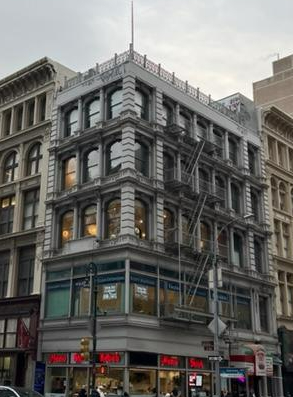
100 West 23rd Street (Renthop.com) is an old Macy’s
https://www.renthop.com/building/100-west-23rd-street-new-york-ny-10011
Across the street on the other corner is The Caroline building at 60 West 23rd Street. This inventive new building showcases the future of the neighborhood and was once home to the former McCreery’s Department Store.
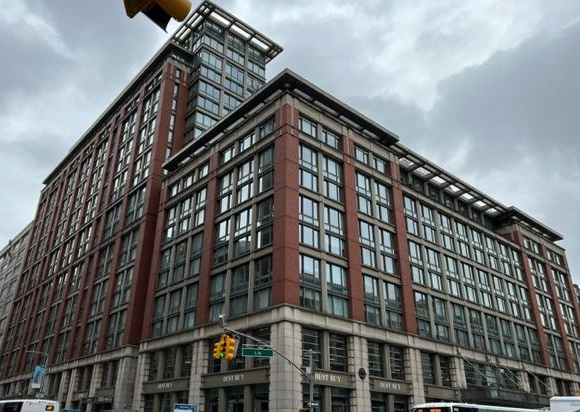
The Caroline Building at 60 West 23rd Street
https://streeteasy.com/building/the-caroline-60-west-23-street-new_york
https://ephemeralnewyork.wordpress.com/tag/defunct-department-stores/
The stretch of West 23rd Street from Sixth to Fifth Avenues was once lined with elegant department stores and specialty stores extending this ‘Shopping Mile’ to the retail palaces of Broadway above Union Square.

The plaque outside the Carolina Building

The “William Shakespeare” that once stood at the Booth Theater from the 1800’s
One of my favorite buildings that stands out and was the filming spot for ‘McMillian Toys’ in the movie “Big” is the former Sterns Brothers building at 36 West 23rd Street. You have to look on the opposite side of the street to appreciate the beauty of the building.
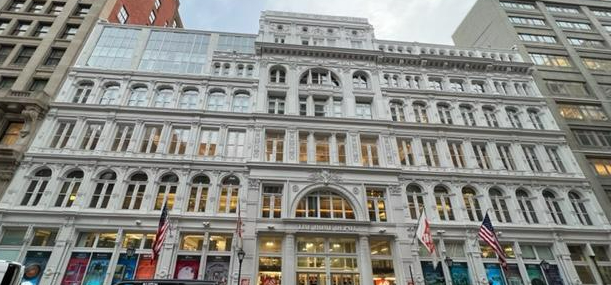
36 West 23rd Street-The Sterns Brothers store
http://daytoninmanhattan.blogspot.com/2010/12/stern-brothers-dry-goods-west-23rd.html
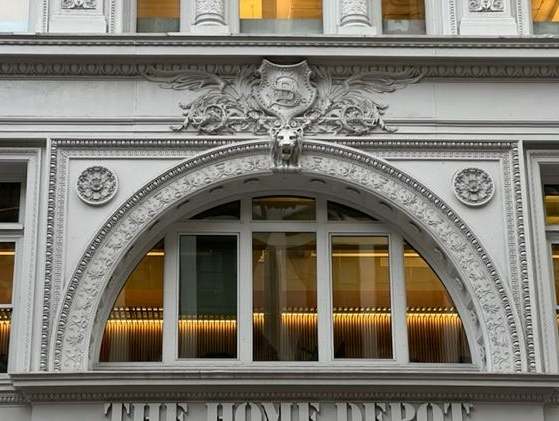
The beautiful detail work above the entrance of the former Stern’s Brothers Department store
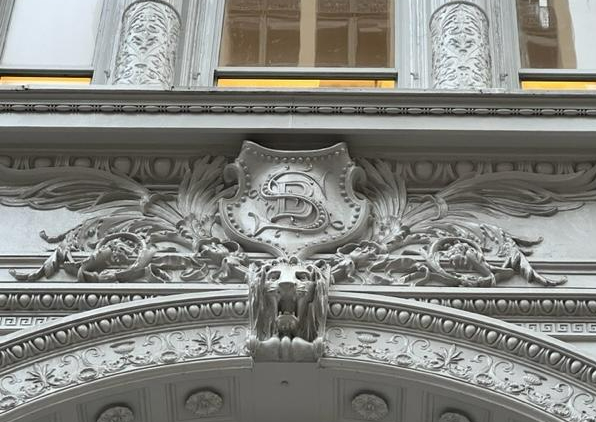
The stonework is amazing
The Stern’s Brothers Department store was built in five stage over a period of forty years. The original store which is the core of the building was built in 1878, where this magnificent entrance is located and the two wings of the building were built with the success of the store. The original store was designed by German architect Henry Fernbach in the Renaissance Revival style (Daytonian).
The store was added to two more times with the final addition coming in 1892 with an extension by architect William Schickel. When the migration of department stores moved to the new shopping district on 34th Street, Stern’s moved with it. The store today is Home Depot.
On the corner of Fifth Avenue and 23rd Street is 186 Fifth Avenue, which was built for the Western Union Telegraph Company in 1883.
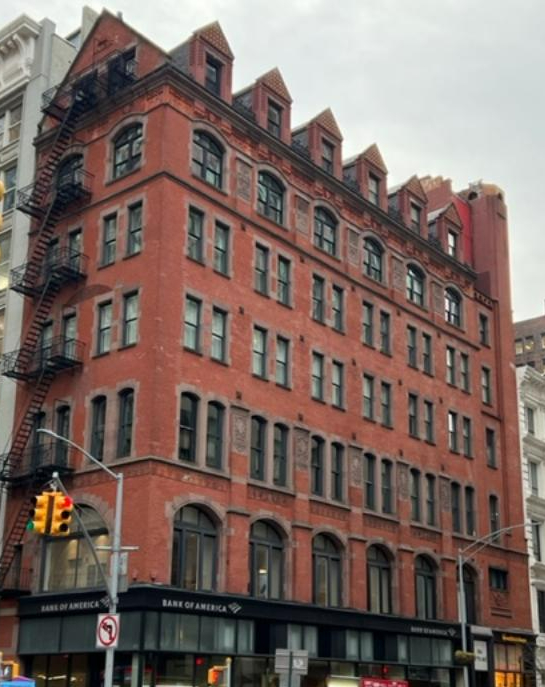
The Western Union Building on the corner of West 23rd Street and Fifth Avenue is 186 Fifth Avenue
https://www.cityrealty.com/nyc/flatiron-union-square/186-fifth-avenue/39081
http://daytoninmanhattan.blogspot.com/2019/02/the-1883-western-union-building-186.html
The building was designed by architect Henry J. Hardenberger in the Queen Anne style with its details being in brick and terra cotta (Daytonian in Manhattan). The building just finished a restoration, and you can see the details by the windows and dormers.
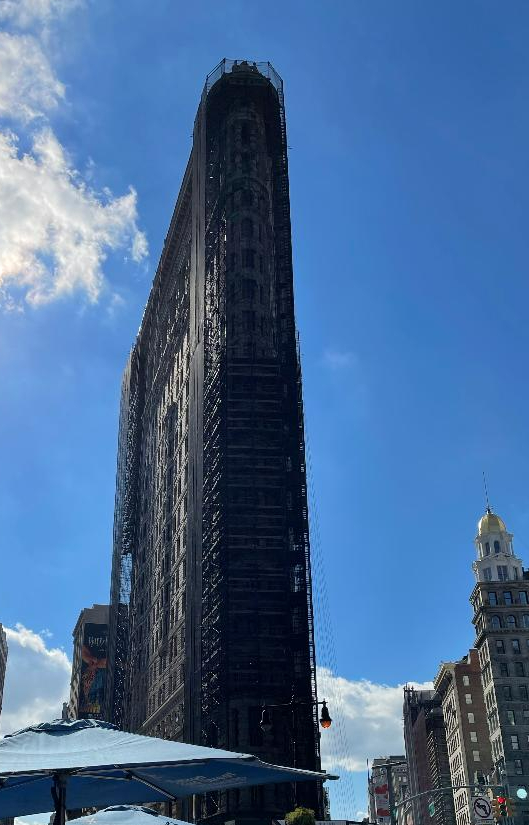
The Flatiron Building at 175 Fifth Avenue over the summer in all its glory
As you look down further on the square, you will see the Flatiron Building one of the most famous and most photographed buildings in New York City. The building was designed by Daniel Burnham as a Renaissance Palazzo with Beaux-Arts style. The original name for the building was the “Fuller Building” for the Company. The name “Flatiron” comes from a cast iron clothes iron from the turn of the last century. (Wiki)
During the summer, street art created by both local and international artists are a big part of the decor on Broadway. This interesting work “Dancer” was by artist Tomokazu Matsumaya and was on display in the plaza next to the Flatiron Building.

The interesting artwork “Dancer” by artist Tomokazu Matsuyama in the 23rd Street Plaza next to the Flatiron Building during the summer months
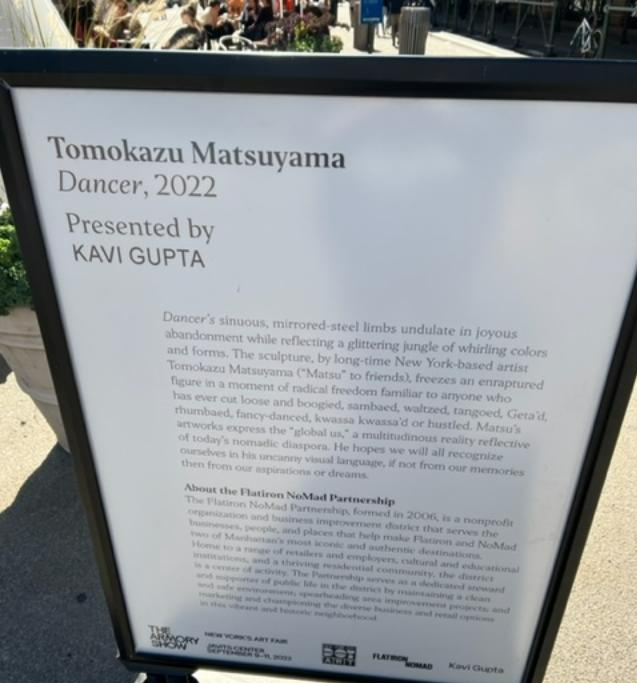
The work by artist Tomokazu Matsuyama (gone by December 2022)
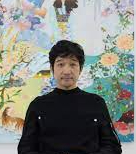
Artist Tomokazu Matsuyama
Artist Tomokazu Matsuyama is a Japanese Contemporary Visual artist from Japan who now lives in Brooklyn. He graduated from Sophia University in Tokyo and then attended Pratt Institute where he got his MFA in Communications Design. His influences are in global arts and is known for his sculptures (Wiki/Bio).
East 23rd Street that faces Bryant Park is a very commercial district with many interesting restaurant concepts from chain restaurants to independents that want to become chains. During the summer as it ended before school started, around the holidays I was able to eat in most of them. These places cater to the businesses that surround Madison Square Park and the families that come into the park to walk their dogs and use the playgrounds and dog parks.

The 23rd Street “Restaurant Row” south of Madison Square Park
The McDonald’s at 26 East 23rd Street is always popular and is open late nights. The food and the service is really good here.
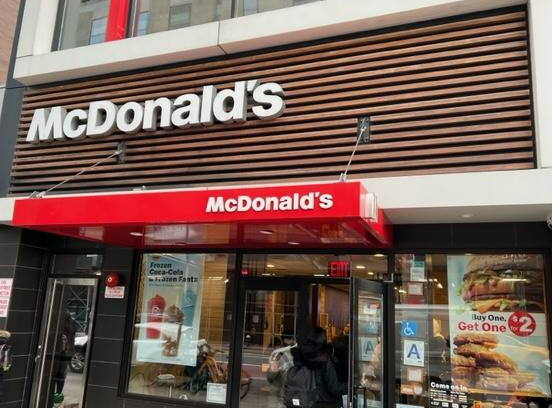
McDonald’s at 26 East 23rd Street
https://www.mcdonalds.com/us/en-us/location/ny/new-york/336-e-23rd-st/2241.html
My review on TripAdvisor:
My review on DiningonaShoeStringinNYC@Wordpress.com:
https://wordpress.com/post/diningonashoestringinnyc.wordpress.com/541
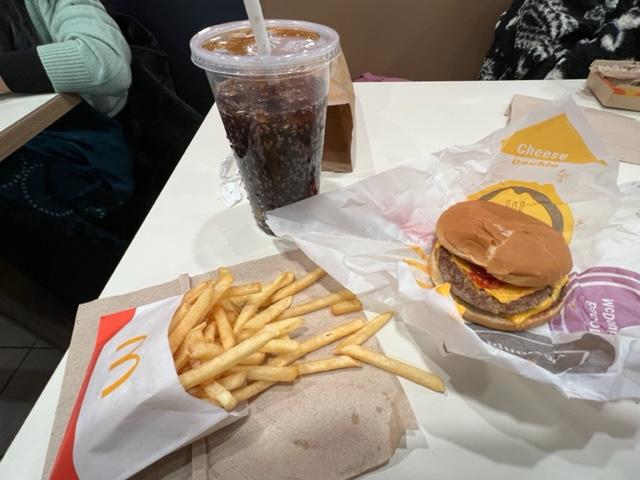
I still love the Bundles when they are offered.
Next to McDonald’s at 28 East 23rd Street is Dim Sum Sam, a dim sum restaurant that now has four locations in New York City. The only problem with this restaurant is that the further they move uptown from Chinatown, the higher the prices go for Dim Sum. A Roast Pork bun, although really good, is getting to be almost $3.00 instead of the $1.50-$2.00 it is in Chinatown. I know rents are more up here but there is only so much people will pay for this. Still the food is really good and when I can’t make the trip to Chinatown, this is my go to place.
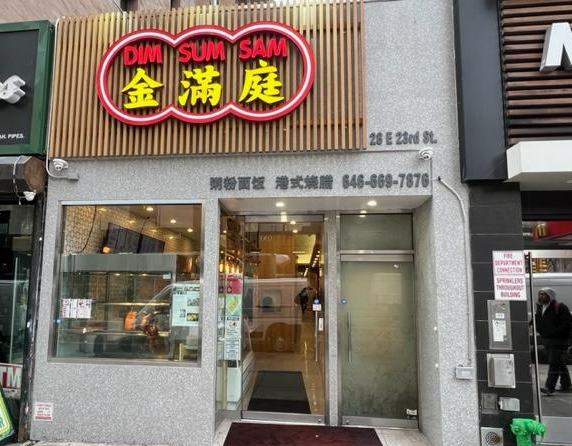
Dim Sum Sam at 28 East 23rd Street
https://www.zmenu.com/dim-sum-sam-new-york-online-menu/
My review on TripAdvisor:
Another local chain with several restaurants in New York City is Little Italy Pizza at 34 East 23rd Street. Their pizza, calzones and rolls are the best in all of their locations. They are also very reasonable for all their meals in all of their locations.
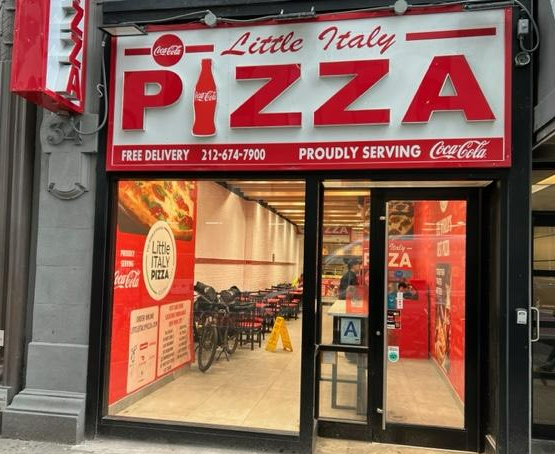
Little Italy Pizza at 34 East 23rd Street
https://www.littleitalymenu.com/
My review on TripAdvisor:
My review on DiningonaShoeStringinNYC@Wordpress.com:
https://wordpress.com/post/diningonashoestringinnyc.wordpress.com/898
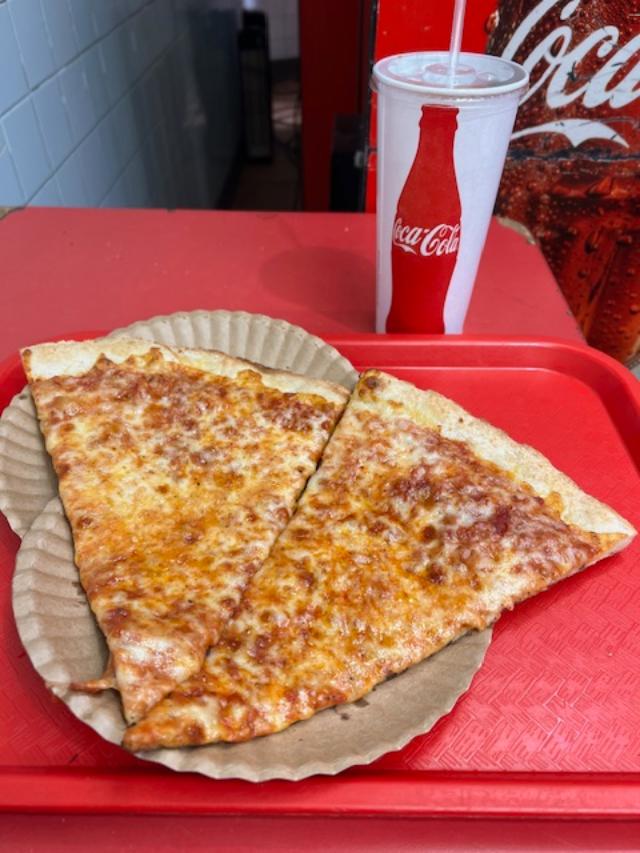
The Cheese Pizza here is excellent.
Next to Little Italy Pizza is another chain store delight, Krispy Kreme Doughnuts, whose fried and iced doughnuts are the best. I was munching on a Lemon filled and Chocolate iced while I was walking around.
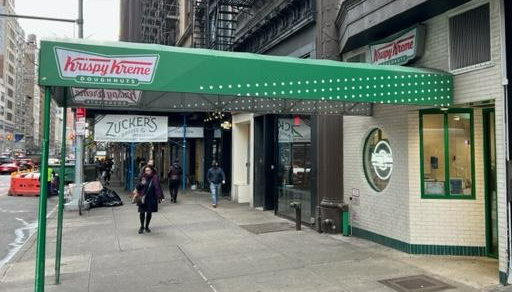
Krispy Kreme Doughnuts at 36 East 23rd Street
https://site.krispykreme.com/ny/new-york/36-e-23rd-st
My review on TripAdvisor:
Further down the block is the new IHOP concept Flip’d by IHOP at 110 East 23rd Street. It carries items such as burgers, breakfast bowls and of course, pancakes. The day I was there one of the workers daughter was doing her homework while talking to her mother who was cooking the pancakes. It was a cute exchange between mother and daughter.

Flip’d by IHOP at 110 East 23rd Street
My review on TripAdvisor:

The Hamburger and French Fries at Flip’d are really good and I enjoyed my meal on my last trip there
The afternoon that I was there in the summer, Madison Square Park was really busy with people sunning themselves and walking their dogs. The afternoon lunch crowd was sharing the benches with nannies and moms and a few homeless people edging their way onto the benches. In the Fall, it was people eating lunch and walking their dogs. By Christmas, with the mild weather, people were still walking their dogs, admiring the lights and tourists coming back to the City were filling the tables of the decorated Shake Shack.
When I went to visit the Christmas tree again during the day in December, I came across this interesting sculpture to add to what is already in the park.
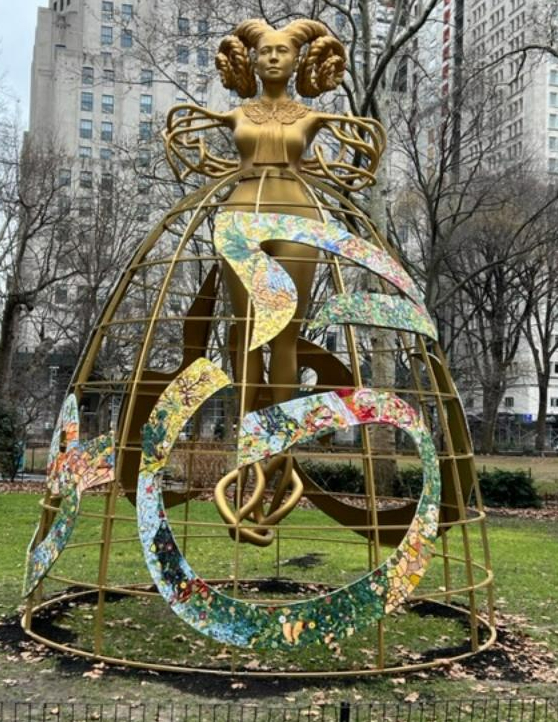
The statue ‘Havah…to breathe, air, life ” in Madison Square Park
Artist Shahzia Sikander is a Pakistani-American visual artist. She specializes in drawing, painting, printmaking and animation. She is a graduate of the National College of Arts Lahore in Pakistan and a graduate of Rhode Island School of Design in a MFA in Painting and Printmaking.

Artist Shahzia Sikander
https://www.shahziasikander.com/
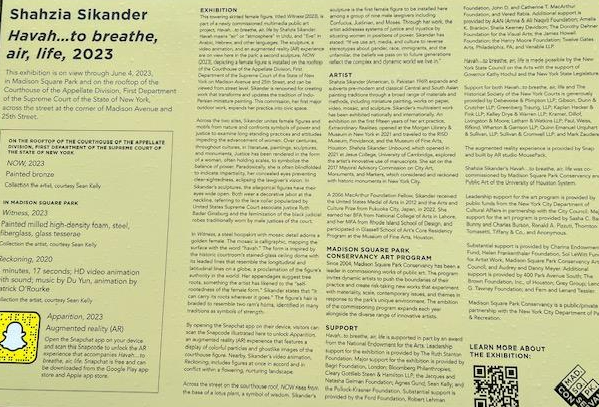
This fascinating sculpture will be in Madison Square Park for a limited amount of time. The storyboard above has a description of the statue. This adds a whole new dimension to the sculptures that line the park.
As you round the block again down East 23rd to West 23rd (with Fifth Avenue always being the dividing line) and you will see on the right is the beauty of 29 West 23rd Street. This turn of the last century building is now renovated and the home of Iron23, an event space.

29 West 23rd Street-now the Flatiron House
This elegant entertaining space can now be used for parties and events with long halls and high ceilings showing off it elegant features. A few doors down is another interesting building with the most unique and interesting details to the ornamentation of the building at 39 West 23rd Street.
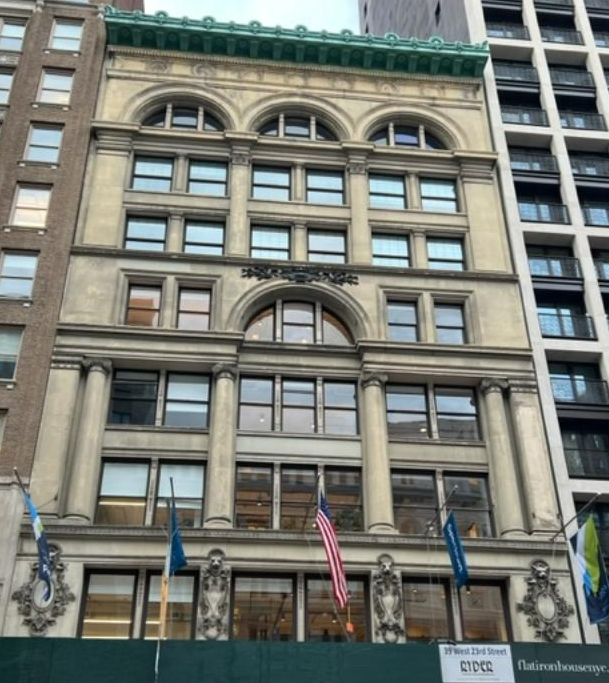
39 West 23rd Street
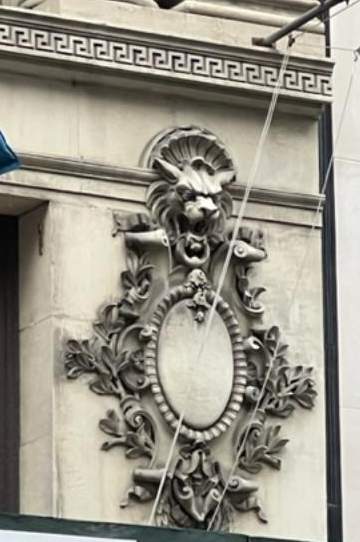
The detail work of 39 West 23rd Street towards the far right of the building
It is attached to the two buildings to the left and please check out the attached website to see the interiors. They have really created something special inside these buildings. It is a creative use of old and new in the same building as it is now an elegant condo complex.
When you turn the corner again on Sixth Avenue, you are again faced with the lining of old department store buildings on both sides of the street and the elegant facade of the Ehrich Brothers Department Store to the the right that stretches from West 23rd to West 22nd Streets as you start the walk down West 22nd Street back to Park Avenue South.
Among the architectural gems of West 22nd Street is 7 West 22nd Street, The Spinning Wheel building. This elegant building was built in 19010-story Neoclassical/Renaissance-revival office building completed in 1901. Designed by architect James Barnes Baker as a store-and-loft building, it is three bays wide, with a 2-story rusticated limestone base, a 7-story arcaded midsection, and a 1-story attic. Over the entrances in the building’s end bays, “Spinning Wheel Building” is written in the cast-iron entablature. A limestone cornice with egg-and-dart molding caps the 2nd floor (Wiki).

7 West 22nd Street
https://www.loopnet.com/Listing/3-7-W-22nd-St-New-York-NY/22852967/
https://www.realtyhop.com/building/7-west-22nd-street-new-york-ny-10010
http://wikimapia.org/29288370/Spinning-Wheel-Building
Walking closer to the edge of Fifth Avenue is the detailed 4 West 22nd Street. This beautiful commercial building was built in 1904. Serving as an office building in the beginning, it is now a apartment rental with interesting floor plans to choose from.

4 West 22nd Street
https://streeteasy.com/building/4-west-22-street-new_york
https://www.cityrealty.com/nyc/flatiron-union-square/4-west-22nd-street/4642
At the edge of the neighborhood’s border with Gramercy Park is the unique 278 Park Avenue South. Which once served as a bank is now a gourmet grocery store for residents on the Flatiron /Gramercy Park neighborhood.
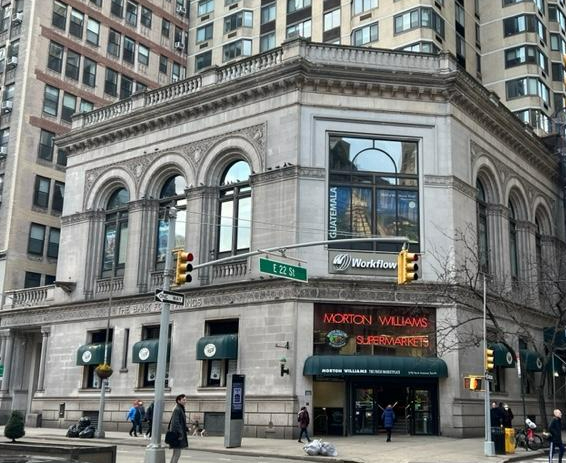
278 Park Avenue-The Bank for Savings Building
https://www.propertyshark.com/mason/Property/13116/280-Park-Ave-S-New-York-NY-10010/
https://www.mortonwilliams.com/our-locations
Known today as Gramercy Place, the property at 278 Park Avenue South was once the location of the New York Bank for Savings. The original bank building was completed in 1894 and though it was subsequently knocked down, the 1986-built Gramercy Place still showcases elements of the original building, including the marble and teak lobby (Propertyshark.com). It is now home to the Morton Williams Supermarket.
Across Park Avenue South from the former bank is 281 Park Avenue-The Fotograski Museum New York and the former Church Mission House. It was designed by architects Robert W. Gibson and Edward J. Neville and was finished in 1894. It was home to the Episcopal Church’s Domestic and Foreign Missionary Society. It was inspired with a Medieval style design (Wiki).
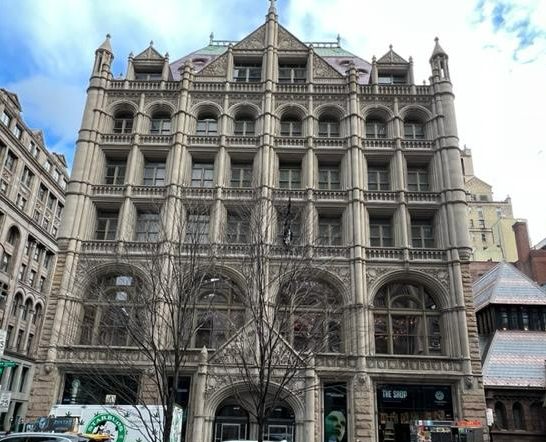
281 Park Avenue-The Fotograski Museum on the edge of Park Avenue South and East 22nd Street
https://www.fotografiska.com/visit
https://en.wikipedia.org/wiki/Church_Missions_House
The History of the Fotografiska Museum:
(from the museum website)
Fotografiska New York is the NYC location of the renowned Stockholm-based destination for the world’s best photography. Founded in 2010, Fotografiska was built on the foundation of photography as a haven for inclusivity and free expression.
The Fotografiska Museum in Manhattan
Our goal is to inspire a more conscious world through the art of photography. We showcase the greatest photographers, whether they’re emerging artists or already established internationally.

The building is a registered landmark built in 1894 and originally named “The Church Mission House”. We’ve renovated this iconic jewel to be a new experience of world-class art, cultural events, retail, and epicurean dining, in an awe-inspiring space.

The Dining area of the Fotografiska Museum
The Fotografiska Museum is the latest museum to enter the very crowded collection of museums in Manhattan. The beauty of this museum is that artist has a say of how the show is mounted which gives an interesting perspective to viewing shows here.

My “Trends in Tourism” class at NYU when we visited the museum in October 2022.
I headed back down East 22st Street, I passed all this interesting architecture and thought back to the architects who designed it, the period it was created and how it was being refigured into modern times for new businesses and living spaces.
As I crossed Sixth Avenue again to East 21st from East 22nd, I admired the old department store buildings again and stopped in front of the old Adams Dry Goods building at 675 Sixth Avenue and looked up at all the beautiful embellishments.
Samuel Adams, a merchant who had been selling upscale clothing and furnishing to customers in the area decided to open a store on Sixth Avenue. He used the architectural firm of DeLemos & Cordes, who had designed the Seigel-Cooper Department Store and the six-story building opened in 1902. The store was the first in New York City to use the new Pneumatic tubes to transport money and messages throughout the store (Wiki).

Adam’s Dry Goods Store when it opened in 1902
http://daytoninmanhattan.blogspot.com/2010/10/1900-adams-co-building-675-sixth-avenue.html
http://wikimapia.org/16882716/Adams-Dry-Goods-Store-Building
The problem with the store was its location. He built the store at the very edge of the neighborhood as the business changed. As the shopping area started to decline in the early 1900’s, Adams sold the store to Hugh O’Neill Dry Goods Store and they merged the two companies together, converting three floors of the Adams Dry Goods store to furniture. This concept was not popular as well and the businesses failed, and the store closed in 1913 (Wiki & the tour guide).
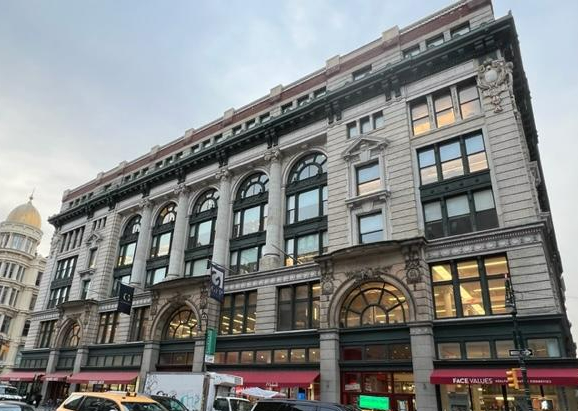
Adams Dry Goods Store today at Sixth Avenue between West 21st and 22nd Streets
The store has gone through a manufacturing stage and in the 80’s became part of the change to large box retailing. The building now houses eBay and several stores including Trader Joe’s and Michael’s. As we could see on the tour, the old department stores are finding new life in retailing.
The detail work of the old Adams Dry Goods Store at 675 Sixth Avenue
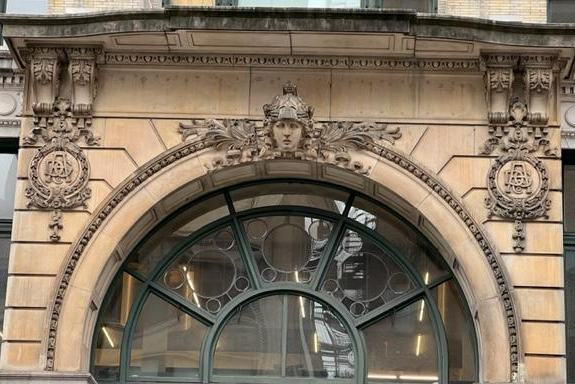
675 Sixth Avenue-The Adams Dry Goods Store

The store that sits to the right is the former Adams Dry Goods Store at 675 Sixth Avenue between West 21st and 22nd Street.
When I crossed Sixth Avenue again, as I was walking down West 21st Street and faced the beauty of the former Hugh O’Neil Department Store between West 21st and 20th Streets.
Our next stop was in front of Hugh O’Neill’s Dry Goods Store at 655 Sixth Avenue between West 20th and 21st Streets. It was built by the firm of Mortimer C. Merritt in the neo-Greco style who built the four stages of the building between 1887-1890 (Wiki & the tour guide).
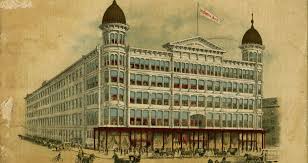
The Hugh O’Neill Store when it opened in 1890
https://en.wikipedia.org/wiki/O%27Neill_Building
Hugh O’Neill had started a small dry goods business right after the Civil War in 1865 with a small store around Union Square. In 1870, he decided to build a trade on the middle market customer and offered discounts on goods. The four floors of merchandise contained laces, ribbons, clocks and on the upper floors women’s and children’s clothing (Wiki).
When O’Neill died in 1902, the shopping area had just begun its decline and in 1906 it merged with Adams Dry Goods up the block. A year later they both went out of business as the area gave way to manufacturing. The building today has been converted into condos.

The Hugh O’Neill store today
As I walked down West 21st Street, I was greeted by 30 West 21st Street. Like most of the buildings in the district, it has almost a confection look to it. It is amazing how the renovations of these buildings over the last three years have brought back their original beauty. Built in 1907, this confection has been renovated to office space in recent years.
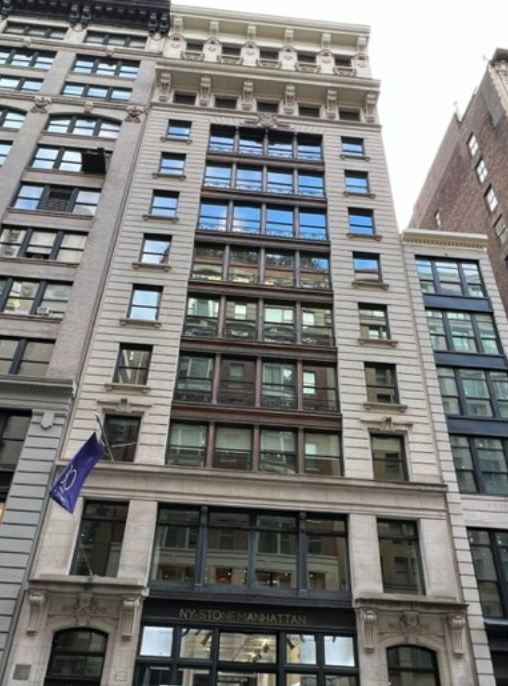
30 West 21st Street
https://www.loopnet.com/Listing/30-W-21st-St-New-York-NY/16081709/
https://streeteasy.com/building/alma-lofts
This beautiful turn of the last century building was once Danceteria, a trendy after hours club from 1980 to 1986. It had been one of the popular after hours clubs in Manhattan and the Hamptons. In 2008, the building was sold for renovation for office space and condos (Wiki).
Danceteria:
https://en.wikipedia.org/wiki/Danceteria
This famous scene of “Desperately Seeking Susan” was shot at 30 West 21st Street
Down the street as you are approaching Fifth Avenue, I passed the costume company Abracadabra at 19 West 21st Street. When I entered the store around Halloween, the store was extremely busy with customers walking around choosing costumes and the staff restocking the store and helping people with their selections. While I was admiring the displays, one of the staff members said he would turn them on so that I could see how they behave. I felt like I had just entered a torture chamber in a haunted house.

Abracadabra at 19 West 21st Street
My review on TripAdvisor:
My review on LittleShoponMainStreet@Wordpress.com:
https://wordpress.com/post/littleshoponmainstreet.wordpress.com/1800
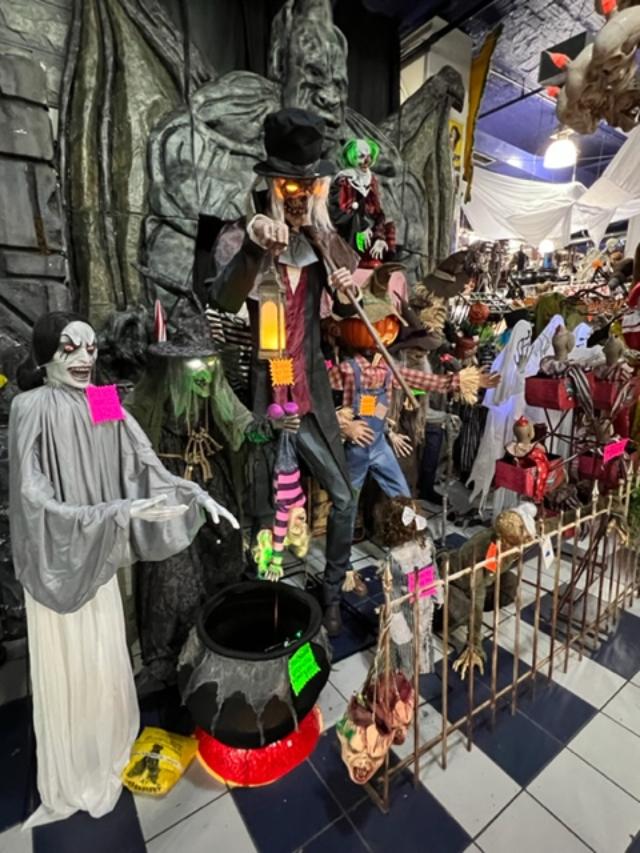
Abracadabra front display
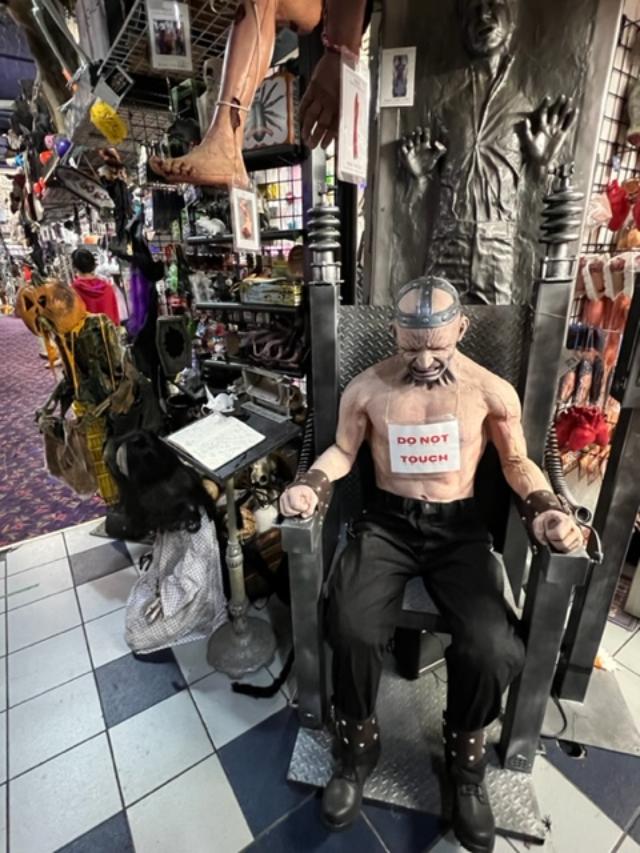
Abracadabra front display. This man really looks like he is getting electrocuted
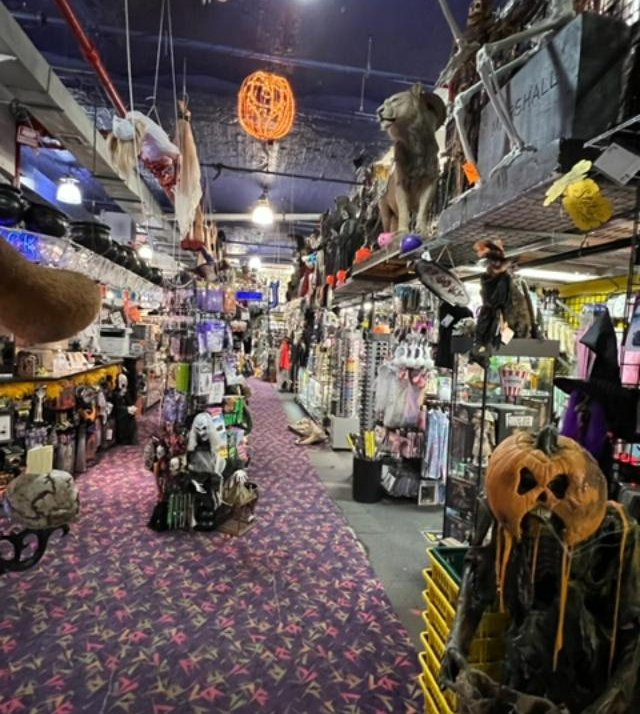
Abracadabra has a wonderful selection of costumes, props and decorations
Abracadabra is one of those stores that just stands out when you walk in. Every day is Halloween when you walk in the door and everything is there to shock and amaze you. It is a interesting blend of theater, imagination and creativity that makes the store come to life. Even the staff walk around in masks and costumes showing off the merchandise. Many I am sure are actors and artists using their own sense of style to show the costumes off.
There is no lack of interesting costumes to try on or accessories to match them. When you enter the store you are overwhelmed by the selection of items to choose from. Each section of the store dedicated to a certain type of costume. When you head downstairs, you so a lot of the makeup and masks that use to finish a outfit. You will walk around the store with a sense of wonder of walking into a funhouse. The store is an experience.
The core of the Flatiron District really is Fifth Avenue with all its elegant and detailed buildings. As you cross Fifth Avenue to East 21st Street the beauty of 160 and 141 Fifth Avenue really standout.
160 Fifth Avenue was designed by architect R.H. Robertson in 1891 and was previously home to the offices of McKim, Mead and White architectural firm. Throughout the 1920’s, the building served as headquarters for E.H. Van Ingen & Company, a large importer of woolen goods. It is now as modern office space with a rooftop garden (Medas.com).
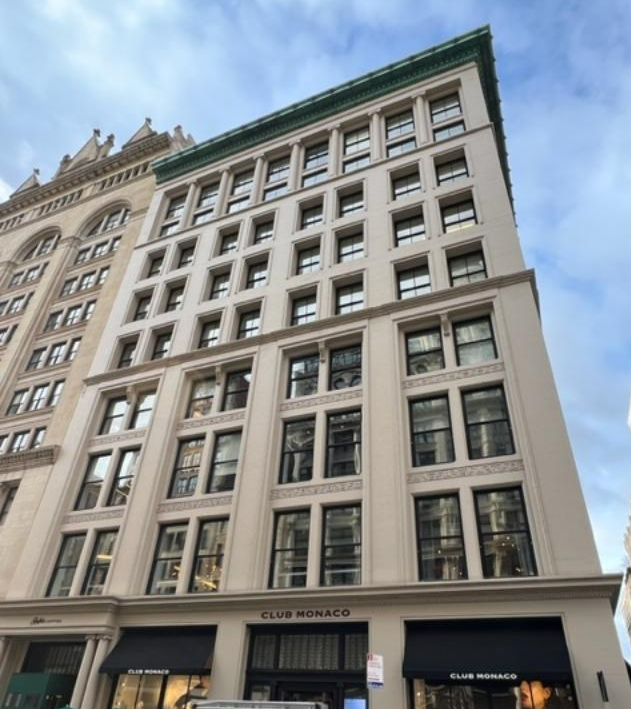
160 Fifth Avenue
https://www.mdeas.com/160-fifth-ave
Walking past Fifth Avenue is 141 Fifth Avenue another confection of architecture. This gorgeous building was built in 1897 by architect Robert Maynicke, who had also designed Sohmer Piano Building at 170 Fifth Avenue, in the Beaux Arts style for the Merchant Bank of New York (Flatironnomade.nyc/fsiarchitecture.com).

141 Fifth Avenue
141 Fifth Avenue-The Merchants Bank of New York Building
http://www.fsi-architecture.com/building-renovations/141-fifth-avenue-new-york-ny
https://streeteasy.com/building/141-fifth-avenue-new_york
This impressive bank has recently been converted to luxury apartments with a current one sold at over three million dollars.
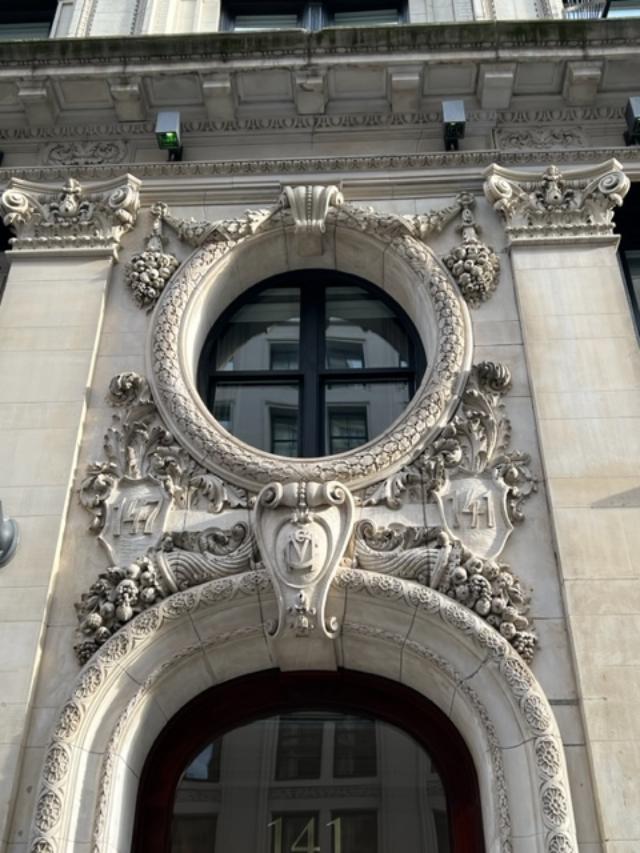
The detail work of 141 Fifth Avenue
When I passed 21 East 21st Street, I admired the elegance of this building that looked like an old mansion. It was built in 1900 as an apartment building and is now high end condos. The beauty of the details and the red color makes the building really stand out amongst the others on the block.
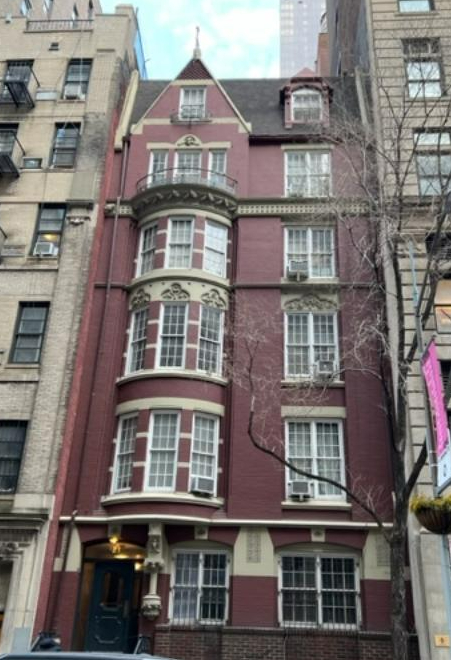
21 East 21st Street
https://streeteasy.com/building/21-east-21-street-new_york
https://www.apartments.com/21-east-21st-street-new-york-ny/5gexbgp/
Just a few steps down the block is 24 East 21st Street with a smiling face guarding the door. This former commercial building was built in 1930 and has been converted into apartments called Infinity Flats. You have to look at the detail work around corniche area of the roof and around the entrance. The building is detailed and elegant.
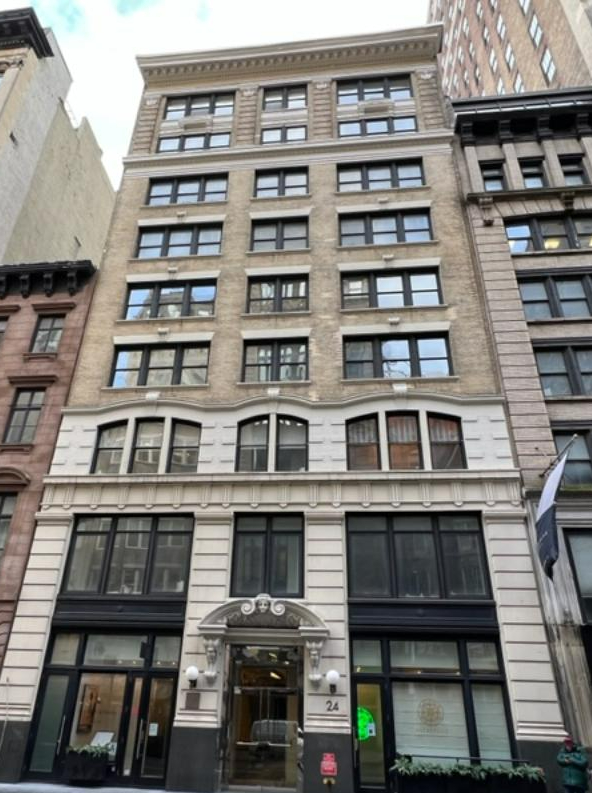
24 East 21st Street
https://www.cityrealty.com/nyc/flatiron-union-square/infinity-flats-24-east-21st-street/review/34921

24 East 21st Street
Further down East 21st Street I walked past the detailed confection of 32 East 21st Street. The beauty of this confection is the carved stone detail work around the lower windows and doorways. The building was restored and renovated and is now the home for Harding’s, a local upscale restaurant. The building was originally a printing press office.
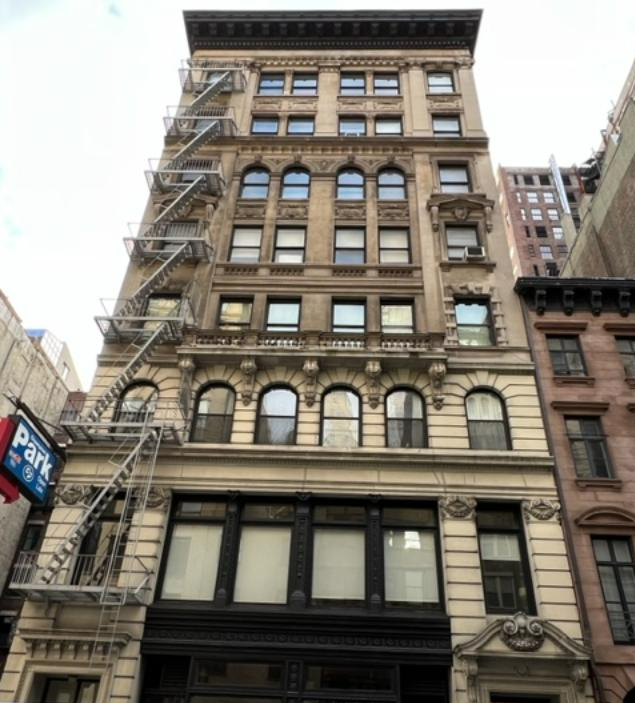
32 East 21st Street
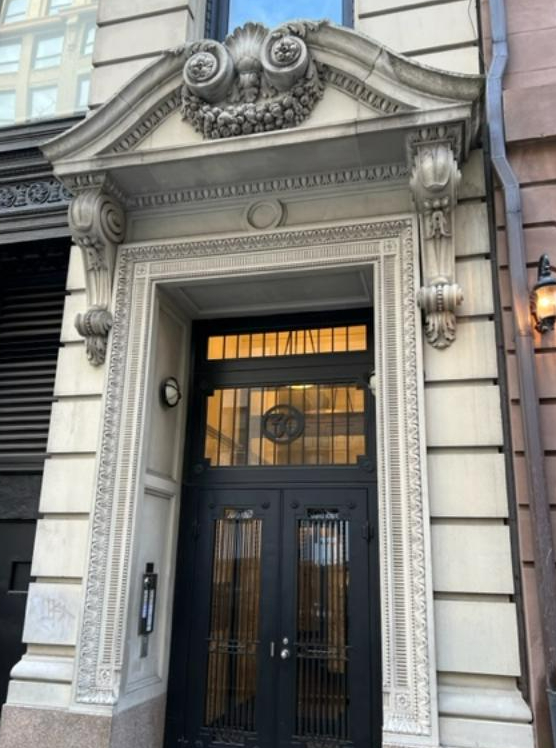
32 East 21st Street
The entrance to 32 East 21st Street now the home of Harding’s Restaurant
http://www.hardingsnyc.com/location
My review on TripAdvisor:
At the end of the block that borders the Flatiron District and Gramercy Park is a the historic The Parish of the Cavalry of St. George at 61 Gramercy Park North. The church stands guard between the old and new buildings of the neighborhood and sets the tone of many of the older buildings on the block that once housed religious centers.

Parish of the Cavalry of St. George at 61 Gramercy Park North
https://www.calvarystgeorges.org/
The parish was founded in 1749 and the church moved to this spot in 1846. It was said that Edith Wharton used this church as the inspiration for the church in “The Age of Innocence”. It was designed by architect James Renwick Jr. in the Gothic Revival style.
This particular walk took so much time to write because I had just finished my walk about a week before graduate school started at NYU. I got so caught up in the first weeks of classes that I had to put everything aside and concentrate on school. This actually gave me more time to explore the neighborhood and see all the details in the buildings. I really discovered the beauty of the Flatiron district.
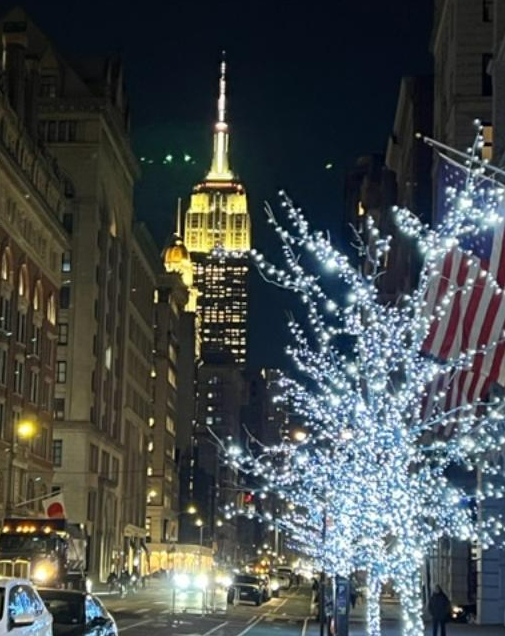
The Flatiron District at night walking through after classes
After my many walks through the streets of the Flatiron District and visiting Madison Square Park during the last several months, I decided to take the subway back to Chinatown again to try some restaurants that I wanted to add to my blogs.
I returned to some of the places I had tried in past weeks. I visited multiple times because I just wanted to try more items on the menu. The dumplings and baked goods that I had tried were wonderful and I wanted to try more items on the menu to make a comparison. Now that I had my new IPhone, I wanted to take more pictures and update blogs for readers.
I have been building up my blog, DiningonaShoeStringinNYC@Wordpress.com and wanted to see how many of them had stayed open post pandemic. Many of these little ‘hole in the wall’ restaurants are going strong as Chinatown is continuing to come back to life.
My blog “DiningonaShoeStringinNYC@Wordpress.com:
https://diningonashoestringinnyc.wordpress.com/
I started my walk in Chinatown at China North Dumpling at 27A Essex Street across from Seward Park for some fried dumplings. For ten large boiled dumplings that were really juicy and well cooked, four spring rolls and a Coke it was $7.00. Everything was so well made, and you can watch from the counter the ladies making the fresh dumplings right in front of you. The place is real bare bones, but the food and the service are amazing. Try to eat at the counter and watch everything get prepared.

China North Dumpling at 27A Essex Street located in the Lower East Side
http://www.china-north-dumpling.com/
My review on TripAdvisor:
My review on DiningonaShoestringinNYC@Wordpress.com:
https://wordpress.com/post/diningonashoestringinnyc.wordpress.com/2981
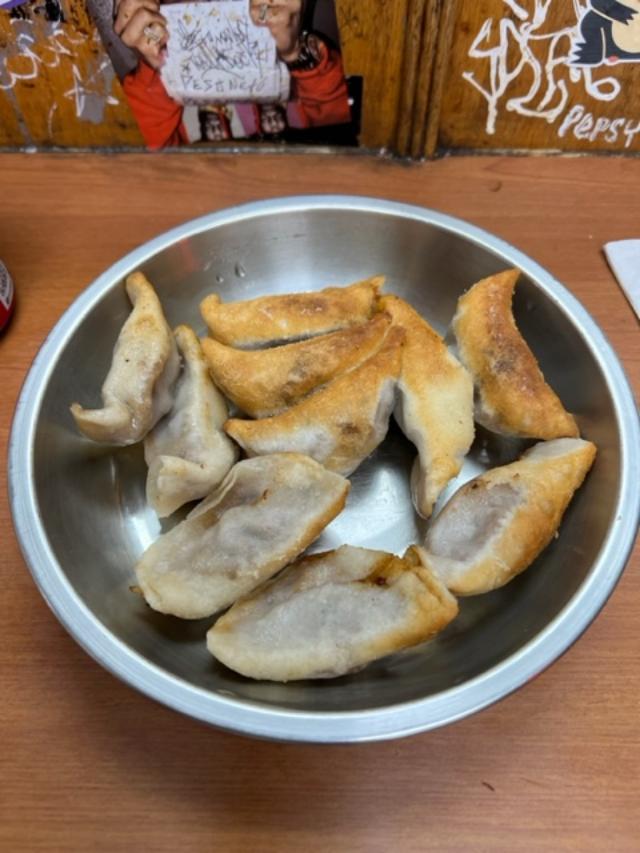
The Fried Dumplings here are excellent.
In needed something sweet after all the fried foods so I headed back to Yue Lai Bakery at 137 East Broadway to look for a baked pork bun. They had none left at that time of the day, but they were having a special on their baked goods three for $2.00 and I picked out a Coconut Bun, a Cream filled Bun and a Plain Bun.
They bagged it all up for me and I walked over to Sewart Park across the street and sat on the benches and ate them one by one. The Cream and Plain buns were really good and very sweet, and everything was so soft and well baked. I ended up sharing the Coconut Bun with the little birds in the park who surrounded me looking for a handout.
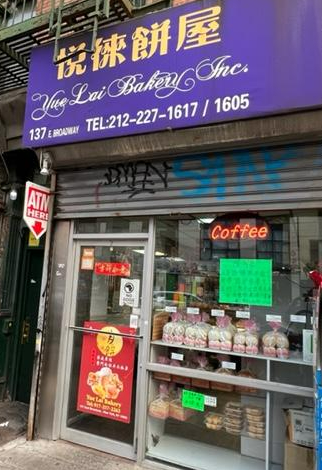
Yue Lai Bakery at 137 East Broadway
https://www.menupix.com/nyc/restaurants/250454930/Yue-Lai-Bakery-New-York-NY
My review on TripAdvisor:
My review on DiningonaShoeStringinNYC@Wordpress.com:
https://wordpress.com/post/diningonashoestringinnyc.wordpress.com/2996
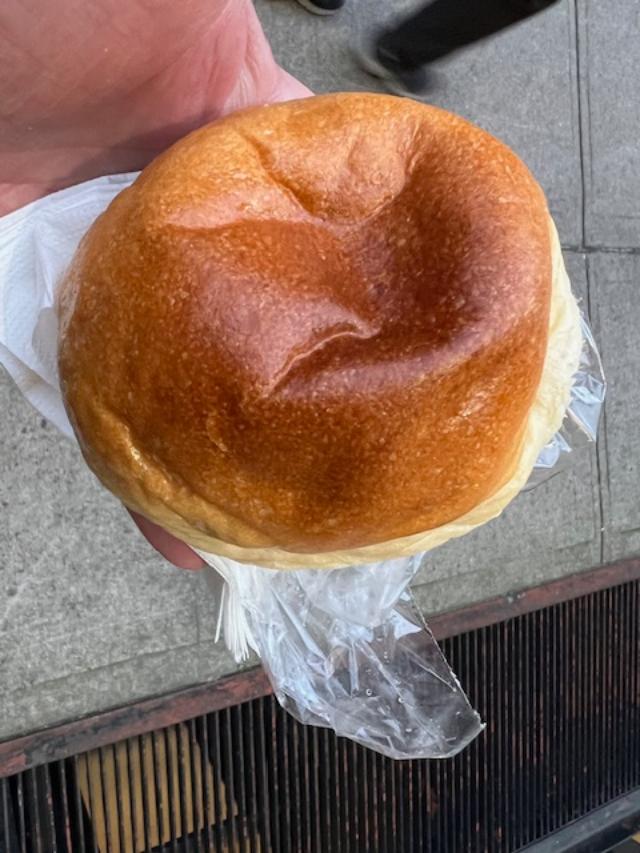
The buns here are delicious.
After a nice rest in the park and enjoying the sunshine and watching families play with their kids, I found myself still hungry. So, I walked down Hester Street from the park and made my way to King Dumpling this time for some steamed Pork and Chive Dumplings. For ten dumplings and a Coke it was only $5.00. The Steamed Pork & Chive Dumplings were excellent and again were freshly made right in front of us. They are large and well-cooked and burst with juiciness when you bite into them.

King Dumpling at 74 Hester Street
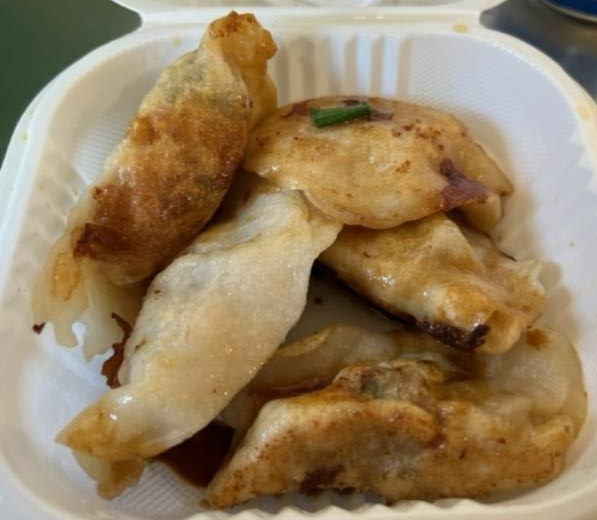
The Fried Dumplings here are excellent and made in front of you
https://www.facebook.com/pages/category/Chinese-Restaurant/King-Dumplings-358670851431724/
https://www.menupix.com/nyc/restaurants/31859492/King-Dumplings-New-York-NY
My review on TripAdvisor:
My review on DiningonaShoeStringinNYC@Wordpress.com:
https://wordpress.com/post/diningonashoestringinnyc.wordpress.com/2988
The place was packed with customers and people getting takeout. It is amazing to me how many people write about both King Dumpling and China North Dumpling and I had never really noticed them before. I saw them on a Fung Brothers “Cheap Chinatown Eats” video and then wanted to try them.
My last stop on the eating tour because even after twenty dumplings, four spring rolls, three pastries and three Cokes, I was still hungry and needed that baked pork bun. I found it at Happy Star Bakery at 160 East Broadway and it was just $1.75. Not the $3.50 in Midtown as I recently found at Dim Sum Sam in the Theater District. It was soft and chewy and filled with the most amazing, chopped pork and baked into a sweet dough. I barely made it out the door and I was finished with it.
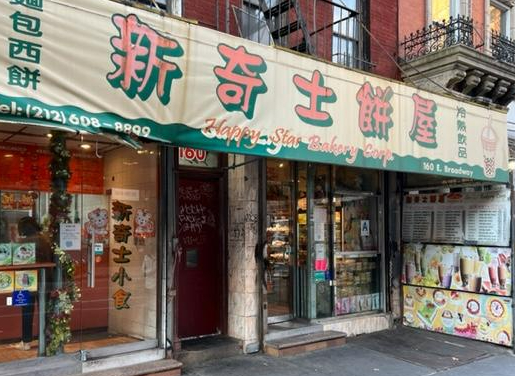
Happy Star Bakery at 160 East Broadway
https://zmenu.com/happy-star-bakery-corp-new-york-online-menu/
My review on TripAdvisor:
My review on DiningonaShoeStringinNYC@Wordpress.com:
https://wordpress.com/post/diningonashoestringinnyc.wordpress.com/3043
Dinner that night was at ENoodle at 5 Catherine Street. I am not sure where I got my appetite from that evening but I managed to eat an entree of Roast Pork on top of rice and an order of Spring Rolls. Everything was delicious. You really have to search for this place as it is behind all this scaffolding. Again I had been watching Fung Brothers videos and they have mentioned this restaurant. It is worth the trip. The service is nice and the food reasonable and excellent.

E Noodle House at 5 Catherine Street (now closed in January 2024)
My review on TripAdvisor:
All that running around really made me hungry over the last few months. When you are walking around the Flatiron District, my best advice is to look up and really look at the details of the buildings in this neighborhood. They really are special. You will not see buildings built like this again.
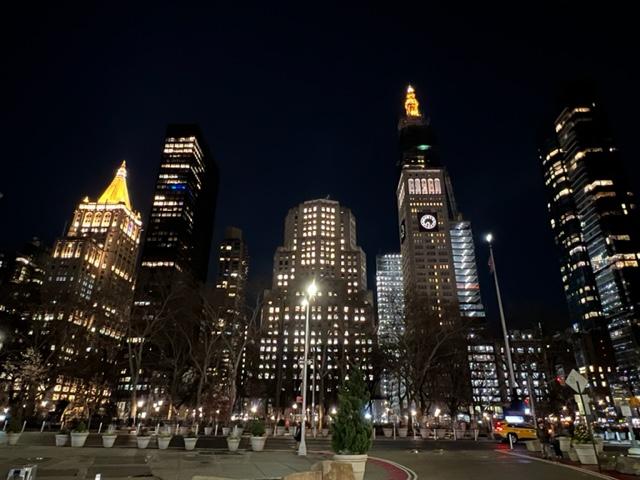
Passing Madison Square Park at night is quite a site!
Places to Eat:
China North Dumpling
27A Essex Street
New York, NY 10002
http://www.china-north-dumpling.com/
Open: Sunday-Saturday 9:00am-11:00pm
My review on TripAdvisor:
My DiningonaShoeStringinNYC@Wordpress.com:
https://wordpress.com/post/diningonashoestringinnyc.wordpress.com/2981
Yue Lai Bakery
137 East Broadway
New York, NY 10002
(917) 257-2263
https://www.menupix.com/nyc/restaurants/250454930/Yue-Lai-Bakery-New-York-NY
Open: Sunday-Saturday 6:00am-7:30pm
My review on TripAdvisor:
My review on DiningonaShoeStringinNYC@Wordpress.com:
https://wordpress.com/post/diningonashoestringinnyc.wordpress.com/2996
King Dumpling
74 Hester Street
New York, NY 10002
(917) 251-1249
https://www.facebook.com/pages/category/Chinese-Restaurant/King-Dumplings-358670851431724/
https://www.restaurantji.com/ny/new-york/king-dumpling-/
Open: Sunday-Thursday 9:00am-10:00pm/Friday 9:00am-9:00pm/Saturday 9:00am-10:00pm
My review on TripAdvisor:
My review on DiningonaShoeStringinNYC@Wordpress.com:
https://wordpress.com/post/diningonashoestringinnyc.wordpress.com/2988
Happy Star Bakery
160 East Broadway
New York, NY 10002
(212) 608-8899
https://zmenu.com/happy-star-bakery-corp-new-york-online-menu/
Open: Sunday 6:30am-7:00pm
My review on TripAdvisor:
My review on DiningonaShoeStringinNYC@Wordpress.com:
https://wordpress.com/post/diningonashoestringinnyc.wordpress.com/3043
E Noodle House
5 Catherine Street
New York, NY 10038
(212) 226-8919
Open: Sunday-Saturday 10:00am-8:30pm
My review on TripAdvisor:
Places to Visit:
Madison Square Park
11 Madison Avenue
New York, NY 10010
(212) 520-7600
https://www.nycgovparks.org/parks/madisonsquarepark/
https://madisonsquarepark.org/
https://www.facebook.com/madisonsquarepark
My review on TripAdvisor:
My review on VisitingaMuseum.com:
Seward Park
Canal and Essex Streets
New York, NY 10002
(212) 639-9675
https://www.nycgovparks.org/parks/seward-park/
https://en.wikipedia.org/wiki/Seward_Park_(Manhattan)
Open: Sunday-Saturday 7:00am-10:00pm
My review on TripAdvisor:
Abracadabra NYC
19 West 21st Street
New York, NY 10010
(212) 627-5194
https://www.facebook.com/AbracadabraNYC
Open: Sunday 1:00pm-7:00pm/Monday-Saturday 11:00am-7:00pm
My review on TripAdvisor:
Read my other blogs on walking the Flatiron District:
Day Two Hundred and Forty-Four: Walking the Avenues of the Flatiron District:
https://wordpress.com/post/mywalkinmanhattan.com/25776
Day Two Hundred and Forty-Two: Walking the Borders of the Flatiron District:
https://wordpress.com/post/mywalkinmanhattan.com/24726
Day Two Hundred and Forty-Seven: Walking the Streets of the Flatiron District:
https://wordpress.com/post/mywalkinmanhattan.com/25874
Reading Blogs on NoMAD, Rose Hill, and Kips Bay:
Please read my other blog on walking the Avenues and Streets of NoMAD/Rose Hill:
Day One Hundred & Ninety: Walking the Streets and Avenues of NoMAD/Rose Hill:
https://wordpress.com/post/mywalkinmanhattan.com/16776
Please read my other blog on walking the Borders of NoMAD/Rose Hill:
https://wordpress.com/post/mywalkinmanhattan.com/16580
Please enjoy my blog on ‘Walking the Borders of Kips Bay’ on MywalkinManhattan.com:
https://wordpress.com/post/mywalkinmanhattan.com/15049
Please enjoy my blog on ‘Walking the Streets of Kips Bay’ on MywalkinManhattan.com:
https://wordpress.com/post/mywalkinmanhattan.com/15954
Please enjoy my blog on “Walking the Avenues of Kips Bay” on MywalkinManhattan.com:
https://wordpress.com/post/mywalkinmanhattan.com/15820

The Flatiron District on Fifth Avenue in 2023

The weather finally broke, and it has cooled down to a pleasant 87 degrees. Thank God because it was a nice day in the City walk around and visit the Flatiron District without sweating like crazy. The last few walks I have done in the neighborhood have been in the mid 90’s and that got to be too much.
I had spent the morning working in Social Services at the Soup Kitchen, helping people with things like getting clothes, writing out haircut vouchers and getting them toiletries. It is a lot of running around but the best part was that I really felt that I was helping people in need. The weather cooperated, and it was so nice to be outside enjoying the sunshine. It was a productive afternoon.
After I finished lunch, I was off to walk the Avenues of the Flatiron District. I have to admit that this has been one of the harder neighborhoods to research because there are so many amazing buildings to view, and the architecture is so detailed that it takes time to look up at all the ornamentation on the buildings. As I said in my previous blog on the borders of the neighborhood, these companies built these buildings to impress and last forever.
I started the walk at the intersection of Broadway, Fifth Avenue and West 25th Street at the General Worth Memorial, a distinct triangle park right across the street from Madison Square Park. This is the Memorial to and burial site of General William Jenkins Worth.
William Jenkins Worth was a native New Yorker (Hudson, NY) and decorated Army officer who had served our country in the Battles of 1812, The Second Seminole War and the Mexican American War. His series of campaigns shaped this Country to where it is today. He died working for the Department of Texas in 1849 (Wiki).
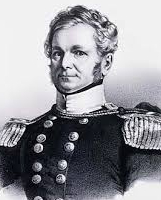
Army General William Jenkins Worth
The General’s remains are buried under the monument at Worth Square at the corner of Fifth Avenue, Broadway and East 24th and 25th Street. General Worth was interned here in November of 1857 on the anniversary of the British leaving the colonies (NYCParks.org).
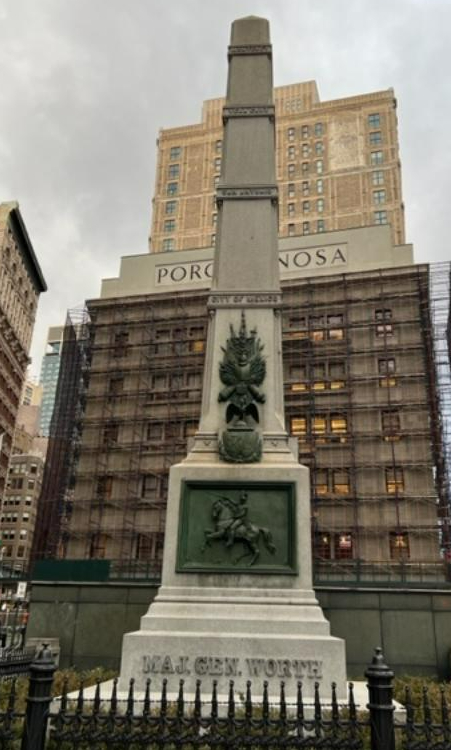
The Worth Monument between East 24th and East 25th Street at Broadway and Fifth Avenue
The Worth Monument was designed by artist James Goodwin Batterson, whose main profession was one of the founders of the Travelers Insurance Company in Hartford, CT and helped design the Library of Congress Building in Washington DC. He had immersed himself in his father’s quarrying and stone importing business early in his career and traveled extensively to Europe and Egypt for the job. He designed this monument in 1857 (Wiki).

Artist and Designer James Goodwin Batterson
https://en.wikipedia.org/wiki/James_G._Batterson
Turning the corner at East 25th Street and Madison Avenue is Madison Square Park, named after our fourth President of the United States, James Madison. This well landscaped park is the gathering place of the residents of NoMAD and has a wonderful playground that has been busy the whole time I have spent in the neighborhood.
Madison Square Park is an interesting little oasis from all the traffic and office space. It has an interesting history since it was designated a public space in 1686 by British Royal Governor Thomas Dongan. It has served as a potter’s field, an arsenal and a home for delinquents. In 1847, the space was leveled, landscaped and enclosed as a park. It became part of the New York Park system in 1870. There are many historical figures featured in the park (NYCParks.org). The park today is a major meeting spot for residents and tourists alike with a dog track and the original Shake Shack restaurant.
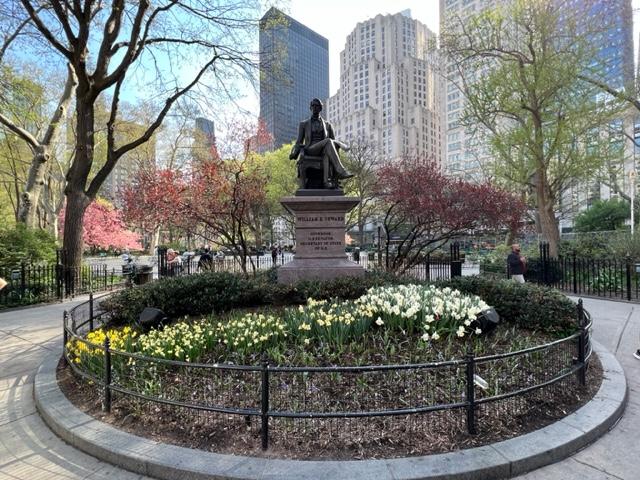
Madison Square Park in the Spring when I was walking the length of Broadway
https://madisonsquarepark.org/
https://www.nycgovparks.org/parks/madison-square-park
When I walked into the park to take a break, it must have been the busiest section of the neighborhood between the playground and the original Shake Shack that were serving food to a crowd clung to their cellphones.
Another sculpture that is in Madison Square Park is the statue of William Henry Stewart, the former Governor of New York State, US Senator and Secretary of State during the Civil War. He also negotiated the Alaskan Purchase in 1867.
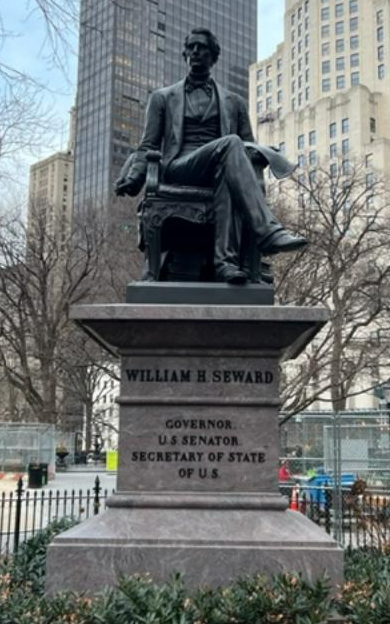
Governor William Henry Stewart statue in Madison Square Park

Governor William Henry Sewart, who negotiated the Alaskan Purchase “Sewart’s Folly”
The statue was designed by artist Randolph Rogers an American born sculptor who studied in Italy. He was a Neoclassical artist known for his famous historical commissions.

Artist Randolph Rogers
https://www.shsart.org/randolph-rogers
Madison Square Park is noted for its beautiful plantings, shaded paths and for being home to the first Shake Shack, a Danny Meyers restaurant and popular upscale fast-food restaurant.
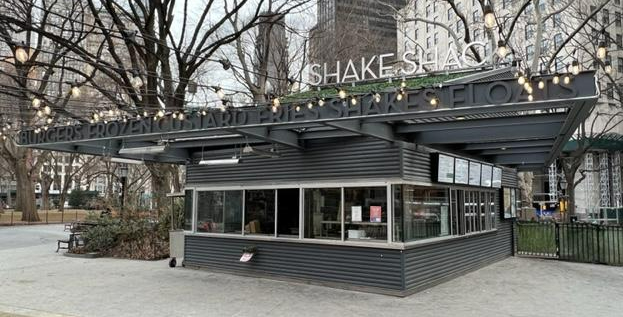
The very first Shake Shack is in Madison Square Park
https://www.shakeshack.com/location/madison-square-park/
As you look down further on the square, you will see the Flatiron Building one of the most famous and most photographed buildings in New York City. The building was designed by Daniel Burnham as a Renaissance Palazzo with Beaux-Arts style. The original name for the building was the “Fuller Building” for the Company. The name “Flatiron” comes from a cast iron clothes iron from the turn of the last century. (Wiki)
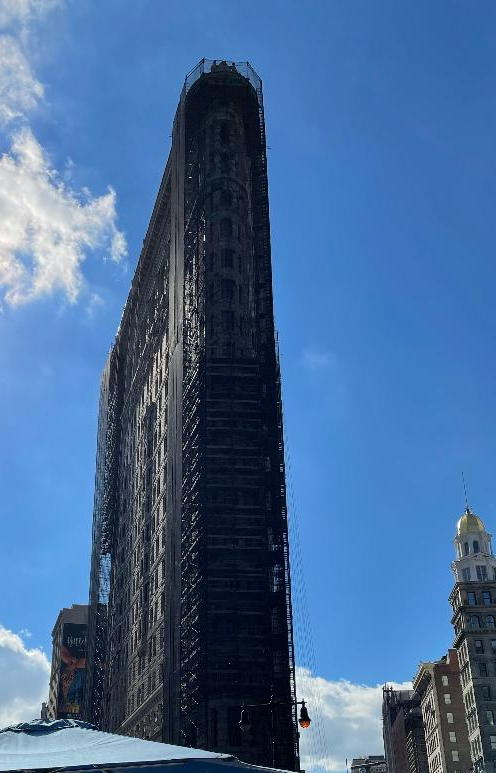
The ‘Flatiron’ Building at 175 Fifth Avenue at 23rd Street
https://en.wikipedia.org/wiki/Flatiron_Building
As you pass the Flatiron Building and continue the walk south between 23rd and 14th Streets, take a look up to admire the buildings that once help make up the “Ladies Shopping Mile”, once the most fashionable neighborhood after the Civil War for shopping, hotels and entertainment (See my blog in MywalkinManhattan.com “Walking the Ladies Shopping Mile”).
My Christmas Blog on “Victorian Christmas in New York City”: Day One Hundred and Twenty-Eight:
https://wordpress.com/post/mywalkinmanhattan.com/8117
The buildings that line Broadway from the Flatiron Building until you get to Bowling Green Park at the tip of Manhattan are some of the most beautiful and detailed examples of Victorian architecture and were built between 1870 to about 1915. You really need to put the cellphone down and look up when walking south on both sides or you might miss the details of these buildings.
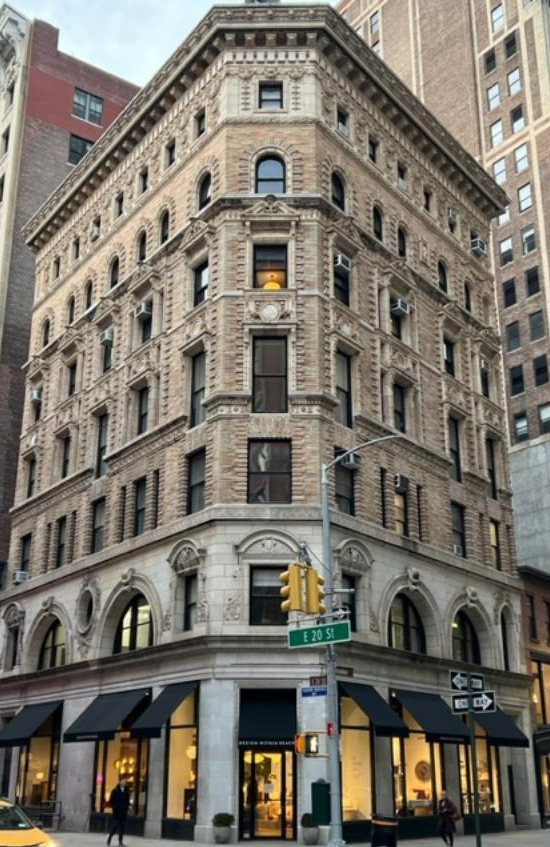
907 Broadway-The Warren Building
https://www.cityrealty.com/nyc/bushwick/907-broadway/83372
http://daytoninmanhattan.blogspot.com/2013/06/the-1891-warren-building-nos-903-907.html
The Warren Building is another example of turn on the last century elegance. Designed by Stanford White of McKim, Mead & White in 1896, the building was designed in the Neo-Renaissance style (Daytonian).
One of the most elegant buildings on this part of Broadway is the former “Lord & Taylor” building at 901 Broadway. The building was constructed for the department store in 1870 and was the main store until 1914. Really take time to look at the detail work of the store and step inside. The Mansard Roof is an amazing touch. In 2022, it is now a restaurant on the lower level.
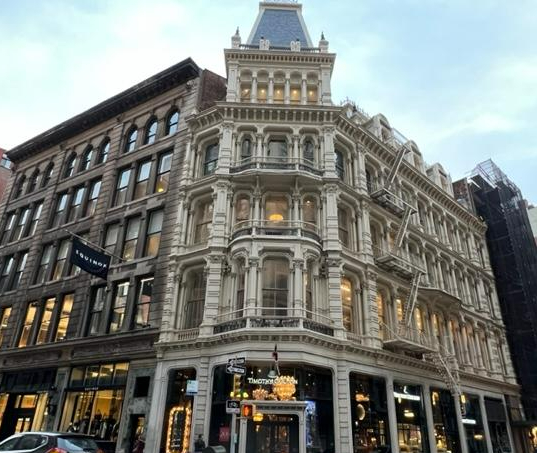
901 Broadway “Lord & Taylor” building from 1870-1914
https://streeteasy.com/building/former-lord-taylor-building
I walked back through Madison Square Park after my walk down Broadway and there were two small jazz concerts that were going on at opposite side of the park. Two three person combos were entertaining people by the fountain and near Shake Shack and on a sunny after there was a pretty big crowd enjoying the park and listening to the music.
Walking down Fifth Avenue was interesting on both sides as you will notice how ornate the buildings are as you travel from West 25th to West 20th Street leading me to believe how important of a shopping and business district this once must have been. Here and there from the Flatiron Building you can see all the elegant and ornate buildings that line the Avenue.
I started my walk south down Fifth Avenue and here and there you need to look up and admire the details of the buildings. On the corner of Fifth Avenue and 23rd Street is 186 Fifth Avenue, which was built for the Western Union Telegraph Company in 1883.

186 Fifth Avenue-The Western Union Telegraph Company Building
https://www.cityrealty.com/nyc/flatiron-union-square/186-fifth-avenue/39081
http://daytoninmanhattan.blogspot.com/2019/02/the-1883-western-union-building-186.html
The building was designed by architect Henry J. Hardenberger in the Queen Anne style with its details being in brick and terra cotta (Daytonian in Manhattan). The building just finished a restoration, and you can see the details by the windows and dormers.
At 170 Fifth Avenue and West 22nd Street, you can see the beauty and elegance of the Beaux Art details of the former Sohmer Piano building. The building was built between 1897-88 and designed by architect Robert Maynicke for the owners of the Sohmer Piano Company for their showrooms and offices. The company was known for its introduction of the baby grand piano (Wiki/Daytonian in Manhattan).

170 Fifth Avenue-The Sohmer Piano Building
https://en.wikipedia.org/wiki/Sohmer_Piano_Building
http://daytoninmanhattan.blogspot.com/2011/06/1898-sohmer-piano-co-building-170-fifth.html
At 166 Fifth Avenue, the building has almost a confectionary look of a wedding cake. This commercial building was constructed in 1900 by the architectural firm of the Parfitt Brothers in the Northern Renaissance Revival style with all sorts of embellishments around the windows and doors with an elaborate roof design. In the beginning it housed art galleries and upscale retailers until the area became manufacturing at the turn of the last century. It has made a full swing again as a luxury retailer building on street level (Daytonian in Manhattan/Streeteasy/LoopNet.com).
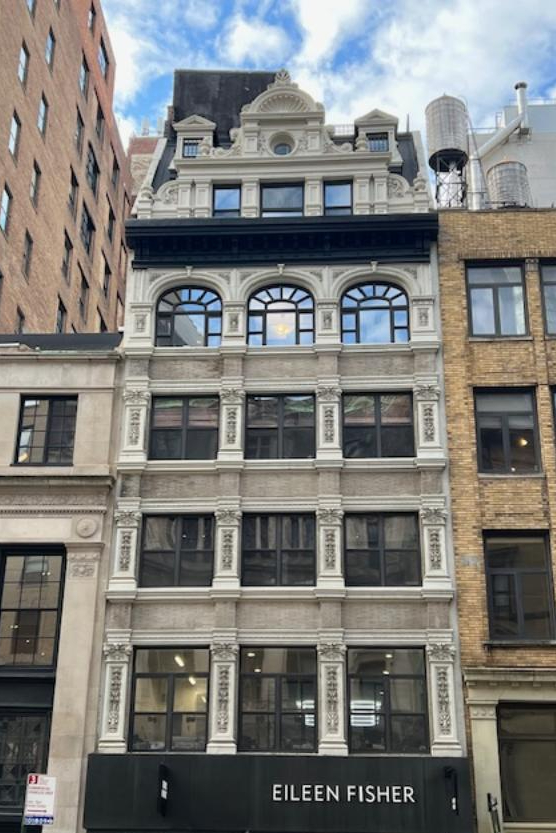
166 Fifth Avenue
http://daytoninmanhattan.blogspot.com/2011/07/parfitt-brothers-no-166-fifth-avenue.html
https://streeteasy.com/building/166-5-avenue-new_york
https://www.loopnet.com/Listing/166-Fifth-Ave-New-York-NY/25113417/
On the corner of West 21st Street and Fifth Avenue is 162 Fifth Avenue, another impressive building with interesting details. This office building was built in 1930 and is still used for commercial purposes.
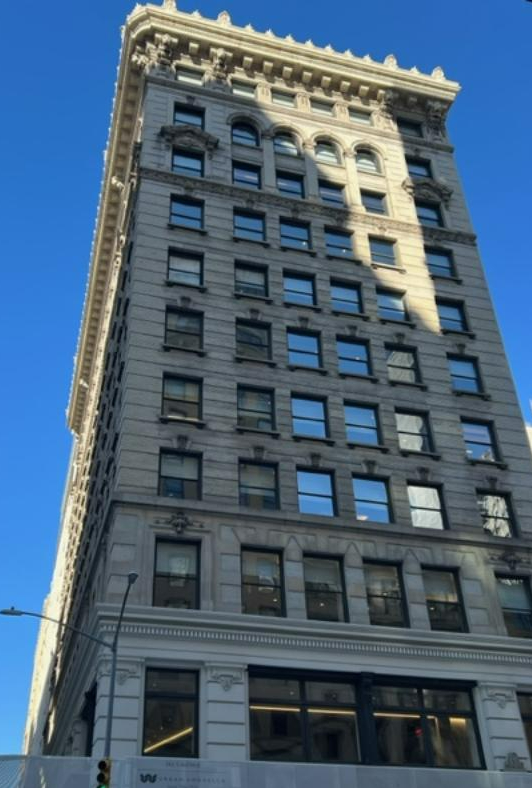
162 Fifth Avenue and West 21st Street
https://streeteasy.com/building/162-5-avenue-new_york
At the edge of the neighborhood standing guard in the Flatiron District is 156 Fifth Avenue, the Presbyterian Building. This building has an interesting past being built for the Presbyterian Church for offices for missionary work when the neighborhood housed many religious institutions (Daytonian in Manhattan/LoopNet.com).

156 Fifth Avenue and West 20th Street
http://daytoninmanhattan.blogspot.com/2011/02/presbyterian-building-156-fifth-avenue.html
https://www.loopnet.com/Listing/156-Fifth-Ave-New-York-NY/14050649/
It was designed by architect James B. Baker in the French Gothic style, and you have to admire the roof for its unique details.
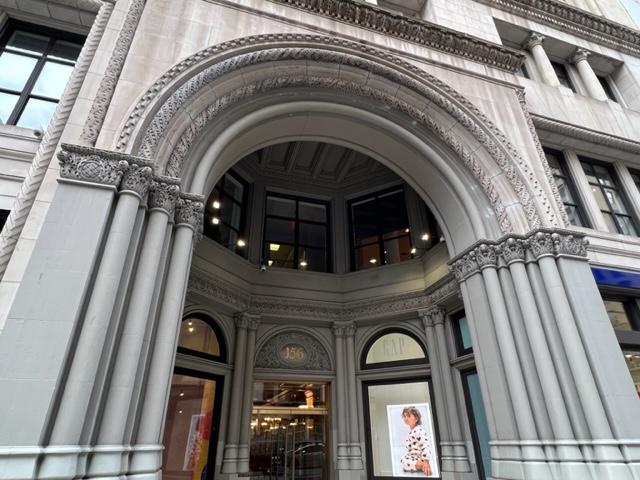
The detail in the entrance of the building
As I rounded the corner of the neighborhood at West 20th Street another building caught my eye at 150 Fifth Avenue, the former Methodist Book Concern. The building was built between 1888-90 and designed by architect Edward Hale Kendall in the Romanesque Revival style. It had originally held the offices, printing and a chapel for the church. This was the section of Fifth Avenue that housed many religious offices and headquarters (Wiki).
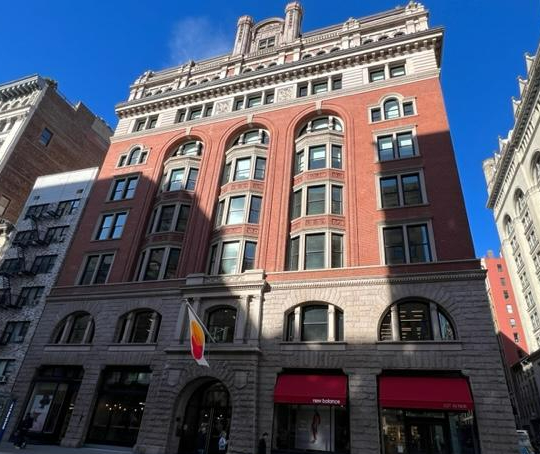
150 Fifth Avenue-The Methodist Book Concern
http://daytoninmanhattan.blogspot.com/2011/02/methodist-book-concern-150-5th-avenue.html
Walking north back up Fifth Avenue is 141 Fifth Avenue another confection of architecture. This gorgeous building was built in 1897 by architect Robert Maynicke, who had also designed Sohmer Piano Building at 170 Fifth Avenue, in the Beaux Arts style for the Merchant Bank of New York (Flatironnomade.nyc/fsiarchitecture.com).
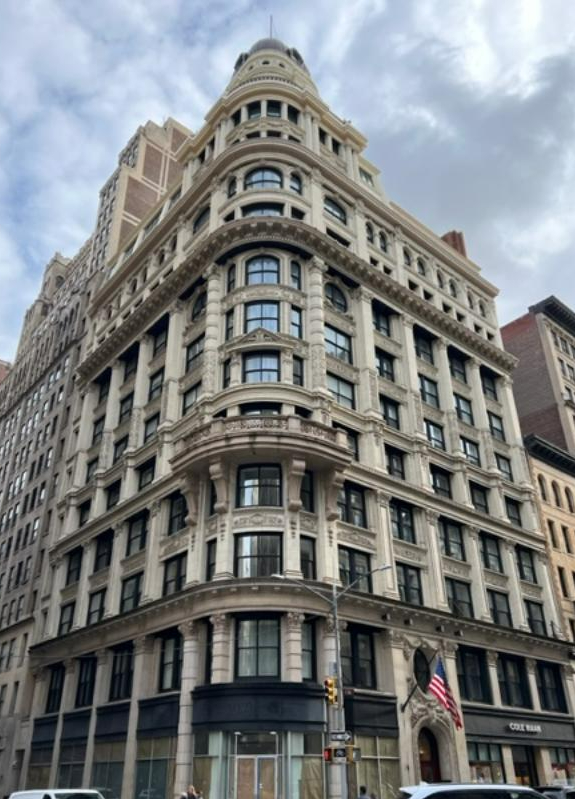
141 Fifth Avenue-The Merchants Bank of New York Building
http://www.fsi-architecture.com/building-renovations/141-fifth-avenue-new-york-ny
https://streeteasy.com/building/141-fifth-avenue-new_york
This impressive bank has recently been converted to luxury apartments with a current one sold at over three million dollars.
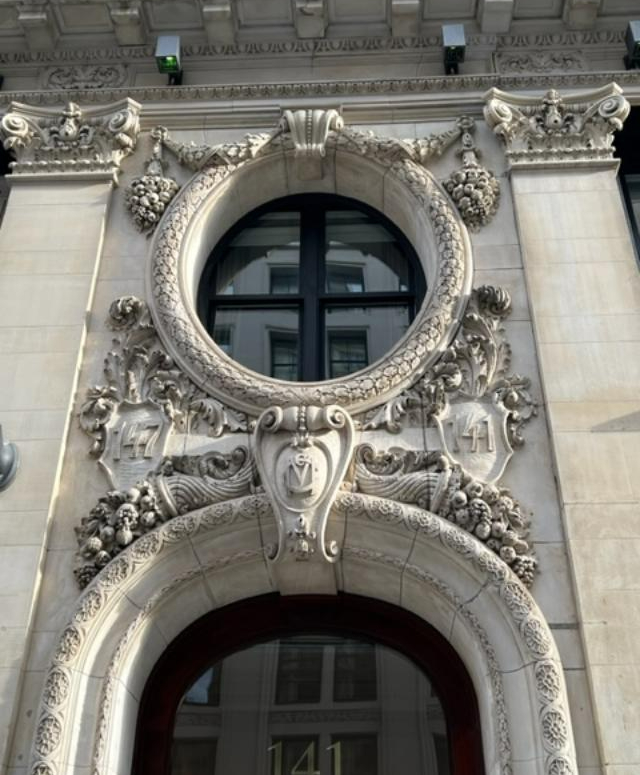
The entrance to 141 Fifth Avenue
I made my way back up Fifth Avenue and admired all these buildings once again. Each has their own style and design and since the time of their construction continue to live on in different forms for various companies. Since many were built at the turn of the last century it also proved to me how well constructed and designed these buildings are and how desirable they are in the marketplace as you will not see this construction again. These were made to last and give this section of Manhattan its unique appearance and its own sense of character.
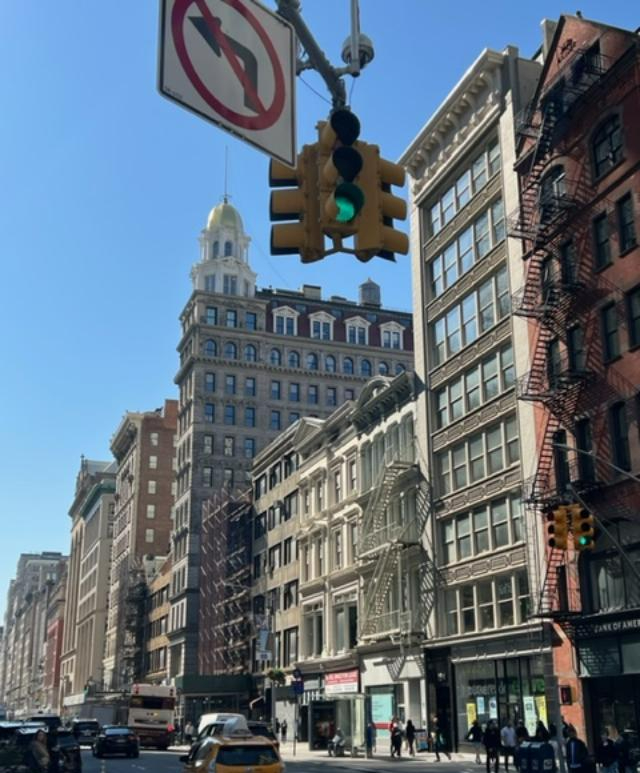
The Flatiron District from Fifth Avenue and East 23rd Street

The beauty of the Flatiron District at night
I found myself hungry again and took the subway back down to Chinatown to visit many of the takeout places and bakeries that were on my list to visit. I have been building up my blog, DiningonaShoeStringinNYC@Wordpress.com and wanted to see how many of them had stayed open post pandemic. Many of these little ‘hole in the wall’ restaurants are going strong as Chinatown is continuing to come back to life.
My blog “DiningonaShoeStringinNYC@Wordpress.com:
https://diningonashoestringinnyc.wordpress.com/
I started my walk in Chinatown at China North Dumpling at 27A Essex Street across from Seward Park for some fried dumplings and spring rolls. For ten large fried dumplings that were really juicy and well cooked, four spring rolls and a Coke it was $7.00. Everything was so well made, and you can watch from the counter the ladies making the fresh dumplings right in front of you. The place is real bare bones, but the food and the service are amazing. Try to eat at the counter and watch everything get prepared.
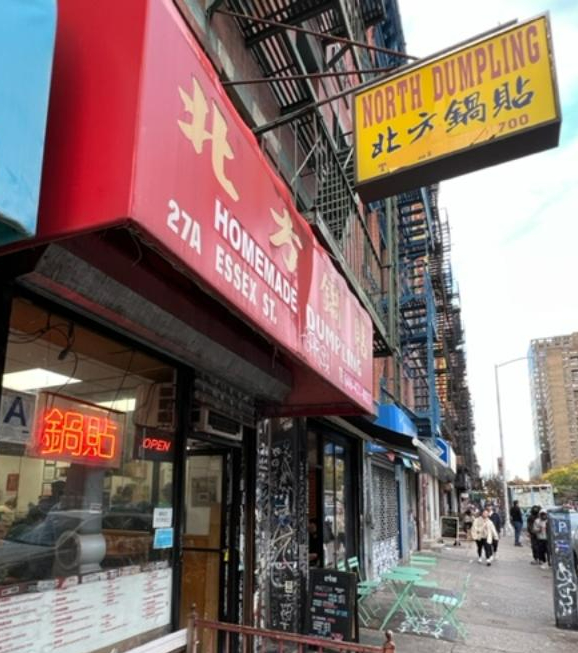
China North Dumpling at 27A Essex Street located in the Lower East Side
http://www.china-north-dumpling.com/

The Dumplings at China North Dumpling are made right in front of you
In needed something sweet after all the fried foods so I headed back to Yue Lai Bakery at 137 East Broadway to look for a baked pork bun. They had none left at that time of the day, but they were having a special on their baked goods three for $2.00 and I picked out a Coconut Bun, a Cream filled Bun and a Plain Bun.
They bagged it all up for me and I walked over to Sewart Park across the street and sat on the benches and ate them one by one. The Cream and Plain buns were really good and very sweet, and everything was so soft and well baked. I ended up sharing the Coconut Bun with the little birds in the park who surrounded me looking for a handout.
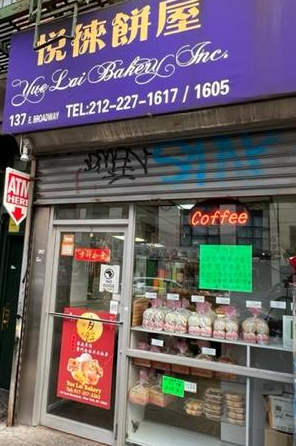
Yue Lai Bakery at 137 East Broadway
https://www.menupix.com/nyc/restaurants/250454930/Yue-Lai-Bakery-New-York-NY

The buns at Yue Lai Bakery are delicious
After a nice rest in the park and enjoying the sunshine and watching families play with their kids, I found myself still hungry. So, I walked down Hester Street from the park and made my way to King Dumpling this time for some steamed Pork and Chive Dumplings. For ten dumplings and a Coke it was only $5.00. The Steamed Pork & Chive Dumplings were excellent and again were freshly made right in front of us. They are large and well-cooked and burst with juiciness when you bite into them.
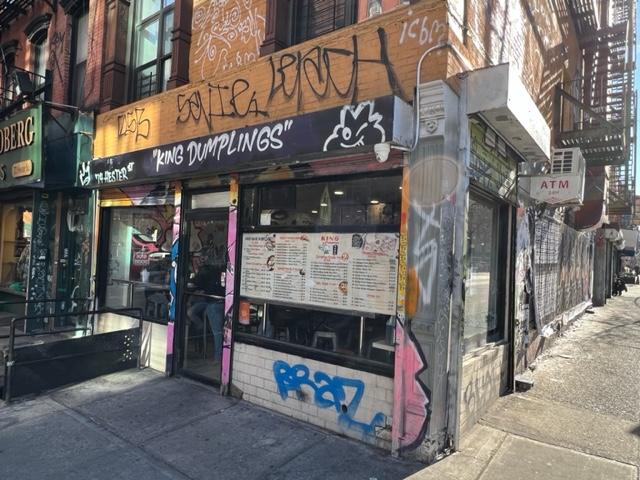
King Dumpling at 74 Hester Street
https://www.facebook.com/pages/category/Chinese-Restaurant/King-Dumplings-358670851431724/
https://www.menupix.com/nyc/restaurants/31859492/King-Dumplings-New-York-NY

Steamed Dumplings at King Dumplings are also made right in front of you
The place was packed with customers and people getting takeout. It is amazing to me how many people write about both King Dumpling and China North Dumpling and I had never really noticed them before. I saw them on a Fung Brothers “Cheap Chinatown Eats” video and then wanted to try them.
My last stop on the eating tour because even after twenty dumplings, four spring rolls, three pastries and three Cokes, I was still hungry and needed that baked pork bun. I found it at Happy Star Bakery at 160 East Broadway and it was just $1.75. Not the $3.50 in Midtown as I recently found at Dim Sum Sam in the Theater District. It was soft and chewy and filled with the most amazing, chopped pork and baked into a sweet dough. I barely made it out the door and I was finished with it.
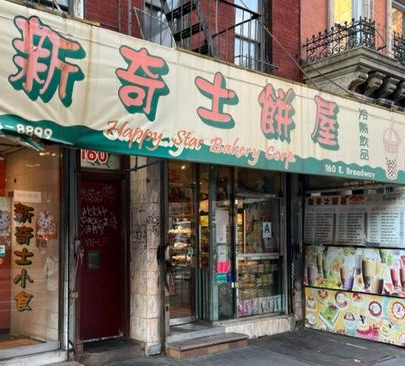
Happy Star Bakery at 160 East Broadway
https://zmenu.com/happy-star-bakery-corp-new-york-online-menu/
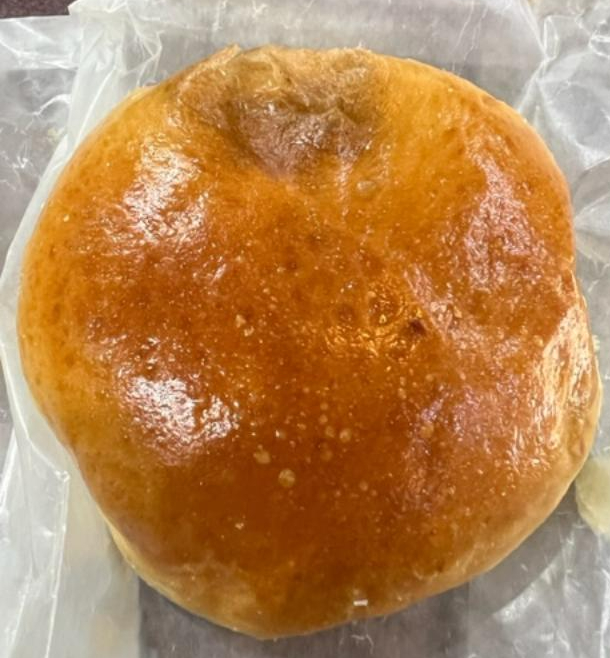
The roast pork buns are amazing
After all the munching on snacks throughout the afternoon, I needed a good walk so I double backed and walked around the Twin Bridges section of the neighborhood walking down Henry, Madison, Rutgers and Clinton Streets around the public housing projects looking at all the small businesses that still catered to the people in the projects.
It is really a funny section of the City in that in-between the cut rate stores, and discount pizzerias are tiny gourmet restaurants, coffee bars and art galleries. It is really a case of extremes all over this section of the neighborhood and shows that both Twin Bridges and Chinatown south are going through a change in both residents and the businesses that cater to them.
With Little Italy slowly fading away (down to just four blocks now from forty at the turn of the last century), I can see the same changes happening in Chinatown as well. It is just another sign of Manhattan going through a metamorphosis.
It will be interesting to see what I will find when I reach this section of Manhattan in the near future.
Places to Eat:
China North Dumpling
27A Essex Street
New York, NY 10002
http://www.china-north-dumpling.com/
Open: Sunday-Saturday 9:00am-11:00pm
My review on TripAdvisor:
My DiningonaShoeStringinNYC@Wordpress.com:
https://wordpress.com/post/diningonashoestringinnyc.wordpress.com/2981
Yue Lai Bakery
137 East Broadway
New York, NY 10002
(917) 257-2263
https://www.menupix.com/nyc/restaurants/250454930/Yue-Lai-Bakery-New-York-NY
Open: Sunday-Saturday 6:00am-7:30pm
My review on TripAdvisor:
My review on DiningonaShoeStringinNYC@Wordpress.com:
https://wordpress.com/post/diningonashoestringinnyc.wordpress.com/2996
King Dumpling
74 Hester Street
New York, NY 10002
(917) 251-1249
https://www.facebook.com/pages/category/Chinese-Restaurant/King-Dumplings-358670851431724/
https://www.restaurantji.com/ny/new-york/king-dumpling-/
Open: Sunday-Thursday 9:00am-10:00pm/Friday 9:00am-9:00pm/Saturday 9:00am-10:00pm
My review on TripAdvisor:
My review on DiningonaShoeStringinNYC@Wordpress.com:
https://wordpress.com/post/diningonashoestringinnyc.wordpress.com/2988
Happy Star Bakery
160 East Broadway
New York, NY 10002
(212) 608-8899
https://zmenu.com/happy-star-bakery-corp-new-york-online-menu/
Open: Sunday 6:30am-7:00pm
My review on TripAdvisor:
My review on DiningonaShoeStringinNYC@Wordpress.com:
https://wordpress.com/post/diningonashoestringinnyc.wordpress.com/3043
Places to Visit:
Madison Square Park
11 Madison Avenue
New York, NY 10010
(212) 520-7600
https://www.nycgovparks.org/parks/madisonsquarepark/
https://madisonsquarepark.org/
https://www.facebook.com/madisonsquarepark
My review on TripAdvisor:
My review on VisitingaMuseum.com:
Seward Park
Canal and Essex Streets
New York, NY 10002
(212) 639-9675
https://www.nycgovparks.org/parks/seward-park/
https://en.wikipedia.org/wiki/Seward_Park_(Manhattan)
Open: Sunday-Saturday 7:00am-10:00pm
My review on TripAdvisor:
Read my other blogs on walking the Flatiron District:
Day Two Hundred and Forty-Four: Walking the Avenues of the Flatiron District:
https://wordpress.com/post/mywalkinmanhattan.com/25776
Day Two Hundred and Forty-Two: Walking the Borders of the Flatiron District:
https://wordpress.com/post/mywalkinmanhattan.com/24726
Day Two Hundred and Forty-Seven: Walking the Streets of the Flatiron District:
https://wordpress.com/post/mywalkinmanhattan.com/25874
Reading Blogs on NoMAD, Rose Hill, and Kips Bay:
Please read my other blog on walking the Avenues and Streets of NoMAD/Rose Hill:
Day One Hundred & Ninety: Walking the Streets and Avenues of NoMAD/Rose Hill:
https://wordpress.com/post/mywalkinmanhattan.com/16776
Please read my other blog on walking the Borders of NoMAD/Rose Hill:
https://wordpress.com/post/mywalkinmanhattan.com/16580
Please enjoy my blog on ‘Walking the Borders of Kips Bay’ on MywalkinManhattan.com:
https://wordpress.com/post/mywalkinmanhattan.com/15049
Please enjoy my blog on ‘Walking the Streets of Kips Bay’ on MywalkinManhattan.com:
https://wordpress.com/post/mywalkinmanhattan.com/15954
Please enjoy my blog on “Walking the Avenues of Kips Bay” on MywalkinManhattan.com:
https://wordpress.com/post/mywalkinmanhattan.com/15820

The Flatiron District along the Fifth Avenue Corridor

There are some neighborhoods in Manhattan that just stand out for their access to parks or to the rivers and others are loaded with historic value who architecture had not changed over the years.
The Flatiron District which was once served as the old Midtown between the Civil War and World War One and “The Ladies Shopping Mile”, where women could shop and engage with one another without a chaperon on Avenues and Streets lined with Department stores, restaurants, movie theaters, tea houses and specialty stores catering to their needs. When you look up at the grand buildings of the district with their large windows and their Beaux-Art designs and decorations, you can see that their purpose was to impress the customers.
I had toured the area around Sixth Avenue and West 23rd Street three years earlier for a tour of a “New York Victorian Christmas” and you can see by the architecture that these buildings were meant to last.
These Grand Department Store buildings are the ghosts of their former selves with a shopping district that left them behind and names that have been out of business for over a hundred years (with the exception of B. Altman & Company which closed in 1990). You can still see the beauty and gracefulness that is carved into the stone of these buildings and in some cases still show the name or the initial of the original store owner.
Day One Hundred and Twenty-Eight: ‘Victorian Christmas Tour’
https://wordpress.com/post/mywalkinmanhattan.com/8117
As I started my walk on the borders of the Flatiron District at West 25th Street and Sixth Avenue, there was not much to see as it was all new construction. The one thing that I did notice from my last walk in the neighborhood is that the colorful street art piece by was tagged over. It was on the very edge of the neighborhood on the wall of The Corner Cafe at the corner of 729 Sixth Avenue was the New York City painting by artist Dirt Cobain.
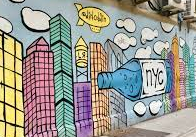
The New York City Street art by artist Dirt Cobain on the side of The Corner Cafe at 729 Sixth Avenue (painted over in 2022)
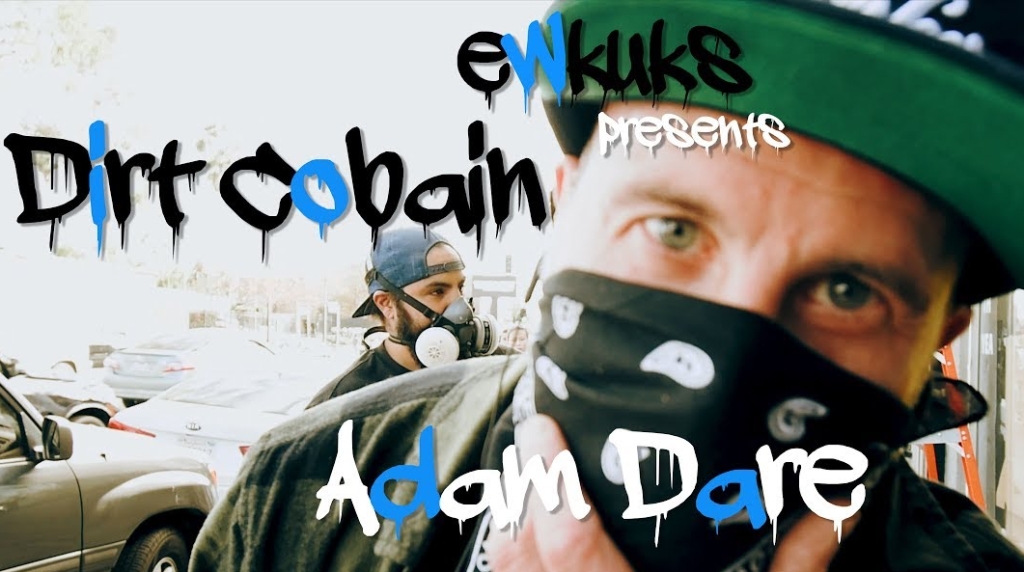
Artist Dirt Cobian
https://ewkuks.com/dirt-cobain
Artist Dirt Cobian is an American born artist who started with a spray can when he was a teenager. He creates the most interesting and eye-opening street art. He currently lives in Brooklyn (Artist bio).
A video on who the artist is and what he represents.
The colorful piece of street art was painted over by another tagger who did not do the painting justice. That and the fact that the Corner Cafe had closed its doors for business since I walked the northern part of the Chelsea neighborhood in June and now sat empty. It was when you reached West 23rd Street when the true gems of architecture began.
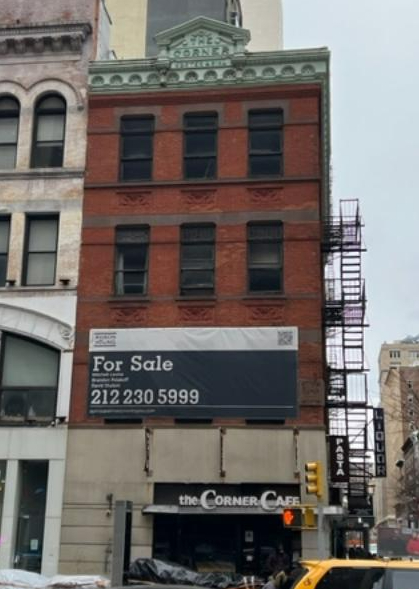
729 Sixth Avenue
https://streeteasy.com/building/729-6-avenue-brooklyn
This unusual office building was built in 1920 and you have to look up to see the carving of “The Corner” at the top of the corniche
I remembered what the tour guide said this had once been the first real shopping district when shopping was acceptable for the middle to upper middle-class woman to shop and socialize unchaperoned. These were the days before malls when shopping was an experience and not something to be rushed.
You could see it in the size of the buildings that housed everything you needed for your household from furniture and clothing to wines and fine gourmet food. They had something for everyone. I could have only imagined what it must have been like and to go back in time to experience those times.
The shopping district stretched from the border of West 23rd Street to the border of West 14th along the Sixth Avenue corridor from the old shopping district to the new one. Even today when you walk that area of West 14th Street, you can still see traces of the old shopping district in the elaborate buildings that are left that line the street. As I walked the back-and-forth length of Sixth Avenue, I admired the buildings that still line it.
I walked south first down Sixth Avenue so that I could really see the stores for myself on one side and then walked past the storefronts on my way back up. What were once Upper Middle Class clothing emporiums are today ‘Big Box’ stores still catering to the retail trade just in another form on the bottom and offices to the top.
Th shopping district border with the Flatiron District starts at the Simpson-Crawford Department Store at 641 Sixth Avenue between West 19th and 20th Streets, which once catered to the wealthy elite of Manhattan and beyond. The store was established in 1878 by Richard Meares and William Crawford as Richard Meares & Company. Meares left the firm a year later and William Crawford then partnered with Thomas and James Simpson to create Simpson, Crawford and Simpson. When Thomas Simpson died in 1885, the store became known as Simpson-Crawford (Daytonian in Manhattan).
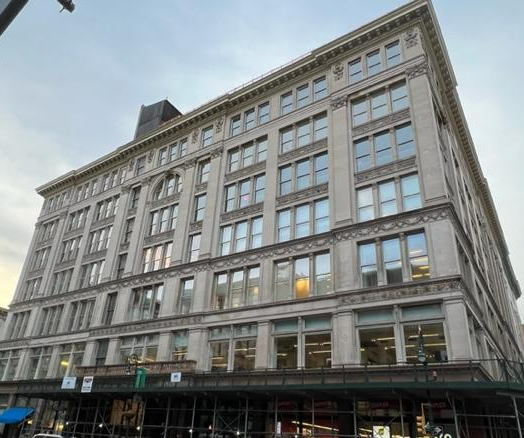
Simpson-Crawford Store today at Sixth Avenue between West 19th and 20th Streets
http://wikimapia.org/16891212/Simpson-Crawford-Simpson-Building
http://daytoninmanhattan.blogspot.com/2011/12/exclusive-1902-simpson-crawford-dept.html
When James Simpson died in 1894, William Crawford became the sole owner and in 1899 with the rise of the great stores on Sixth Avenue, Crawford designed a new store of marble designed by William H. Hume & Son. The exterior of the store shined with polished marble and granite (Daytonian in Manhattan & the tour guide).
The store had many innovations at the time. It had the first escalator in the city, the first display windows with mannequins and large display windows that had to be created for the store. The store was stocked with the finest imported clothes, furs and laces and on the top floor was a restaurant that catered to 1200 guests (Daytonian in Manhattan & the tour guide).
Before the store opened, William Crawford retired and sold the store to Henry Siegel across the street who kept the tradition of the store going. When Siegel-Cooper Company collapsed in 1914, Simpson-Crawford was kept closed for three weeks and then reopened. Both stores closed one year later, and the store was converted to mail order warehouse. Today it holds various stores (Daytonian in Manhattan).
Our next stop was in front of Hugh O’Neill’s Dry Goods Store at 655 Sixth Avenue between West 20th and 21st Streets. It was built by the firm of Mortimer C. Merritt in the neo-Greco style who built the four stages of the building between 1887-1890 (Wiki & the tour guide).

The Hugh O’Neill Store when it opened in 1890
https://en.wikipedia.org/wiki/O%27Neill_Building
Hugh O’Neill had started a small dry goods business right after the Civil War in 1865 with a small store around Union Square. In 1870, he decided to build a trade on the middle market customer and offered discounts on goods. The four floors of merchandise contained laces, ribbons, clocks and on the upper floors women’s and children’s clothing (Wiki).
When O’Neill died in 1902, the shopping area had just begun its decline and in 1906 it merged with Adams Dry Goods up the block. A year later they both went out of business as the area gave way to manufacturing. The building today has been converted into condos.
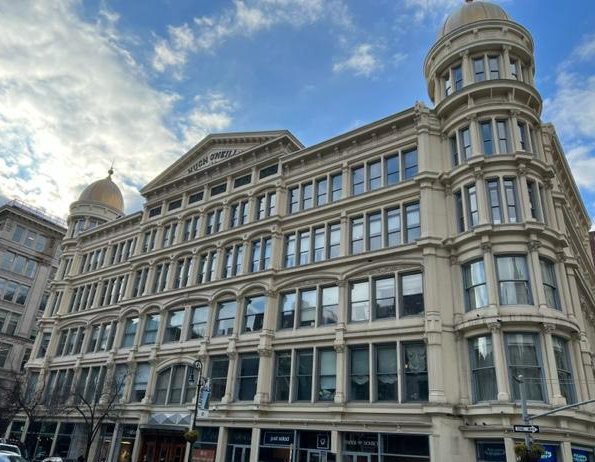
The Hugh O’Neill store today
Next door to it we looked at and discussed was the former Adams Dry Goods Store at 675 Sixth Avenue between West 21st and 22nd Street.
Samuel Adams, a merchant who had been selling upscale clothing and furnishing to customers in the area decided to open a store on Sixth Avenue. He used the architectural firm of DeLemos & Cordes, who had designed the Seigel-Cooper Department Store and the six-story building opened in 1902. The store was the first in New York City to use the new Pneumatic tubes to transport money and messages throughout the store (Wiki).

Adam’s Dry Goods Store when it opened in 1902
http://daytoninmanhattan.blogspot.com/2010/10/1900-adams-co-building-675-sixth-avenue.html
http://wikimapia.org/16882716/Adams-Dry-Goods-Store-Building
The problem with the store was its location. He built the store at the very edge of the neighborhood as the business changed. As the shopping area started to decline in the early 1900’s, Adams sold the store to Hugh O’Neill Dry Goods Store and they merged the two companies together, converting three floors of the Adams Dry Goods store to furniture. This concept was not popular as well and the businesses failed, and the store closed in 1913 (Wiki & the tour guide).
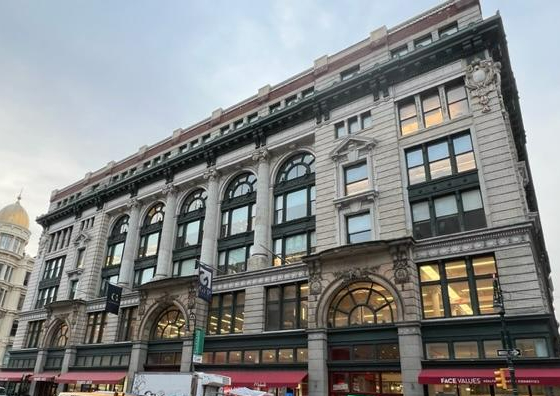
Adams Dry Goods Store today at Sixth Avenue between West 21st and 22nd Streets
The store has gone through a manufacturing stage and in the 80’s became part of the change to large box retailing. The building now houses eBay and several stores including Trader Joe’s and Michael’s. As we could see on the tour, the old department stores are finding new life in retailing.

The old entrance to the Adams Dry Goods Store
Between West 22nd and West 23rd Streets located between the old Adams Dry Goods and next to the former Macy’s store was Ehrich Brothers Department Store at 701 Broadway. The building was constructed in 1889 by architect William Schickel & Company with additions by Buchman & Deisler and Buchman & Fox in 1889 (Wiki).

Ehrich Brothers Department Store building at 701 Sixth Avenue (Wiki)
http://wikimapia.org/8876315/Ehrich-Brothers-Co-Department-Store-Building
http://daytoninmanhattan.blogspot.com/2011/06/1889-ehrich-brothers-dry-goods-store.html
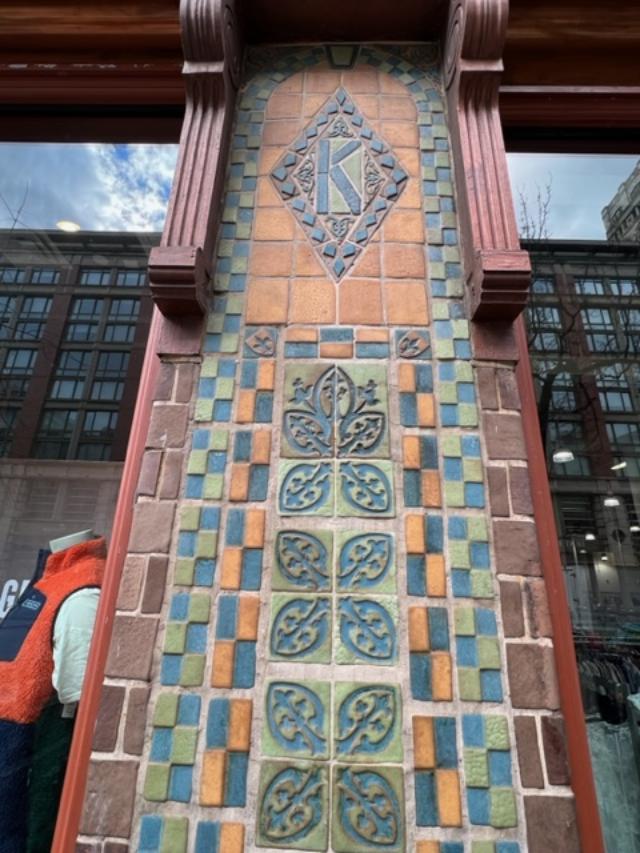
The “K” still adorns the store of the old J.L. Kesner Department Store
Another addition was added by Taylor & Levi in 1911 when the store was leased to J.L. Kesner. They added the terra cotta “K”s that can still be seen from the top of the storefront. The store folded in 1913 and then was used for manufacturing and offices as the shopping district moved to 34th Street and the Fifth Avenue area (Wiki).
At the corner of the neighborhood on Sixth Avenue and West 23rd Street at 100 West 23rd Street is the second Macy’s Department Store building. This was on the very edge of the Ladies Shopping Mile that once stretched along Sixth Avenue.
The building was built in 1871 and you can see all the elaborate embellishments on it with interesting stone carvings and elegant window design and some wrought iron details on different parts of the building. It was the last location of the store before it moved to its current location at 151 West 34th Street.

100 West 23rd Street (Renthop.com) is an old Macy’s
https://www.renthop.com/building/100-west-23rd-street-new-york-ny-10011
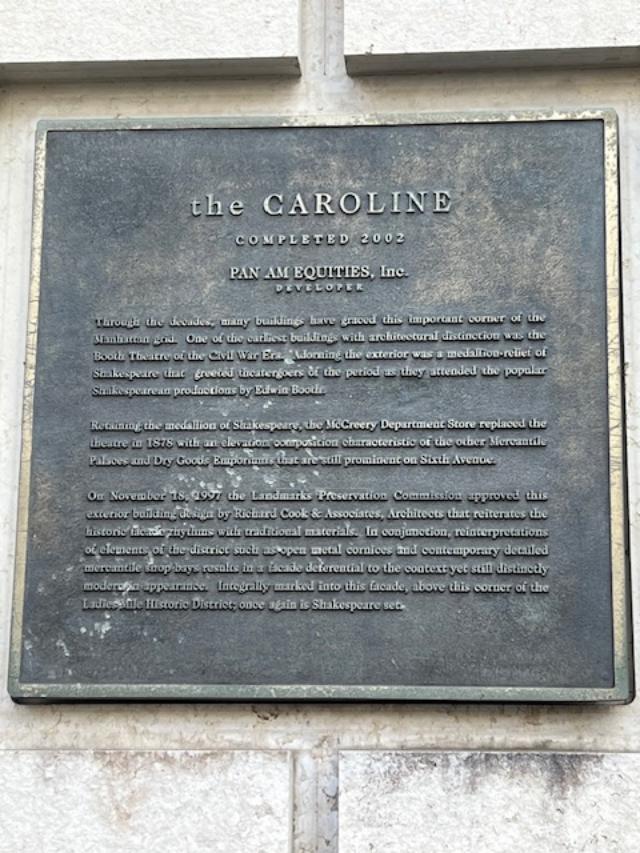
The plaque at The Caroline apartments tells of the location as being the former home of both the Booth Theater and McCreery Department store. The Shakespeare sculpture on the side of the building was once part of both structures.

This Shakespeare sculpture dates from the 1800’s and has been part of all three buildings.
At the edge of the shopping district on the corner of West 20th Street and Sixth Avenue is the old Church of the Holy Communion, which recently housed the Limelight Night Club and now the Limelight Shops at 47 West 20th Street.
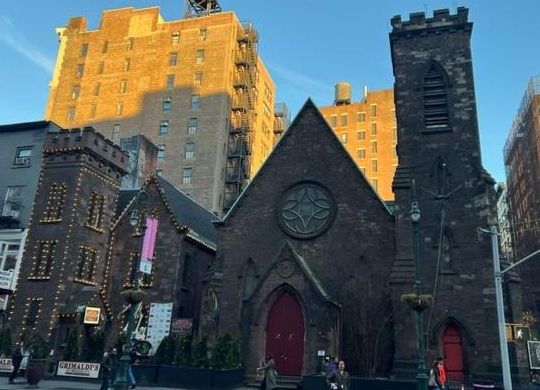
The former Church of the Holy Communion at 47 West 20th Street (now the Limelight Shops)
https://en.wikipedia.org/wiki/Church_of_the_Holy_Communion_and_Buildings
The church was designed by architect Richard Upjohn and was built between 1844-45 and was consecrated in 1846. It was designed in the ‘Gothic Revival’ style and according to the church’s founder, Reverend William Muhlenberg “was the true architectural expression of Christianity” (Wiki). The church closed in 1975 due to declining membership. It had many uses until 1983 when it opened as the Limelight Nightclub. Today it houses the Limelight shops.
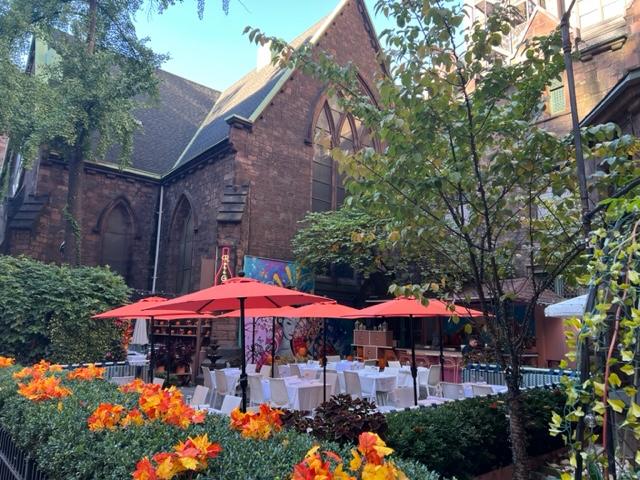
The church set up for outdoor dining in the summer
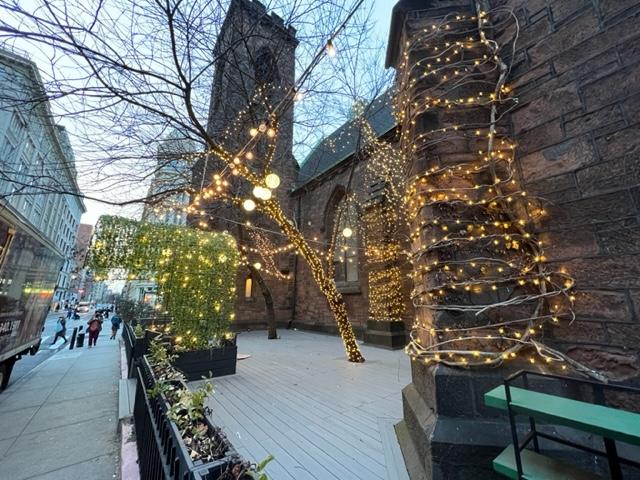
Then decorated for Christmas during the holidays
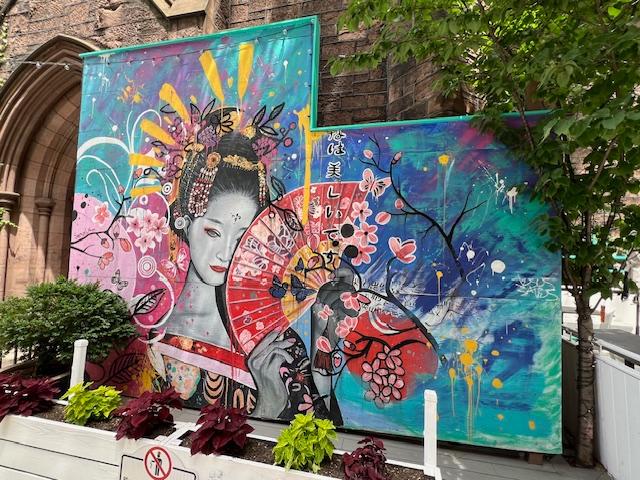
The Samuel Hagai painting that appeared in 2024

Artist Samuel Hagai
https://www.samuelartist.com/about.html
Artist Samuel Hagai
Samuel Hagai is an Israel born artist now living in Los Angeles. He is a self-taught artist know for his realistic portraits (Artist bio)
As I turned the corner onto West 20th Street, there was a lot of commotion across the street and there were police cars everywhere. I did not see what exactly happened, but it made me walk faster down West 20th Street.
West 20th Street is officially the southern border of the Flatiron District, but I have found that the district overlaps with NoMad, Rose Hill, Kips Bay and Chelsea so much of the neighborhood has two or sometimes three community names. The borders begin to blur here. You can see though that this was once a very important business district with buildings that were designed with distinction.
At the corner of Sixth Avenue and West 20th Street, another building got my attention at 650 Sixth Avenue. This impressive building, which is known as the Cammeyer and is located at 650 Avenue of the Americas on the southeast corner at 20th Street, was converted to a residential condominium in 2007 (Carter Horsley. CityRealty.com).

650 Sixth Avenue at the corner of Sixth Avenue and West 20th Street-Now the Cammeyer
https://www.cityrealty.com/nyc/chelsea/the-cammeyer-650-sixth-avenue/review/30381
https://streeteasy.com/building/the-cammeyer
http://daytoninmanhattan.blogspot.com/2010/09/1892-cammeyer-building.html
The building was designed by Hubert, Piersson & Hoddick in 1892 for the estate of William C. Rhinelander. The red-brick, Neo-Renaissance-style building has white stone and terra cotta trim, a large copper cornice and a handsome band course beneath its top floor. It was the home of the Cammeyer Shoe Store, the one of the largest shoe stores in country (Daytonian).
The conversion was designed by Perkins Eastman for by Penterium, the residential development arm of Korean firm Kumang Housing Corp (Carter Horsley. CityRealty.com).
I was admiring 27 West 20th Street on my walk down West 20th Street to Park Avenue South. This detailed twelve story office building was built in 1908 and now offers loft style offices. the details of the building include elaborate stonework both around the doorways and lower windows and the top floors.

27 West 20th Street was built in 1913
What I liked about the side streets as well as the avenues as I walked the neighborhood was that it kept its character and that these buildings had not been knocked down for the modern skyscraper. They were finding new use like the buildings in Midtown South and in NoMAD and become very desirable.
There was true beauty in the details of 20 West 20th Street that was built in 1906. The Beaux Art style details around the windows and doors accent the elegant building.

20 West 20th Street
https://www.squarefoot.com/building/ny/new-york/20-west-20th-street
https://www.loopnet.com/Listing/20-W-20th-St-New-York-NY/17521377/
This is also the details you see in the office building of 10 West 20th Street built in 1903 with Beaux Art style details along the lower windows and doors and the upper floors of the building.
10 West 20th Street

https://www.emporis.com/buildings/151673/10-west-20th-street-new-york-city-ny-usa

The details to 10 West 20th Street.
I passed 156 Fifth Avenue as I crossed the border from west to east in this part of the neighborhood and admired it for its detailed stonework carving and unusual styled roof. The Presbyterian Building was built in 1893 and was designed by architect James B. Baker and was designed in the French Gothic style. It was to be used by the Presbyterian Church as their base for domestic and foreign missions and used as office space. The Panic of 1893 changed that, and they had to lease the space out (Daytonian in Manhattan).
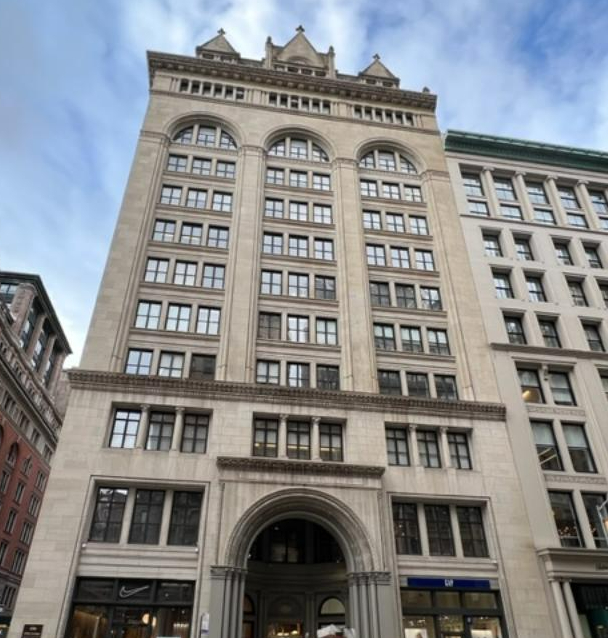
156 Fifth Avenue
https://www.loopnet.com/Listing/156-Fifth-Ave-New-York-NY/14050649/
http://daytoninmanhattan.blogspot.com/2011/02/presbyterian-building-156-fifth-avenue.html
I reached Broadway and to what was once heart of the elegant shopping district of the old Midtown Manhattan before it moved up to the 34th Street area at the turn of the 20th Century. At 901 Broadway at East 20th Street is the old Lord & Taylor Building before its final move to Fifth Avenue in 1915 (they closed in 2020).
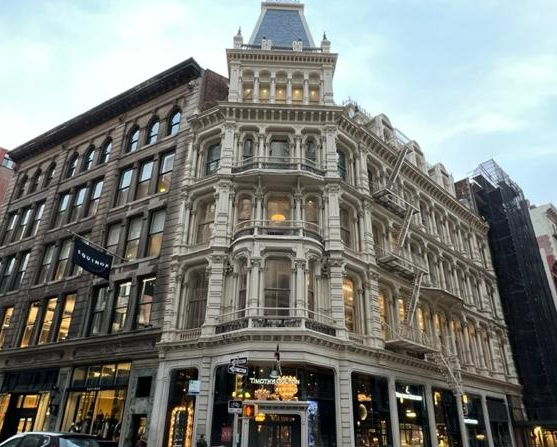
901 Broadway at West 20th Street-The Lord & Taylor Building
https://en.wikipedia.org/wiki/Lord_%26_Taylor_Building
http://daytoninmanhattan.blogspot.com/2010/04/surviving-sliver-of-old-lord-taylor.html
https://streeteasy.com/building/former-lord-taylor-building
The building was designed by New York architect James H. Giles and was designed in the innovative cast iron style of the time that resembled stone. After the store closed in 1915 when it moved business uptown, the Broadway side of the store was resurfaced in stone which is why only a sliver of the old store design is intact (Daytonian in Manhattan/New York Public Library).
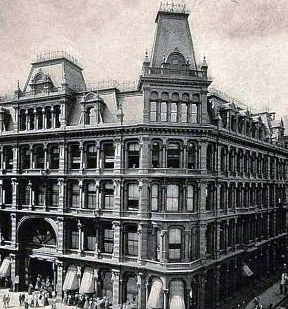
The original look of the Lord & Taylor Store at 901 Broadway (New York Public Library)
Across the street from the old Lord & Taylor Building is 903 Broadway, the former Warren Building. It was designed in 1891 by Stamford White for the Goelet family for their new commercial holding company. The Goelet family had owned all the land around this area and as it moved from residential to commercial, the family developed the neighborhood around them. The building was named after Robert Goelet’s wife, Harriette Louise Warren (Daytonian in Manhattan).
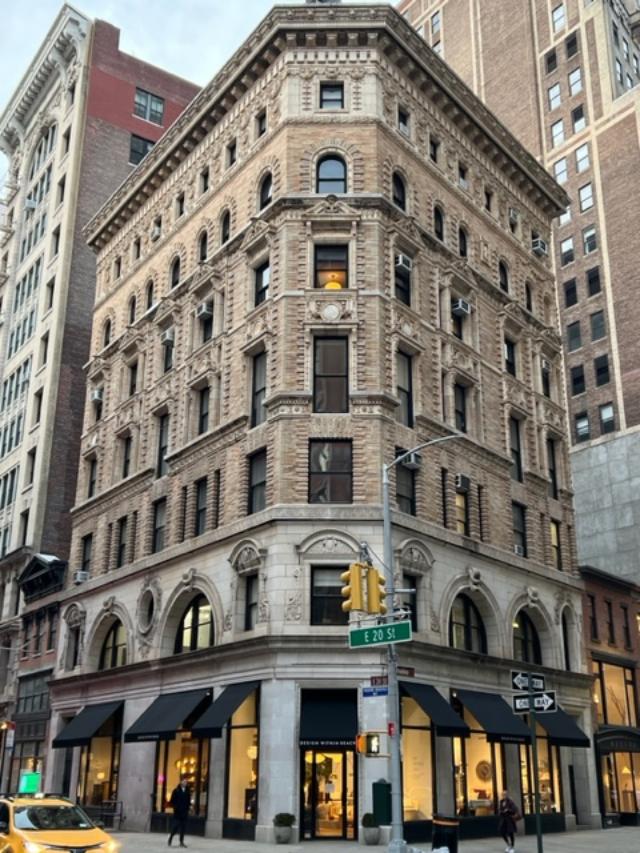
903 Broadway at West 20th Street-The Warren Building
http://daytoninmanhattan.blogspot.com/2013/06/the-1891-warren-building-nos-903-907.html
https://www.commercialcafe.com/commercial-property/us/ny/new-york/903-911-broadway/
Moving further down East 20th Street is the recreation of the childhood home of Theodore Roosevelt and the Theodore Roosevelt Birthplace Museum at 28 East 20th Street.
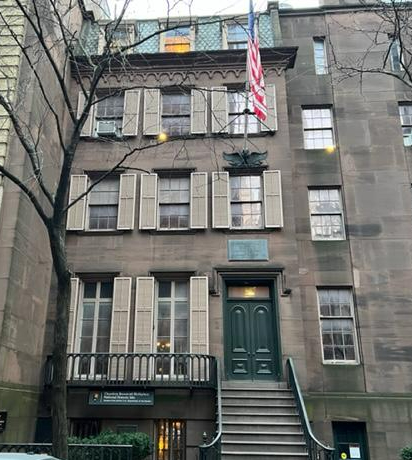
28 East 20th Street-Theodore Roosevelt Birthplace Museum
https://en.wikipedia.org/wiki/Theodore_Roosevelt_Birthplace_National_Historic_Site
The house opened finally for touring after being closed for the pandemic in January 2023 so I finally got to tour the home. It is filled with period furniture, family heirlooms and many artifacts of the late President.
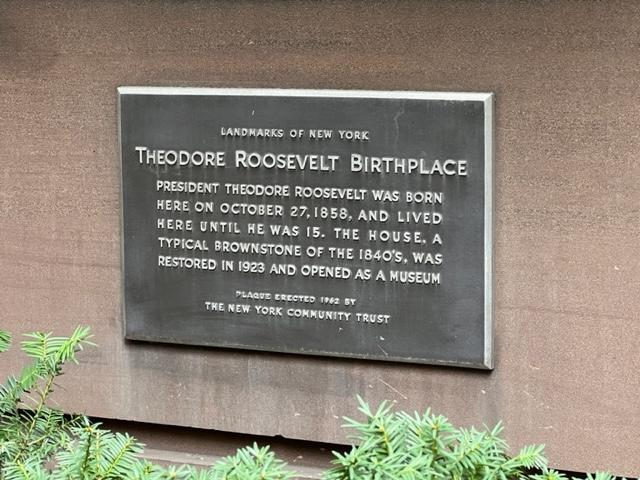
The Theodore Roosevelt Birthplace Museum at 28 East 20th Street
The small gardens outside the house were in full greenery when I visited.
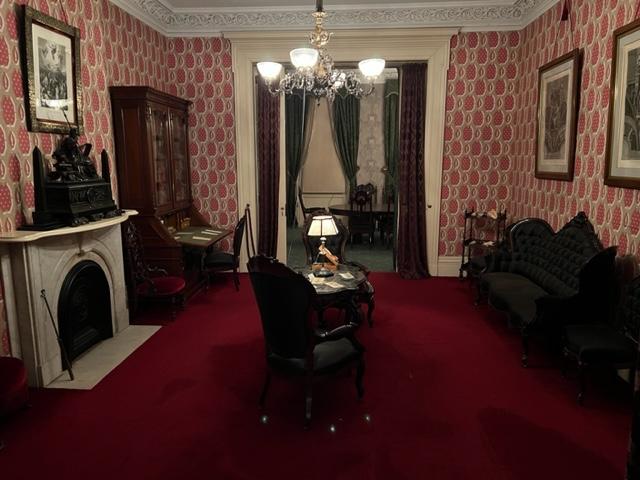
The Living Room at the Roosevelt Home.
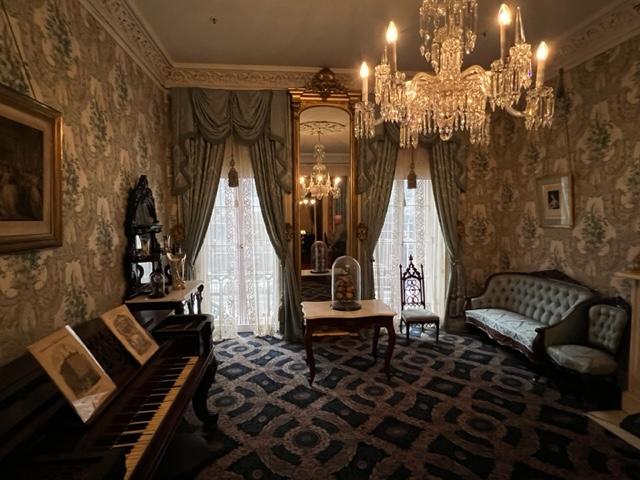
The Parlor at the Roosevelt Home
Towards the corner of East 20th Street and Park Avenue South near the border of the neighborhood is 42 East 20th Street, the current home of the Gramercy Tavern, The Bullmoose building. This loft style store building was built between 1898-1899 and was designed by architects Neville & Bagge. The building was converted into lofts and the restaurant below.
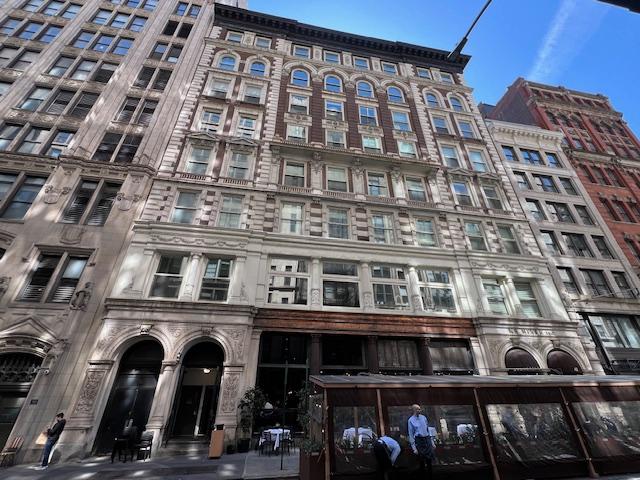
42 East 20th Street-The Bullmoose
https://streeteasy.com/building/the-bullmoose
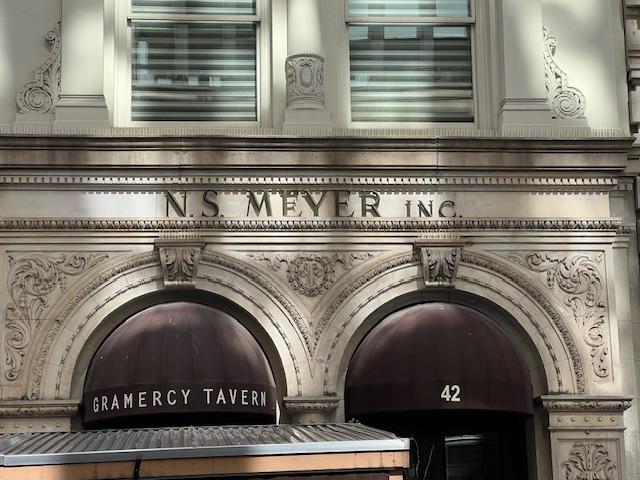
http://daytoninmanhattan.blogspot.com/2015/01/neville-bagges-nos-42-48-east-20th.html
The beautiful entrance to the former N.S. Meyer Inc.
Turning the corner to Park Avenue South, you can see Gramercy Park in the distance which shares it border with the Flatiron District. This is where the lines get blurred between the Flatiron District and Gramercy Park, which share the same border.
As you walk up Park Avenue South, the first building that makes an impression is 251 Park Avenue South. This elegant office building with its large display windows and clean lines shows of the store inside. The office building was built in 1910 and has large windows both on the ground level and towards the top of building.
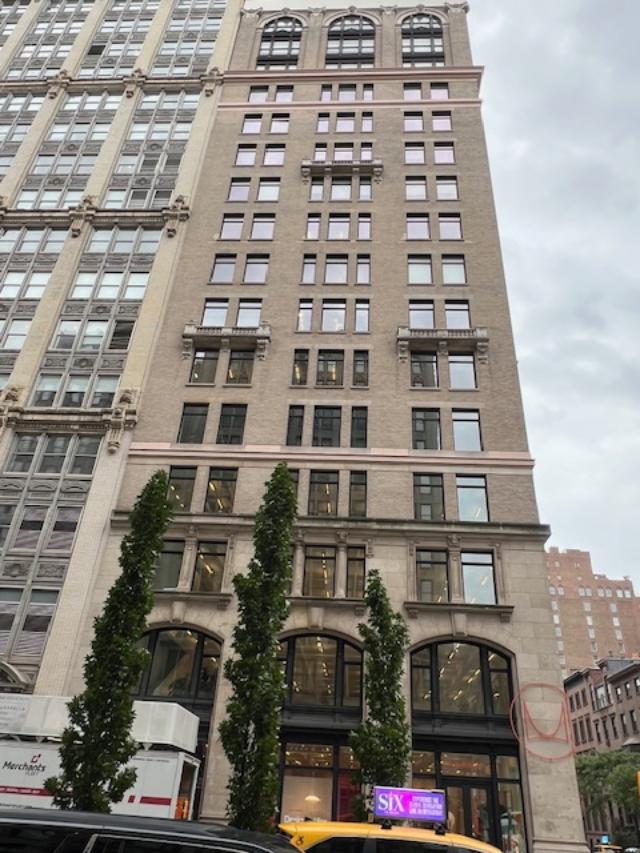
251 Park Avenue South
https://moovitapp.com/index/en/public_transit-251_Park_Avenue_South-NYCNJ-site_22867315-121
One building that does standout from the others on Park Avenue South is the Calvery Church at 277 Park Avenue. The church was established in 1832 and moved to its current location in 1842. The current church was designed in the Gothic Revival style by James Renwick Jr., who designed St. Patrick’s Cathedral.
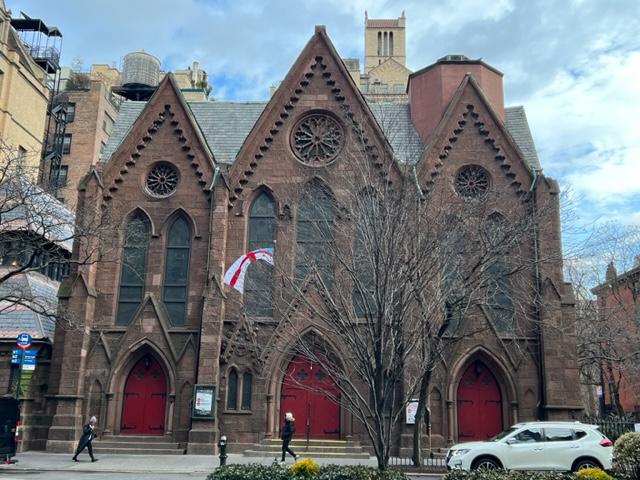
277 Park Avenue South-Church of the Calvery
https://www.calvarystgeorges.org/
https://en.wikipedia.org/wiki/Calvary-St._George%27s_Parish
Another interesting building, I looked up and admired while walking up Park Avenue South was 281 Park Avenue South, the former Church Mission House. The building was designed by architects Robert W. Gibson and Edward J. Neville in the Medieval style and was built between 1892 and 1894. It was built for the Episcopal Church’s Domestic and Foreign Missionary Society (Wiki). It now houses the photography museum The Fotografista Museum.
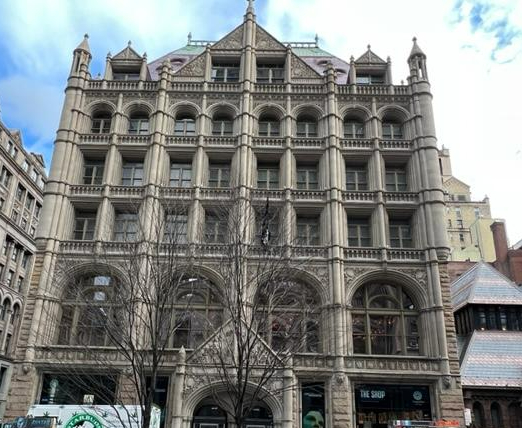
281 Park Avenue South-The Fotografiska Museum (The Church Mission House)
https://en.wikipedia.org/wiki/Church_Missions_House
https://www.fotografiska.com/nyc/
Another impressive building, I passed before East 23rd Street is 105 East 22nd Street the former United Charities Building. This is the final building in what was once known as “Charity Row” (Wiki). The building was designed by architect R. H. Robertson and the firm of Rowe & Baker. It was built by John Stewart Kennedy in 1893 for the ‘Charity Organization Society’ (Wiki).
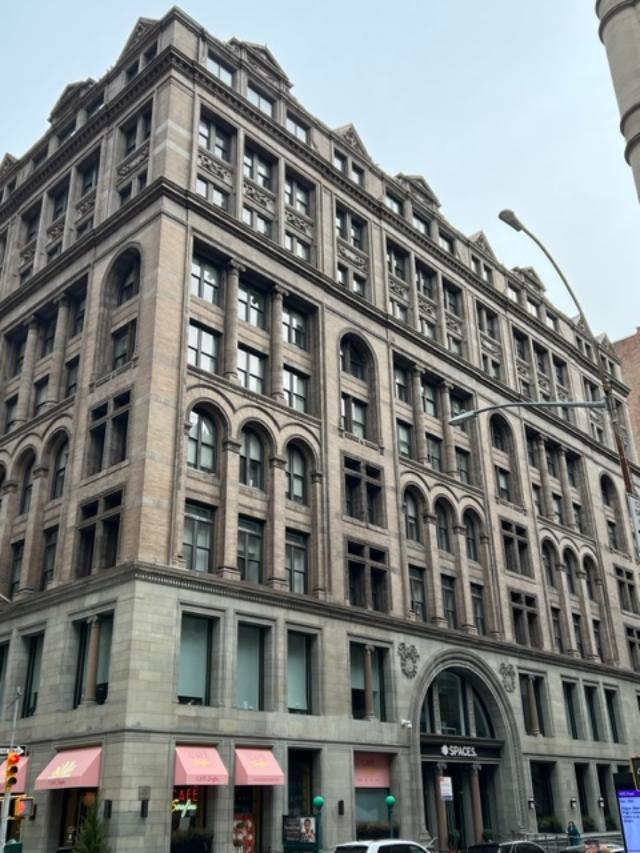
105 East 22nd Street-United Charities Building
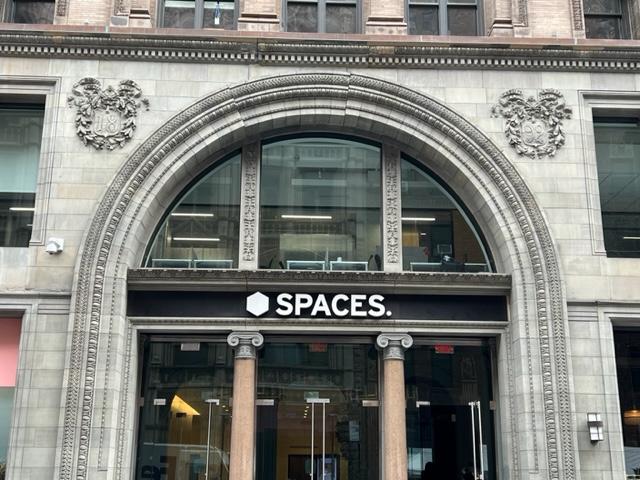
The details of 105 East 22nd Street
https://en.wikipedia.org/wiki/United_Charities_Building

The 1892 embellishment
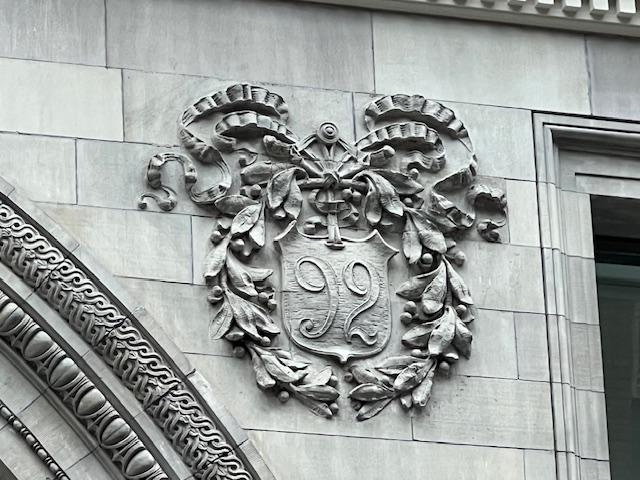
The 1892 embellishment
When you turn the corner down East 23rd Street, you are heading back up to the border that the Flatiron District shares with the Kips Bay, Rose Hill and NoMAD neighborhoods. I had walked these district two years earlier when I explored these neighborhoods. I walked north first to the Infantry Regiment building and then walked south again to East 23rd Street to see if there were any changes. With the exception of DiDi Dumpling moving to 34 Lexington from 38 Lexington, it looked pretty much the same.
I walked to the front of the 69th Regiment Building at 68th Lexington Avenue. The scaffolding was finally down, and you could see the whole building now. This beautiful building is the home to the New York Army National Guard’s 69th Infantry Regiment, known as the “Fighting Irish” since the Civil War (Wiki).
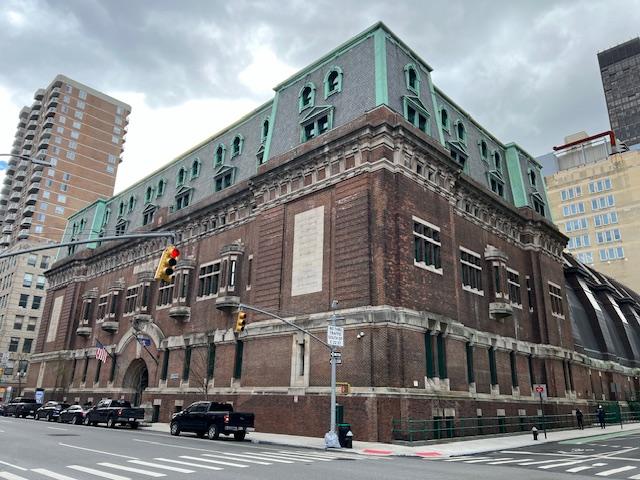
69th Regiment Building at 68 Lexington Avenue
https://en.wikipedia.org/wiki/69th_Regiment_Armory
The building was designed by architects Hunt & Hunt in the Beaux Arts style and was completed in 1906. It has been home to many events and show including the controversial 1913 Armory Show of contemporary art (Wiki). You really have to walk around the building to admire its beauty and history.
Just across the street is another beautiful building covered with snakes, skulls and dragons carved along the side of it at 130 East 25th Street.
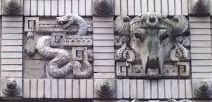
Someone had a warped sense of humor
The former B. W. Mayer Building which now houses the Friends House in Rosehall was built in 1916 by architect Herman Lee Meader (Wiki). You really have to walk around the building to see all the unusual carvings that line the building.
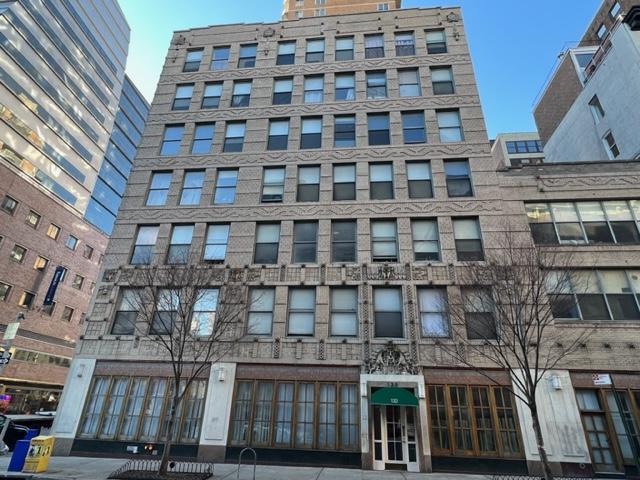
130 East 25th Street, the former B. W. Mayer Building
https://www.realtyhop.com/building/130-east-25th-street-new-york-ny-10010
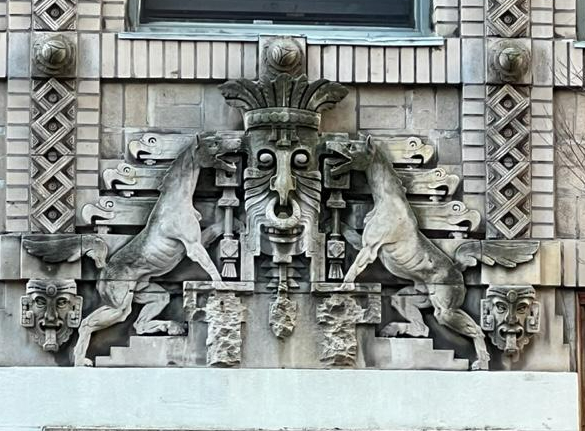
The doorway arch really stands out
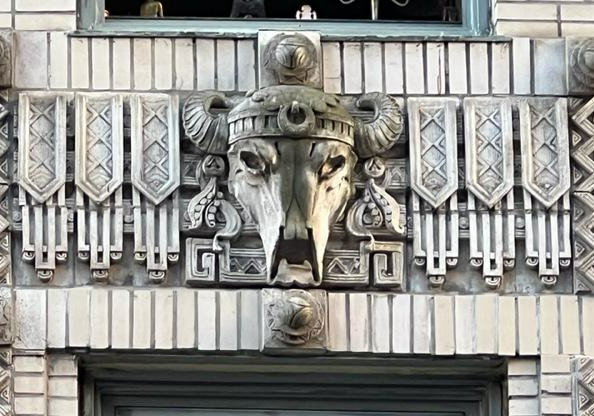
The street art is also interesting on this part of Lexington Avenue. One the corner of East 24th Street & Lexington Avenue is the Friends House New York, a housing unit. Painted on the wall is a very unique painting by Italian street artist, Jacopo Ceccarelli.
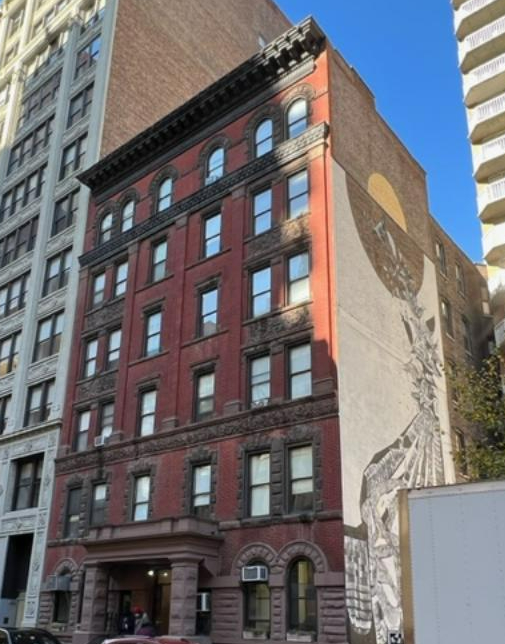
Painting by artist Jacopo Ceccarelli
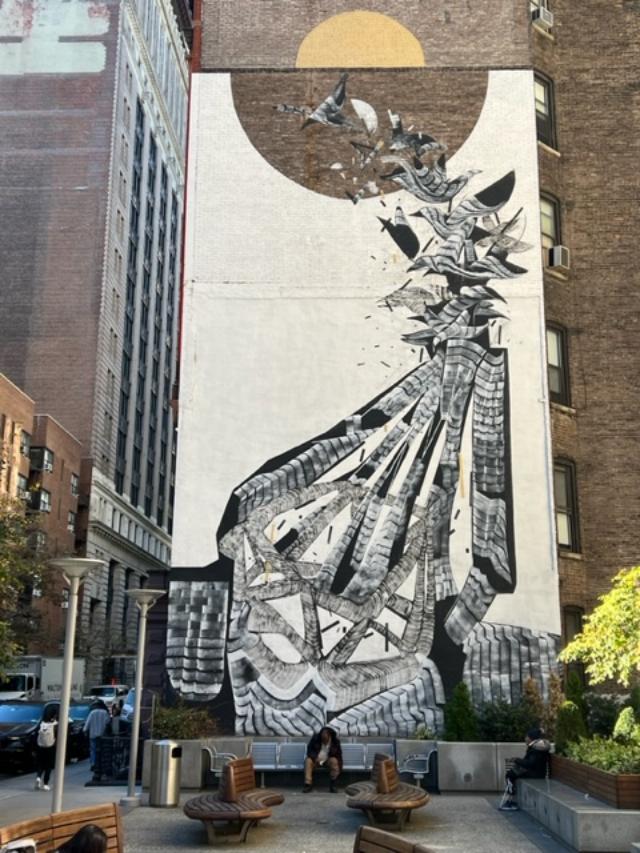
The mural is on the corner of East 24th & Lexington Avenue-The St. Francis Residence Building

Artist Jacopo Ceccarelli
http://doartfoundation.org/index.html@p=3375.html
The Milan born street artist, who goes by the name “Never 2501” hones his skills after moving to San Paolo, painting murals with an edge that got global recognition. He uses geometric forms in his work with circles and lines creating the abstract (Do Art Foundation).
I was getting hungry again with all this criss crossing across Lexington Avenue and I had two choices for a snack, DiDi Dumpling at 38 Lexington Avenue or Pick & Pay Pizza at 30 Lexington Avenue both having reasonable snacks. Since I would be stopping for Dim Sum later that afternoon, I chose the pizza. For a $1.25 a slice, the pizza was not bad in this tiny little hole in the wall that also served Indian food as well. The sauce had a lot of flavor and that is what makes the pizza.
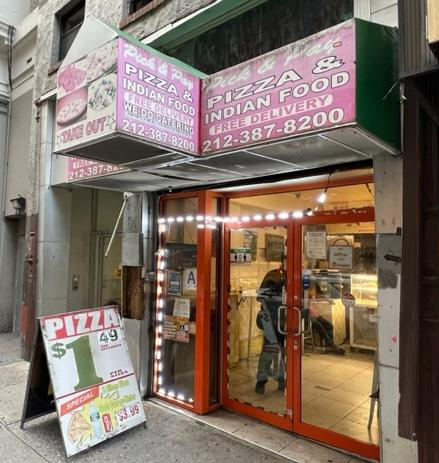
Pick & Pay Pizza at 30 Lexington Avenue (Closed January 2024)
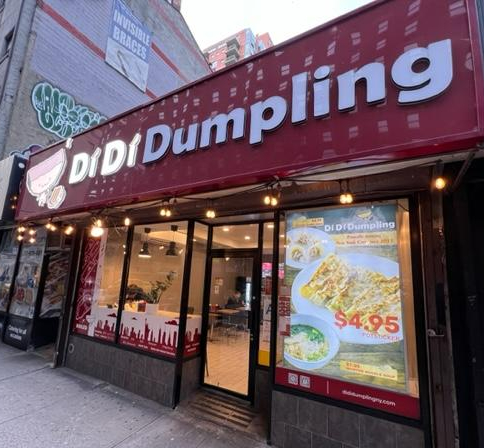
DiDi Dumpling at 34 Lexington Avenue (formerly 38 Lexington on the corner)
https://www.dididumplingny.com/menu
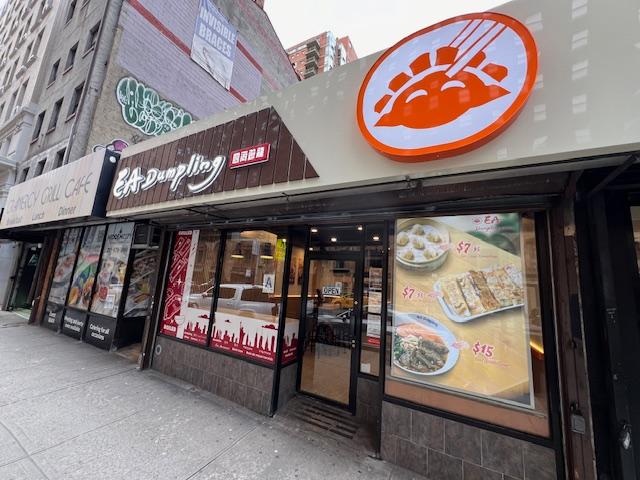
I noticed on the wall right near the doorway near the Starbucks was another wall mural “Urban Ocean” by artist Yuki Abe that is off to the side of the building on the corner of Lexington & 25th, Look at the interesting color and design of the work.
Surrounding this area of Lexington & 25th Street starts the campus of Baruch College which is part of the SUNY system, and I could see students who were taking live classes walking around enjoying the day. I am sure it is much different when classes were in full swing, and the students were hanging around the restaurants and coffee shops in the area.
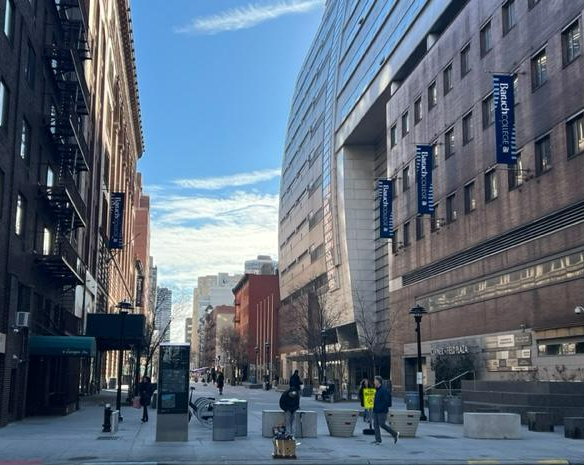
The Baruch College Student Plaza at East 25th Street is a nice place to relax
https://www.alumni.baruch.cuny.edu/bcf/givingopps/plazaupdates
Another building that stands out in its beauty and design is on the corner of the neighborhood on Lexington Avenue between 24th and 23rd Streets, the Freehand Hotel at 23 Lexington Avenue. The hotel was originally built as the Hotel George Washington in 1928 and designed by architect Frank Mills Andrews in the French Renaissance style.
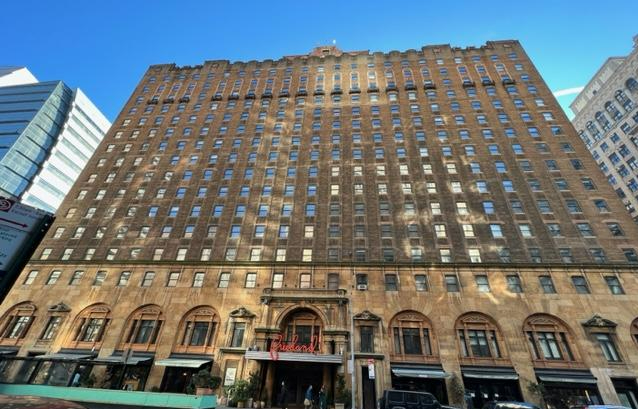
The Freehand Hotel (the former George Washington Hotel) at 23 Lexington Avenue
While still a apartment building and a dorm in the 1990’s, several famous New Yorkers lived at the hotel including artist Keith Haring and musician Dee Dee Ramone. Playwright Jeffery Stanley also lived at the hotel for a period of time.
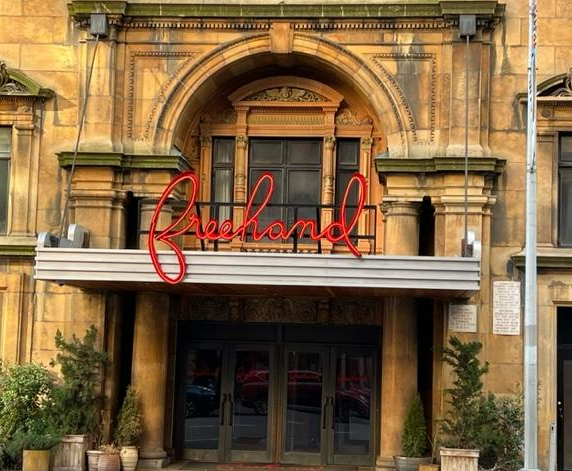
The entrance to the Freehand Hotel is very elegant
After the north south trip around the boundaries of Lexington Avenue, I turned at East 25th Street to head back to Sixth Avenue. The border of the Flatiron District is also part of the Rose Hill and NoMAD neighborhoods and shares the border with Kips Bay.
Walking down East 25th Street, you realize as you start to border the Midtown area that the buildings take up more of the blocks and there are less smaller brownstones and tenements in the area. The dominate building on the block by Madison Square Park is 11-25 Madison Avenue, the Metropolitan Life Buildings. The building that lines this part of East 25th Street is the Metropolitan Life North Building (or 11 Madison Avenue).

Metropolitan Life North Building at 25 Madison Avenue
https://en.wikipedia.org/wiki/Metropolitan_Life_North_Building
This beautiful building was the extension of the main headquarters next door on Madison Avenue. The building was designed by the architectural team of Harvey Wiley Corbett and D. Everett Waid in the Art Deco style in the late 1920’s as the tallest building in the world but the Great Depression changed the plans and it was built in three stages. The first finished in 1932, the second in 1940 and the third in 1950 (Wiki).

The archways ‘Loggias’ on each side of the building
What stands out about the building is the arched vaults on each corner of the structure called ‘loggias’ and the features were made in limestone and pink marble. When you stand under them you can see the colors and details of the marble carvings (Wiki). Just walking around the building the features are impressive and standout.
Across the street from the Metropolitan Life North Building at 27 Madison Avenue is the Appellate Division Courthouse of New York State and one of the most beautiful and detailed buildings I have seen on my walks. The building was designed by architect James Lord Brown in 1896 in the Beaux Arts Style and is adorned heavily in sculpture (Wiki). You really have to step back and walk across the street to see the details on the building.
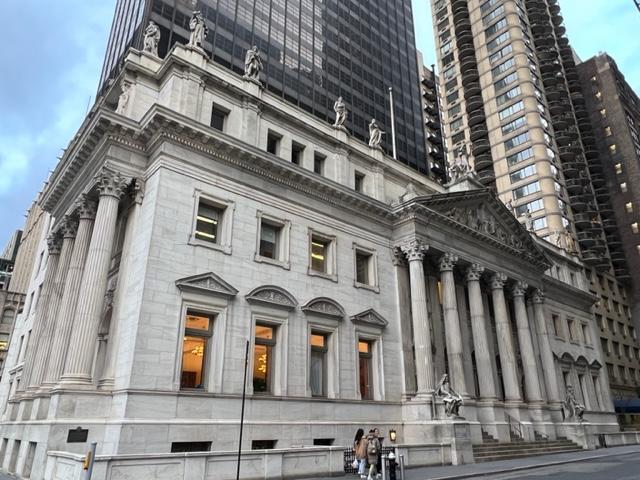
27 Madison Avenue The Appellate Division Courthouse of New York State
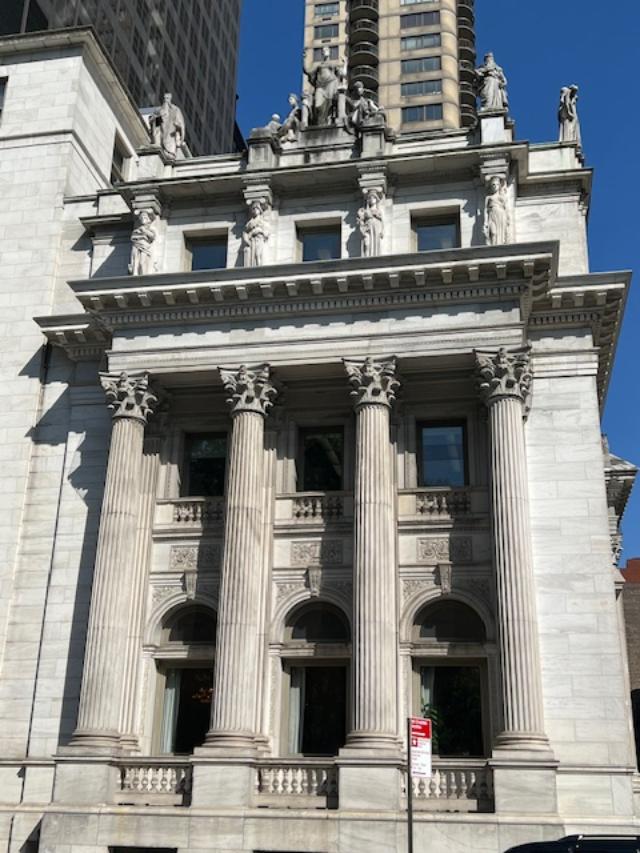
The side of the building facing Madison Square Park.
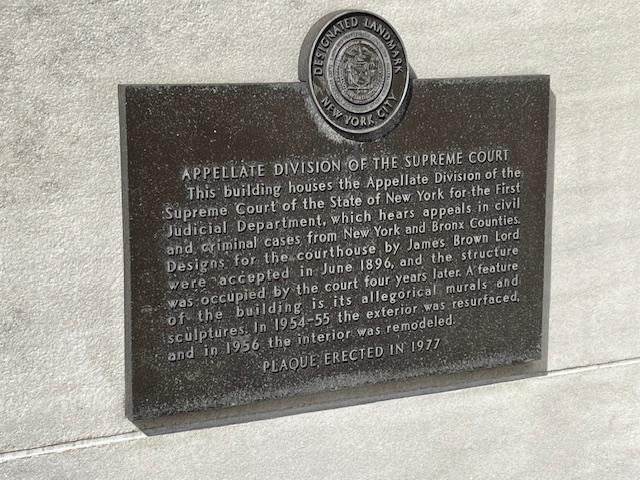
The historic plaque for the building
https://streeteasy.com/building/appellate-division-courthouse-new
Looking up close, you can see that the building resembles a Greek Temple and was considered one of the best examples of the “City Beautiful Movement” that occurred during the 1890’s and 1900’s to enhance cities with monumental grandeur and beauty (Wiki).
The historical beauty of the architecture continued up the border of the neighborhood as I walked up Madison Avenue towards East 30th Street. You have to walk both sides of Madison Avenue to appreciate the designs and details of the buildings that line the avenue.
You have to look close to the building or you will miss it is the sculpture by artist Harriet Feigenbaum. It is a memorial to victims of the Holocaust and is very powerful in its work showing the concentration camps.

“The Memorial to the Injustice of the Victims of the Holocaust”-“Indifference to Justice is the Road to Hell”
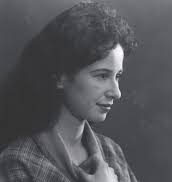
Harriet Feigenbaum Artist
https://www.harrietfeigenbaum.com/home.html
Harriet Feigenbaum is an American sculptor and environmentalist. Her works cover sculpture, film and drawings that are seen all over the world (Wiki and artist bio).
I passed 50 Madison Avenue and noticed how the buildings blended in design. The bottom level of the building was built in 1896 as the headquarters of the ASPCA (American Society of the Prevention of Cruelty of Animals). The building was designed by architects Renwick, Aspinwall & Owen and had a classic ‘club like’ design to it. The building was refitted and added to in 2005 by the firm of Samson Management with a six story addition to luxury condos (CityRealty.com).
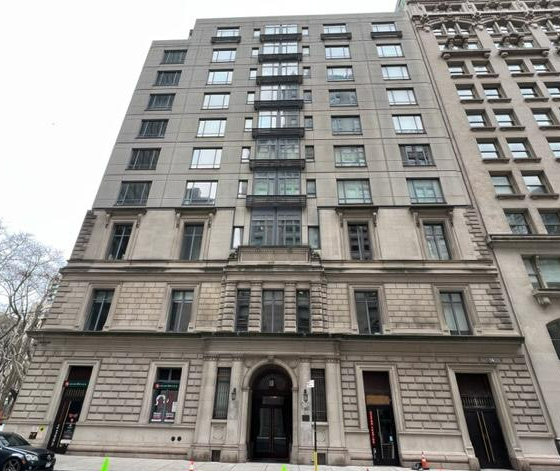
50 Madison Avenue-The former ASPCA headquarters
https://streeteasy.com/building/50-madison-avenue-new_york
Another ornamental building that stands out in the neighborhood is 51 Madison Avenue which is the home of New York Life Insurance Building. The building was designed by architect Cass Gilbert in 1926 in the Art Deco style with Gothic Revival details along the sides and was finished in 1928. The structure is topped with a gilded roof (Wiki & New York Life Insurance history). This is another building that you have to see from all sides.
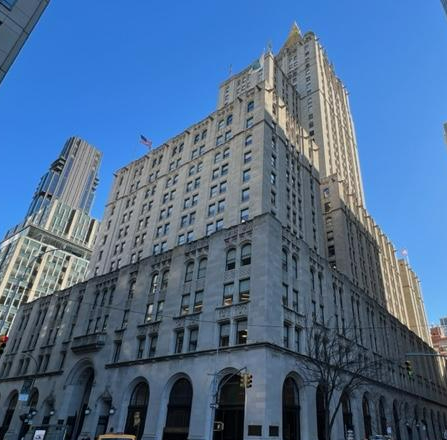
51 Madison Avenue-The New York Life Insurance Building
https://en.wikipedia.org/wiki/New_York_Life_Building
Continuing my walk up Madison Avenue while admiring the architecture of the neighborhood is The James NoMAD Hotel, the former Seville Hotel, on the corner of East 29th Street at 88 Madison Avenue. This interesting hotel has gone through several name changes and renovations since it was built in 1904. The hotel was designed by architect Harry Alan Jacobs in the Beaux Arts style and the annex to the hotel was designed by Charles T. Mott in 1906 (Wiki).
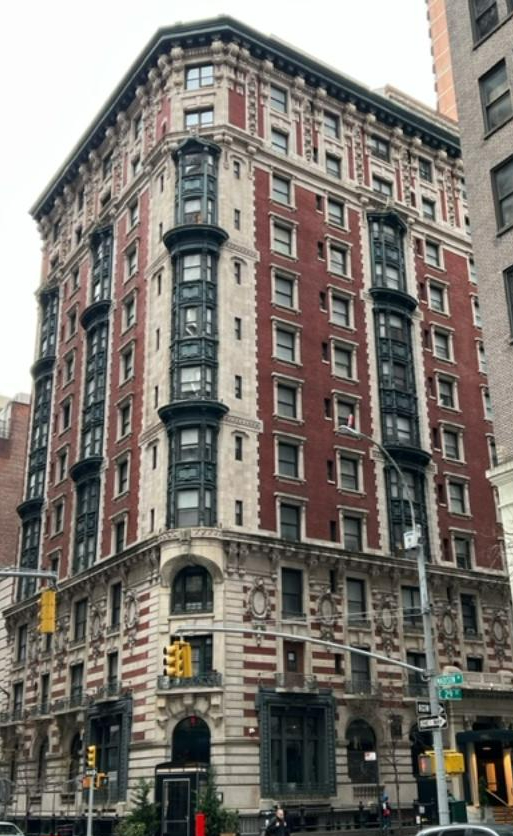
88 Madison Avenue-The James NoMAD Hotel (formerly The Seville)
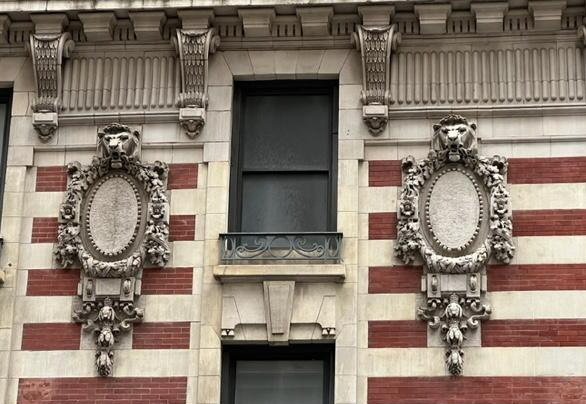
The detail work on 88 Madison Avenue
https://www.realtyhop.com/building/88-madison-avenue-new-york-ny-10016
The outdoor dining was open for the restaurant the first afternoon I had visited the neighborhood even though I thought it was a little cool to eat outside. Even though you can’t go inside unless you are a guest, I could see the lights stung from the street, and it looked very elegant in the outside dining area. It was noted in the paper that they will be keep the tradition of closing Broadway from West 25th to West 28th for the summer.
Across the street from this elegant hotel is 95 Madison Avenue the former Emmett Building. The structure was designed by architects John Stewart Barney and Stockton B. Colt of Barney & Colt for Dr. Thomas Addis Emmet in 1912 when the area was a wholesale district. The building is designed in the French Neo-Renaissance with Gothic style ornamentation (New York Landmark Preservation Commission and Wiki).
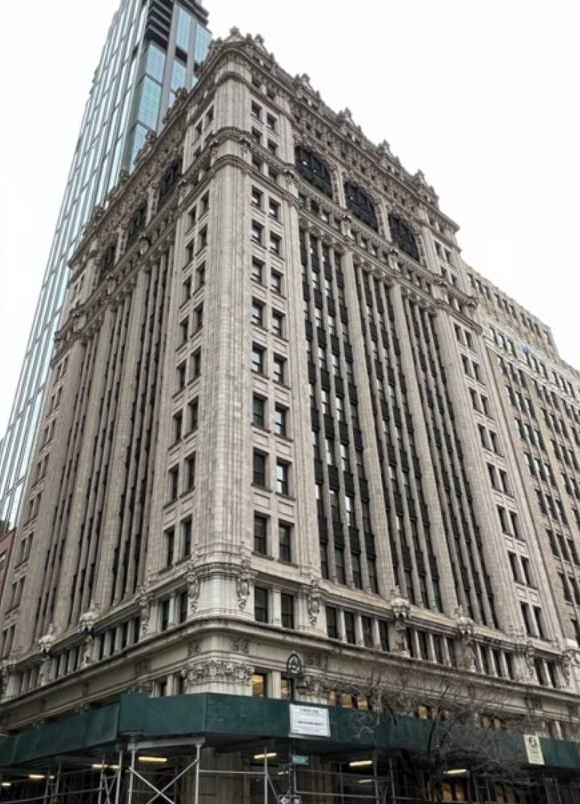
95 Madison Avenue-The Emmet Building
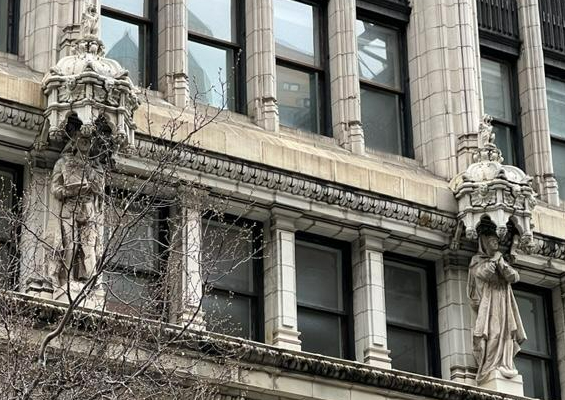
The detail work of 95 Madison Avenue
https://en.wikipedia.org/wiki/Emmet_Building
Heading straight ahead at East 25th Street and Madison Avenue is Madison Square Park, named after our fourth President of the United States, James Madison. This well landscaped park is the gathering place of the residents of NoMAD and has a wonderful playground that has been busy the whole time I have spent in the neighborhood.
Madison Square Park is an interesting little oasis from all the traffic and office space. It has an interesting history since it was designated a public space in 1686 by British Royal Governor Thomas Dongan. It has served as a potters field, an arsenal and a home for delinquents. In 1847, the space was leveled, landscaped and enclosed as a park. It became part of the New York Park system in 1870. There are many historical figures featured in the park (NYCParks.org).
The park today is a major meeting spot for residents and tourists alike with a dog track and the original Shake Shack restaurant.
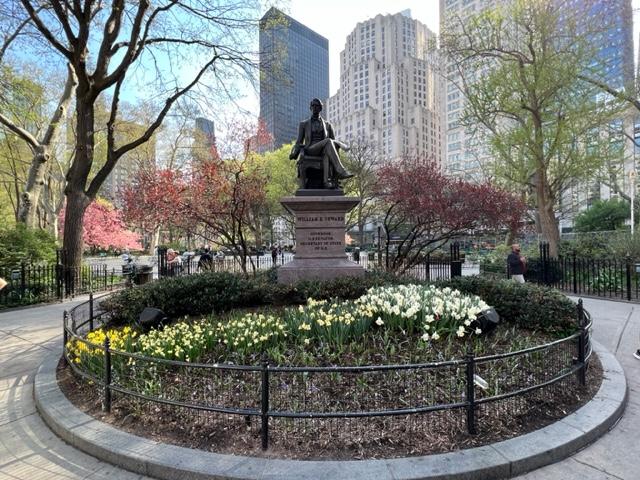
Madison Square Park in the Spring when I was walking the length of Broadway
https://madisonsquarepark.org/
https://www.nycgovparks.org/parks/madison-square-park
When I walked into the park to take a break, it must have been the busiest section of the neighborhood between the playground and the original Shake Shack that were serving food to a crowd clung to their cellphones.

The original Shake Shack is located in Madison Square Park at Park and 23rd Street
https://shakeshack.com/location/madison-square-park-ny
I stopped to look at the statue of our 21st President Chester A. Arthur, who had taken oath just two blocks away in his New York townhouse where the Kalustyan’s Specialty Foods is located at 123 Lexington Avenue (See My Walk in Kips Bay below). I thought about what was going on in our government today and what they must have gone through with this transition.
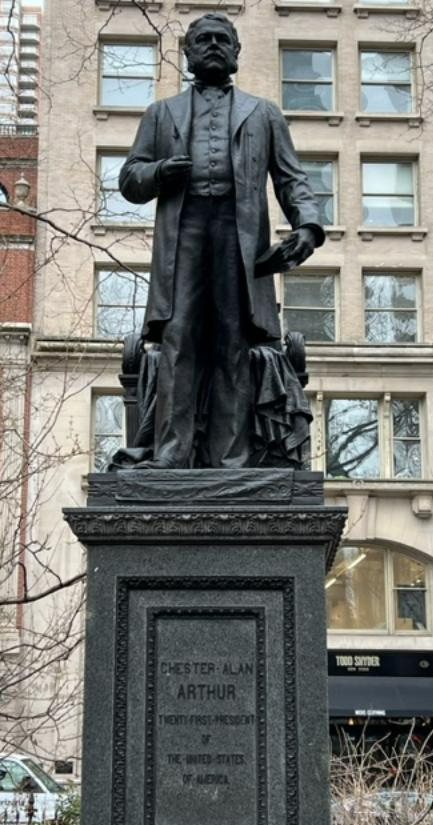
The Statue of Chester A. Arthur in Madison Square Park

President Chester A. Arthur
https://www.whitehouse.gov/about-the-white-house/presidents/chester-a-arthur/
The statue of our 21st President was designed by artist George Edwin Bissell and the pedestal by architect James Brown Lord.

Artist George Edwin Bissell
https://americanart.si.edu/artist/george-edwin-bissell-430
George Edwin Bissell was an American born artist from Connecticut whose father was a quarry-man and marble carver. He studied sculpture abroad in Paris in the late 1870’s and was known for his historical sculptures of important figures of the time (Wiki).
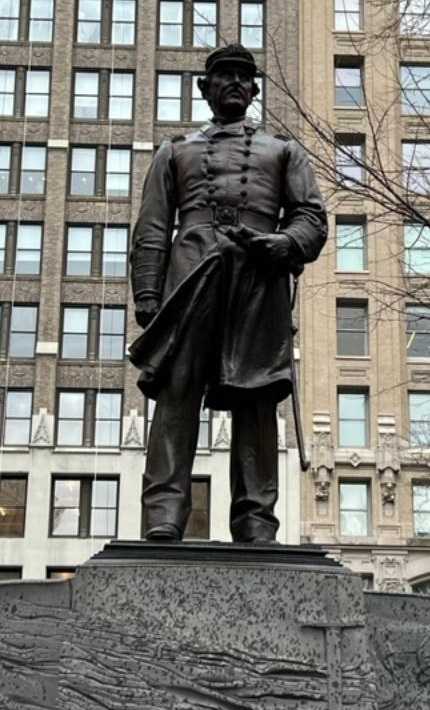
The Admiral David Farragut statue in Madison Square Park by artist Augustus St. Gaudens

Admiral David Farragut
https://www.britannica.com/biography/David-Farragut
Another interesting statue that stands out in Madison Square Park is the of Civil War Navy hero, Admiral David Farragut. Admiral Farragut commanded the Union Blockage of Southern cities and helped capture New Orleans. The statute was designed by sculptor Augustus St. Gaudens. This was the artist’s first major commission when it was dedicated in 1881 (NYCParks.org).

Augustus St. Gaudens
https://www.nps.gov/saga/index.htm
Augustus St. Gaudens was an Irish born American artist whose specialty during the Beaux-Arts era was monuments to Civil War heroes. He had created the statue the William Tecumseh Sherman in the Central Park Mall on Fifth Avenue along with this statue of Admiral Farragut. He had studied at the National Academy of Design, apprenticed in Paris and then studied at the Ecole des Beaux Arts (Wiki).
Upon leaving Madison Square Park and proceeding across East to West 25th Street (Fifth Avenue separates the East Side from the West Side of Manhattan), I was traveling into what was once part of Midtown between the Civil War until WWI and then after that Midtown moved closer to Central Park during the 1920’s through the 1940’s.
Most of the buildings in this section of NoMAD were built with decorative stonework and elaborate ornamentation. There are so many in this section of Manhattan I will highlight the ones that are the standouts. As I walked the border of the neighborhood, you could see many beautiful buildings lining 25th Street.
When walking down East 25th Street from Madison Square Park, the first interesting site you pass is the historic Worth Square, the Memorial to and burial site of General William Jenkins Worth.
William Jenkins Worth was a native New Yorker (Hudson, NY) and decorated Army officer who had served our country in the Battles of 1812, The Second Seminole War and the Mexican-American War. His series of campaigns shaped this Country to where it is today. He died working for the Department of Texas in 1849 (Wiki).

Army General William Jenkins Worth
The General’s remains are buried under the monument at Worth Square at the corner of Fifth Avenue, Broadway and East 24th and 25th Street. General Worth was interned here in November of 1857 on the anniversary of the British leaving the colonies (NYCParks.org).
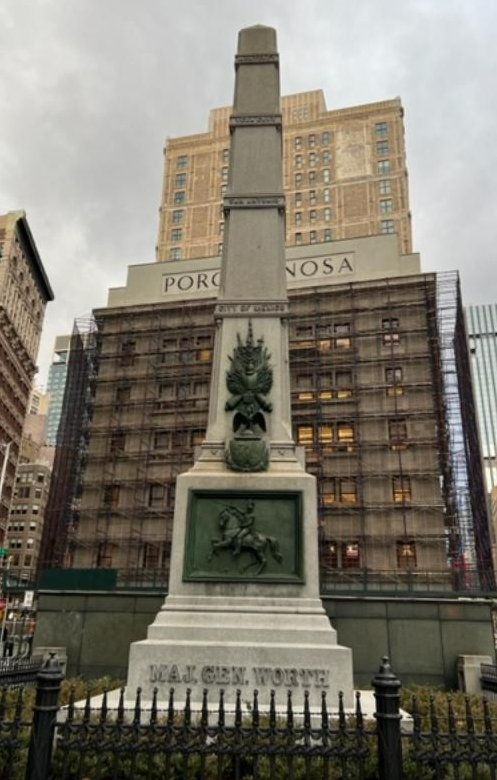
The Worth Monument between East 24th and East 25th Street at Broadway and Fifth Avenue
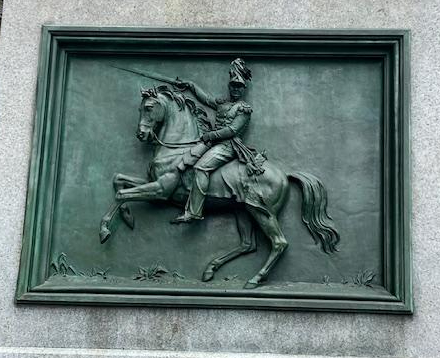
The historic artwork on the monument.
The Worth Monument was designed by artist James Goodwin Batterson, whose main profession was one of the founders of the Travelers Insurance Company in Hartford, CT and helped design the Library of Congress Building in Washington DC. He had immersed himself in his father’s quarrying and stone importing business early in his career and traveled extensively to Europe and Egypt for the job. He designed this monument in 1857 (Wiki).

Artist and Designer James Goodwin Batterson
https://en.wikipedia.org/wiki/James_G._Batterson
Passing Worth Square and continuing down West 25th Street, I noticed the impressive architecture that lines the streets of this section of the Broadway part neighborhood.
At 1123 Broadway is the detailed Townsend Building that was built between 1896-97 and was designed by New York architect Cyrus Lazelle Warner Eidlitz in the Classical style. The building is names for Isaac Townsend whose estate the building was built on (Flatiron Partnership).
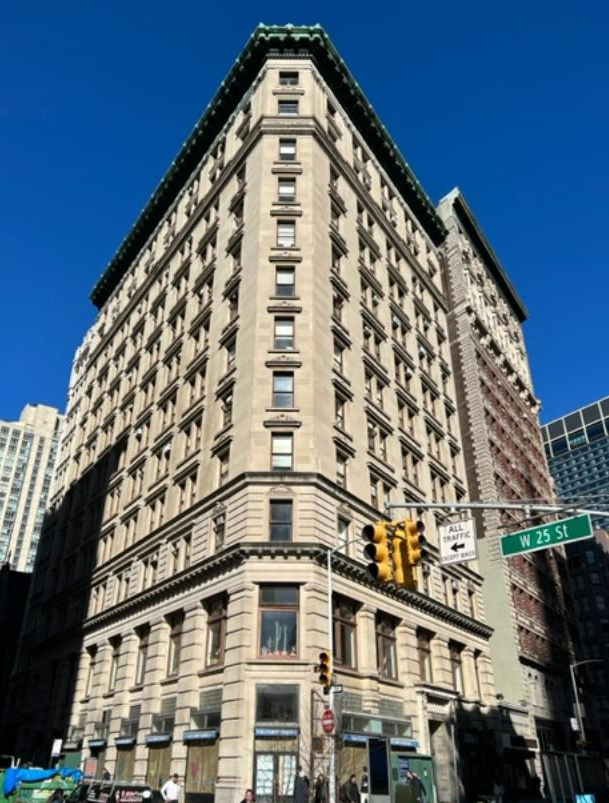
1123 Broadway-The Townsend Building
https://www.loopnet.com/Listing/1123-Broadway-New-York-NY/18855966/
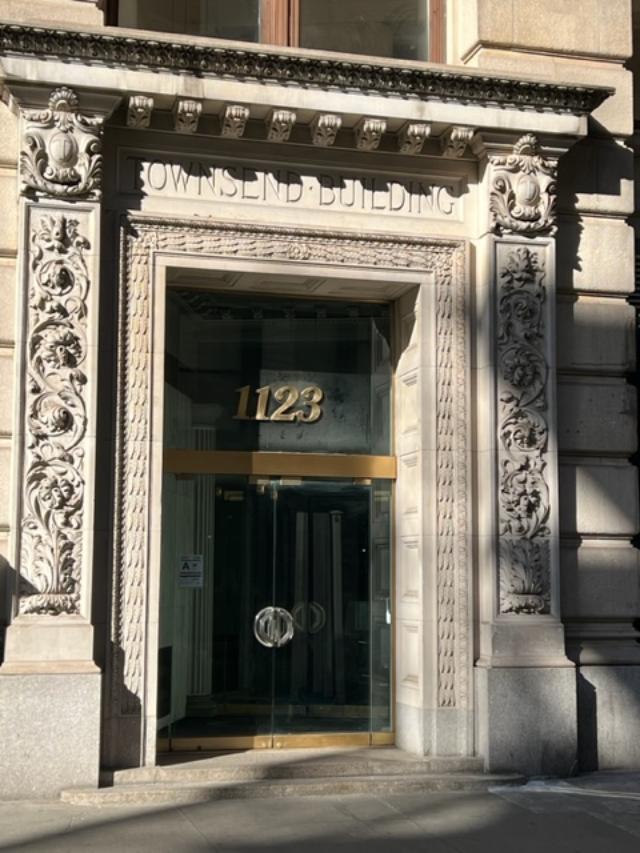
The details on 1123 Broadway are amazing
Another beautiful building is the Heritage Hotel at 18-20 West Fifth Avenue. This detailed hotel was designed by the architectural firm of Israels & Harder in 1901 in the Beaux-Arts style.The hotel opened in 1902 as the Arlington Hotel, a residential hotel for well-heeled guests (Daytonian).
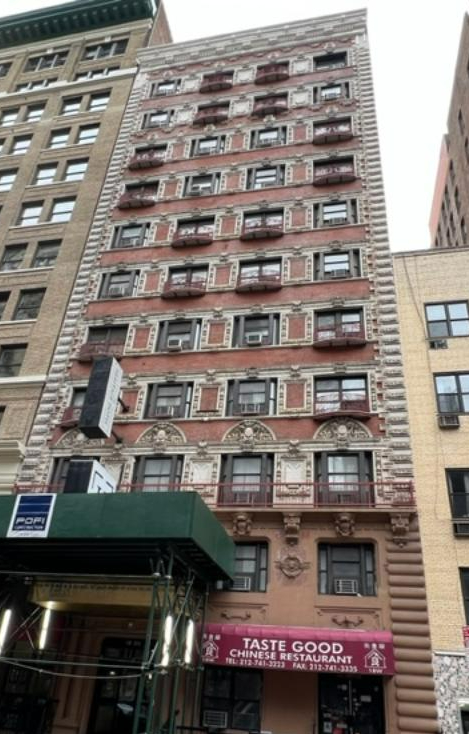
18-20 West 25th Street-The Heritage Hotel
https://www.heritagehotelnyc.com/
http://daytoninmanhattan.blogspot.com/2015/08/the-1902-arlington-hotel-nos-18-20-west.html
By the time I reached Sixth Avenue again, I could see the reason why most people call the Flatiron District a treasure trove of architecture. Block after block walking the borders of this neighborhood was an experience in the hopes and dreams of so many companies of the turn of the last century. When they built these buildings, they were meant to last, and they believed in what they were creating.
What I love about the Flatiron District is the belief that business had in itself to last, to make an impression on the not just the people that worked there but to the outside world. It showed a world of promise and power and showed New York City’s representation in business and culture. Between the Civil War and WWI, you could see the growth in commerce, marketing, retail and the arts representing in these blocks of Manhattan.
This was meant to show the country where New York City stood and what it represented. These were not just buildings but statements to the optimism that a country that had just been through a Civil War could accomplish. While this trend was followed by cities all over the country growing between the wars, New York stood out by doing it first and doing it bigger.
This is why Manhattan is the capital of the World.
Places to Eat:
Pick & Pay Pizza
30 Lexington Avenue
New York, NY 10010
(212) 387-8200
Open: Sunday-Saturday 9:00am-10:00pm
My review on TripAdvisor:
Places to Visit:
Madison Square Park
11 Madison Avenue
New York, NY 10010
(212) 520-7600
https://www.nycgovparks.org/parks/madison-square-park/
https://madisonsquarepark.org/
https://www.facebook.com/madisonsquarepark
Open: Sunday-Saturday 6:00am-11:00pm
My review on TripAdvisor:
Theodore Roosevelt Birthplace National Historic Site
28 East 20th Street
New York, NY 10003
(212) 260-1616
https://www.facebook.com/TheodoreRooseveltBirthplaceNHS
Open: Temporarily closed for renovations
Admission: Free: part of the National Park System
My review on TripAdvisor:
My review on VisitingaMuseum.com:
https://wordpress.com/post/visitingamuseum.com/8411
Fotografiska Museum
281 Park Avenue South
New York, NY 10010
(201) 433-3686
https://www.fotografiska.com/nyc/
https://www.facebook.com/FotografiskaNY/
https://en.wikipedia.org/wiki/Fotografiska_New_York
Open: Sunday-Saturday 9:00am-9:00pm
Admission: Adults $30.00/Senior-Student-Veteran $20.00/Children under 6 Free
My review on TripAdvisor:
My review on VisitingaMuseum.com:
https://wordpress.com/post/visitingamuseum.com/8452
Read my other blogs on walking the Flatiron District:
Day Two Hundred and Forty-Four: Walking the Avenues of the Flatiron District:
https://wordpress.com/post/mywalkinmanhattan.com/25776
Day Two Hundred and Forty-Two: Walking the Borders of the Flatiron District:
https://wordpress.com/post/mywalkinmanhattan.com/24726
Day Two Hundred and Forty-Seven: Walking the Streets of the Flatiron District:
https://wordpress.com/post/mywalkinmanhattan.com/25874
Reading Blogs on NoMAD, Rose Hill, and Kips Bay:
Please read my other blog on walking the Avenues and Streets of NoMAD/Rose Hill:
Day One Hundred & Ninety: Walking the Streets and Avenues of NoMAD/Rose Hill:
https://wordpress.com/post/mywalkinmanhattan.com/16776
Please read my other blog on walking the Borders of NoMAD/Rose Hill:
https://wordpress.com/post/mywalkinmanhattan.com/16580
Please enjoy my blog on ‘Walking the Borders of Kips Bay’ on MywalkinManhattan.com:
https://wordpress.com/post/mywalkinmanhattan.com/15049
Please enjoy my blog on ‘Walking the Streets of Kips Bay’ on MywalkinManhattan.com:
https://wordpress.com/post/mywalkinmanhattan.com/15954
Please enjoy my blog on “Walking the Avenues of Kips Bay” on MywalkinManhattan.com:

I finally felt well enough to continue my walk around Manhattan. I had not been into New York City in six weeks and had really missed my walking around the island. I had finished exploring the Hell’s Kitchen/Clinton neighborhood before I pulled my back and decided to keep my adventures closer to home (Exploring Downtown Boonton-Day One Hundred and Two). I just was not up to coming into the City.
The Garment District once home to many designers and manufacturers in the New York Fashion Industry is not what it was when my Grandfather was an officer in the Ladies Garment Union back in the 1950’s and 60’s. It is not what it once was with the showrooms that were located there when I worked for Macy’s in the 1990’s. Cost of real estate, rezoning for commercial and residential during the Bloomberg Administration and cost of doing business in the…
View original post 7,606 more words

Dining on a Shoestring in the New York City area and beyond.
DiDi Dumpling
38 Lexington Avenue
New York, NY 10010
(212) 466-6618
https://www.dididumplingny.com/menu
Open: Sunday Closed/ Monday-Saturday 11:00am-8:00pm
My review on TripAdvisor:

DiDi Dumpling at 38 Lexington Avenue
I came across this wonderful little dumpling and lo mein shop when I was walking around Kips Bay for my blog, “MywalkinManhattan.com”. I had not had the chance to try the restaurant on those trips to the neighborhood but tried it recently and was thrilled by the food and service of this family owned shop. The food and the service were both excellent.

The Combination Platters are a great deal for lunch
The pot stickers and lo mien combination is so reasonable and the portion sizes are very generous. The pot stickers were pan-fried and crisp on the outside and moist and juicy on the inside.
The dumplings and pot stickers that I tried on my first two trips were filled with…
View original post 308 more words

The weather has finally started to break and it is getting warmer out. It has made it better to do my walks in the City. It figured though I would start my walk on the Avenues of Koreatown/Midtown South/NoNaNe on the coldest day of the week. Even though it was a sunny day the wind whipped through the neighborhood. It was Mother Nature letting me know that it was still winter.
The City was quiet on the afternoon that I came in to finish walking the Avenues of Koreatown/Midtown South/NoNaNe. Even Macy’s seemed quiet when I walked through the store to get from Seventh Avenue to Broadway. I needed to warm up before my walk and I wanted to see if the store was going to prepare for the Annual Flower Show during COVID. I am sure that they will cancel it.
I started my day walking Fifth Avenue from East 34th to East 30th Streets. This is where the most elegant of the Beaux Arts buildings are located. In the midst of all this rebuilding in Midtown, it is Fifth Avenue that has kept its historic architecture. Some of the most beautiful buildings in the neighborhood are located on Fifth Avenue.
Walking down from East 34th Street, I looked up and saw the first of several beautiful buildings at 344 Fifth Avenue. This elegant office building was finished in 1907 and was designed by architects Maynicke & Franke in the Beaux Arts style with large display windows on the bottom and details along the middle and edges of the building (Metro Manhattan).
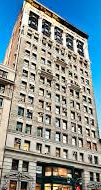
344 Fifth Avenue (was knocked down in 2024)
https://streeteasy.com/building/344-lenox-avenue-new_york/3a
Next to this building is another interesting building that stands out amongst its taller neighbors at 335-399 Fifth Avenue and East 33rd Street is the former A.T. Demarest & Company building. I could tell by its design that it had more of a purpose at one time than being home to a grouping of fast food restaurants.
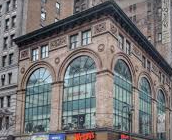
335-339 Fifth Avenue-The A. T. Demarest Building
https://www.realtyhop.com/building/335-5th-avenue-new-york-ny-10016
The building was designed by architects Renwick, Aspinwall & Russell in the Renaissance Revival style with a terra cotta exterior details and large bay windows of a building that showcased the firm’s business in carriages and the dawn of the automotive industry (Daytonian). Look up at the edges of the room for the interesting details of the building.
At the corner of Fifth Avenue and East 32nd Street is 320 Fifth Avenue, the former Reed & Barton Building. Known more now for the CVS at the bottom of the building in the retail space, the former headquarters and showroom of the famous jeweler was built in 1905 by architect Robert Maynicke in the Beaux Art style. You can see by the intricate detail of the top and edges of the building the festoons, wreaths and columns of the building. The company would remain here until 1921 when like the rest of the shopping district moved to upper Fifth Avenue where it remains today (Daytonian/StreetEasy/42 Floors Up).
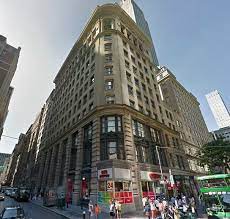
320 Fifth Avenue-The Reed & Barton Building
http://www.brauserealty.com/office/320-fifth-ave
As I continued my walk down Fifth Avenue, there were several other interesting buildings tucked in between the new construction taking place all over this part of the neighborhood. At 315 Fifth Avenue and East 32nd Street is another intriguing building not just for its beauty but for the shape of the design.
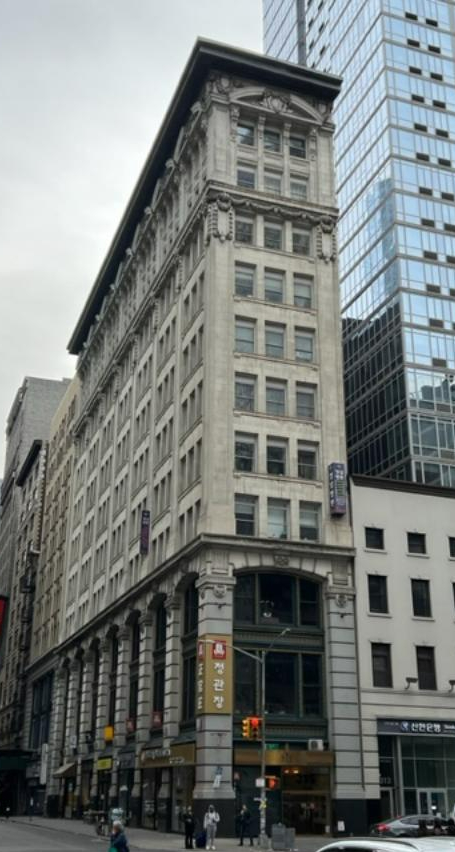
315 Fifth Avenue-The Rock Building
https://www.loopnet.com/Listing/315-Fifth-Ave-New-York-NY/21343740/
The building is known as “The Rock Building” and was built in 1907 for owner Mathias Rock, a local merchant and tailor who made a fortune in his trade and had this building built for his business. The architects for the building were Maynicke & Franke and the building was a hybrid of French Classical and Beaux Arts trim with cast iron show windows and heavy decoration are the room and around the top windows (Daytonian). The beauty of this building is that it is tall and narrow and the way it fits into its space on Fifth Avenue.
Located in the bottom level of 315 Fifth Avenue is the museum/cafe Ginseng Museum Cafe by CheongKwanJang. This unique little museum/retail store has the most beautifully wrapped merchandise and tells the history, production and trade of Ginseng Tea.
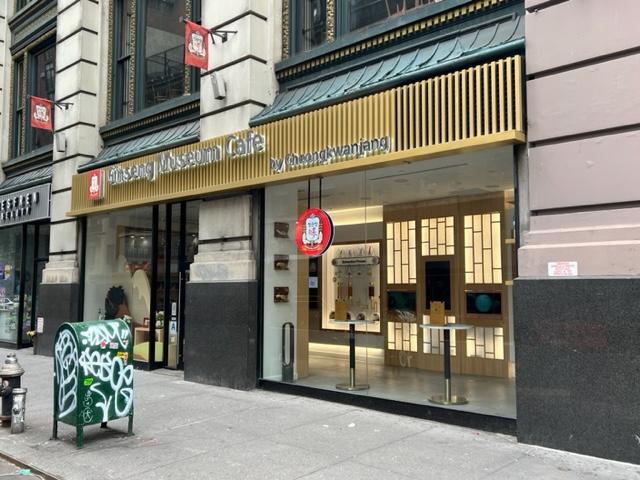
Ginseng Museum Cafe by CheongKwanJang at 315 Fifth Avenue
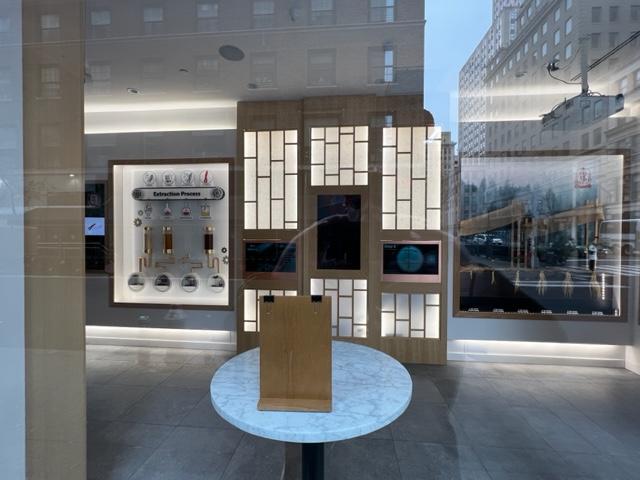
The inside of this unique store/museum concept
https://www.kedglobal.com/newsView/ked202109170005
I noticed the beauty of 303 Fifth Avenue on the corner of Fifth Avenue and East 31st Street. This interesting building was designed by architect Buchman & Fox in the Beaux Arts style and was built in 1909. Known as the ‘Jewelry Building’, it has been home to many prominent retailers in the past such as FAO Schwarz and now serves as office and retail space (MetroManhattan).
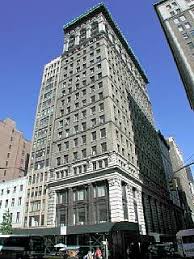
303 Fifth Avenue-The Jewelry Building
https://www.metro-manhattan.com/buildings/303-fifth-avenue/
On the border of Koreatown/Midtown South with NoMAD/Rose Hill is the The Wilbraham Building at 284 Fifth Avenue. Its old charm beauty really stands out. Most of the buildings on 30th Street were non-descriptive. The Wilbraham Building, a beautiful Victorian building built between 1888-90 that was commissioned by jeweler William Moir. The building was designed by architect D. & J. Jardine in the Romanesque Revival style. The building has been home to Shalom Brothers Rugs for many years (StreetEasy.com).

284 Fifth Avenue at East 30th Street-The Wilbraham
https://streeteasy.com/building/the-wilbraham
As I made my way back up Fifth Avenue and studying the history of the area, I never realized how this part of Fifth Avenue once mirrored the same shopping district twenty five blocks up the avenue. Since the 1990’s, most of these companies have since gone out of business but remembered by us who used to shop there in the 1970’s and 80’s.
Reaching the border of Koreatown/Midtown East/Murray Hill is the former B. Altman Department Store that closed in 1989 and in the other corner is the Empire State Building, once the tallest building in the world.

The B. Altman Building at 361 Fifth Avenue was built by Benjamin Altman for the new location for his ‘carriage trade’ store. The store was designed by architects Trowbridge & Livingston in the “Italian Renaissance Style” in 1906. The palatial store was home to couture clothing, fine furniture and expensive art work.
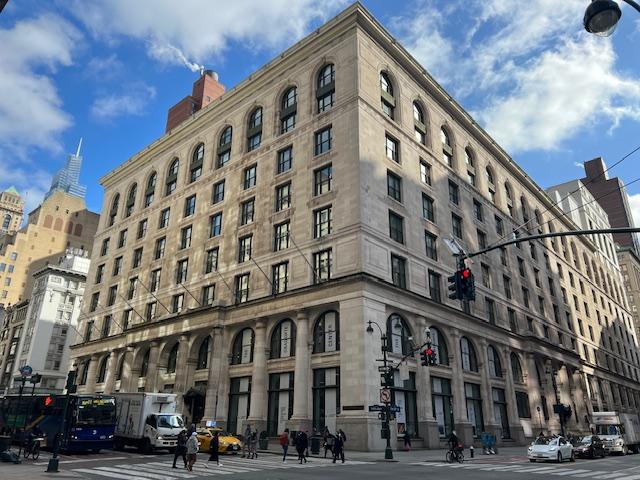
The former B. Altman Department Store at 361 Fifth Avenue
https://en.wikipedia.org/wiki/B._Altman_and_Company
Still the most amazing building in the neighborhood is the Empire State Building on the corner of Fifth Avenue between West 33rd and 34th Streets. It’s the most impressive and well known building in the neighborhood is the former tallest building in the world at 102 floors, the Empire State Building at 2-20 West 34th Street.
The Empire State Building is probably the most famous building in New York City outside of maybe Rockefeller Center and one of the most prominent. The building sits on the side of the former Astor Mansion and the first Waldorf-Astoria Hotel before the current one was built in the 1930’s on Park Avenue. The building was designed by Shreve, Lamb & Harmon in 1930 (Wiki).
The Empire State Building was inspired during the “Race to the Sky” movement in New York City during the 1920’s prosperity with builders vying for the “World’s Tallest Building” title. This was going on in cities all over the US at a time of great innovation in building. The building was conceived in 1929 long before the Stock Market Crash of 1929 as 40 Wall Street and the Chrysler Building were being constructed (Wiki).
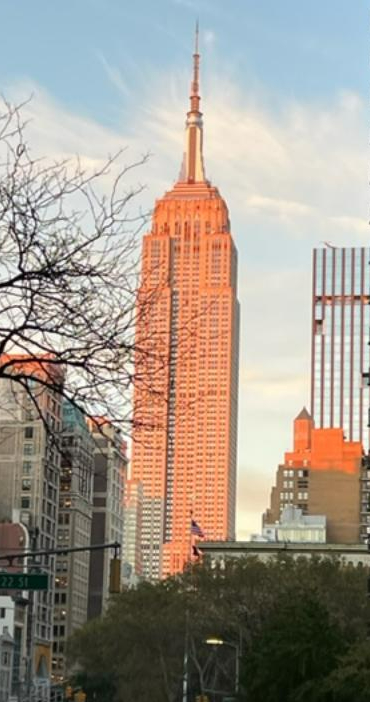
The Empire State Building at 20 West 34th Street at sunset
As the shopping district left Sixth Avenue below 23rd Street, the former “Ladies Shopping Mile” (read my Victorian Christmas Blog on the shopping district) gave way to stores opening between 34th Street to 42nd Street and eventually to the Fifth Avenue locations between 50th and 60th Streets where what is left of the great stores stand today.
My blog on the Ladies Shopping Mile and a “Victorian Christmas”:
https://wordpress.com/post/mywalkinmanhattan.com/8117
Across the street from the old B. Altman’s building is another impressive building also under scaffolding 10 East 34th Street, The Ditson Building. The impressive building with it intricate details was built in 1906 and designed by architects Townsend, Steinle & Haskell in the Beaux-Arts style for Charles H. Ditson. Mr. Ditson ran the New York division of his family’s company, Charles H. Ditson & Company, a publisher and musical concern (Daytonian).
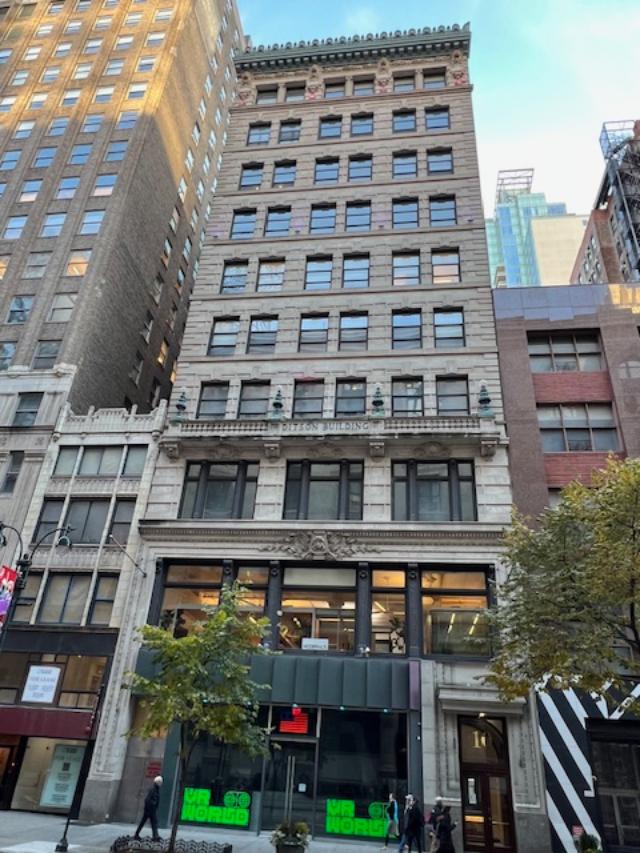
10 East 34th Street-The Ditson Building
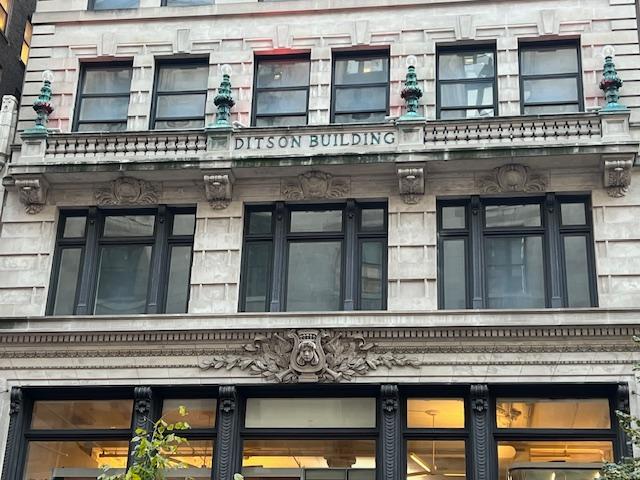
The beauty is in the details at The Ditson Building.
https://www.loopnet.com/Listing/10-E-34th-St-New-York-NY/16111124/
Madison Avenue below East 34th Street changes from its more ’boutique’ image from above East 42nd Street. Like the rest of the neighborhood, this area is ‘in transition’ during the pandemic. I have never seen so much renovation and building going on in one neighborhood. Still you have your ‘architectural gems’ tucked here and there in the neighborhood.
On of the most beautiful and innovative at the time it was built is 181 Madison Avenue on the corner of Madison Avenue and East 34th Street, the Madison Belmont Building.
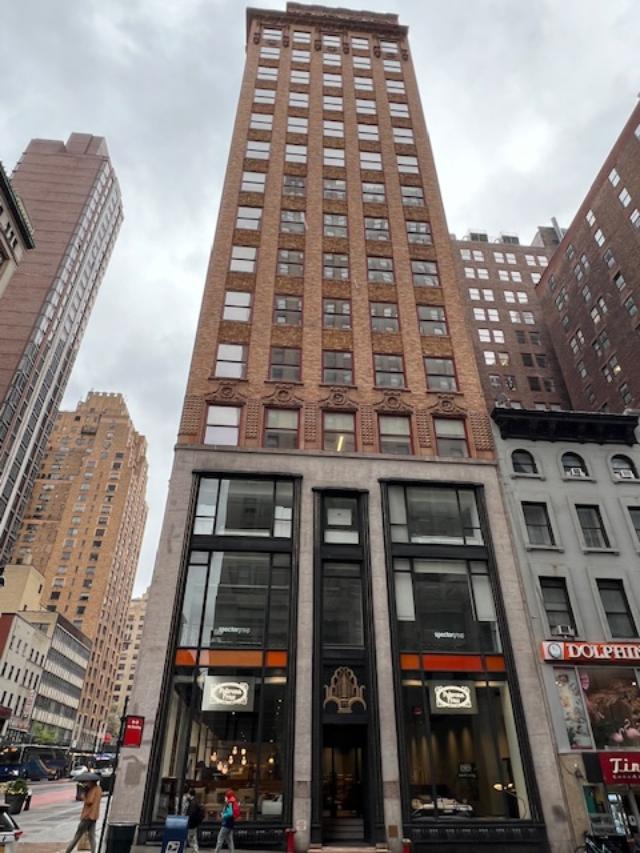
181 Madison Avenue-The Madison Belmont Building
https://en.wikipedia.org/wiki/Madison_Belmont_Building
I walked past the grill work of this interesting office building. The Madison Belmont Building at 181 Madison Avenue was built in 1924 and designed by architects Warren & Wetmore in the Renaissance style with Art Deco details for the Cheney Brothers Silk Company (Wiki/NewYorkArchitecture).
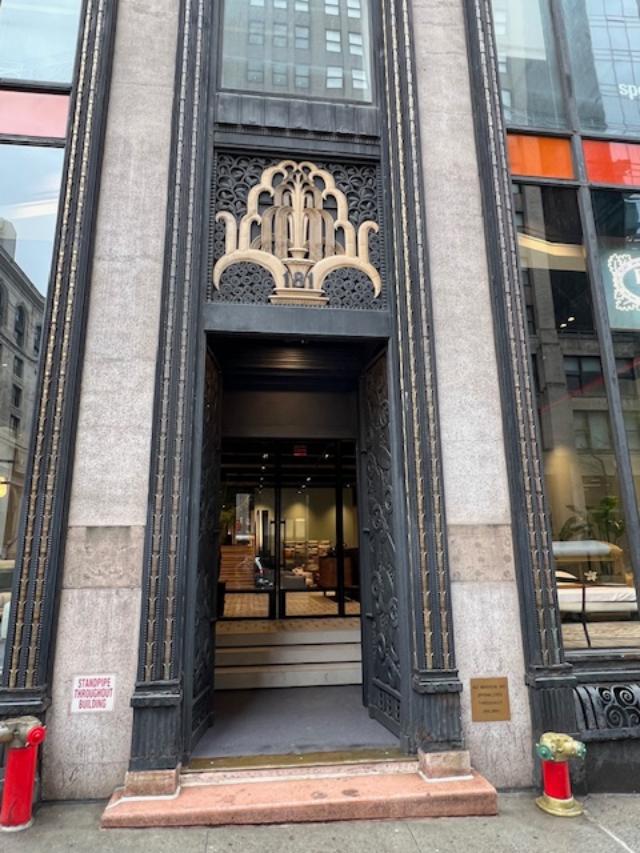
“The Madison Belmont Building” at 181 Madison Avenue
https://en.wikipedia.org/wiki/Madison_Belmont_Building
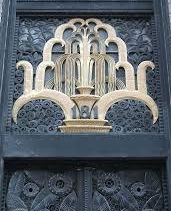
Look up at the interesting grill work and details of the building
Further down Madison Avenue hidden under all the scaffolding is the American Academy of Dramatic Arts Building, the former “Colony Club” at Madison Avenue at 120 Madison Avenue. This very ‘Colonial’ building was built in 1907 and designed by architect Stanford White of McKim, Mead & White.
The club had been founded in 1903 by Florence Jaffray Harriman creating a club that would rival private Men’s clubs at that time (Wiki/Daytonian). In 1917 the club relocated to its new home on Park Avenue and in 1963 was bought for the home of The American Academy of Dramatic Arts. It is currently going under an extensive renovation (Wiki/Daytonian).
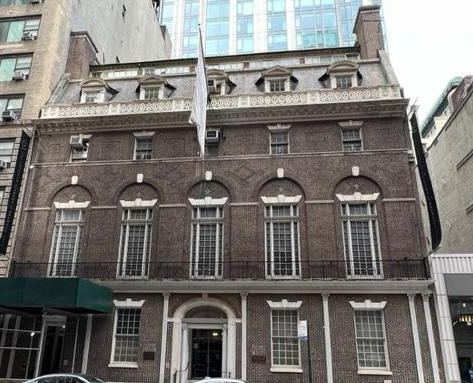
120 Madison Avenue-The American Academy of Dramatic Arts Building/The Colony Club
https://streeteasy.com/building/american-academy-of-dramatic-arts
Up and down the rest of this part of Madison Avenue is filled with a hodgepodge of new and old architecture as this part of the neighborhood is transforming to newer buildings.
I made my way around to Park Avenue and here like Madison Avenue is made up of many newer buildings and a lot of recent building has been going on. One building did stand out which itself is going through a renovation is 4 Park Avenue. This stately building was once the Vanderbilt Hotel.
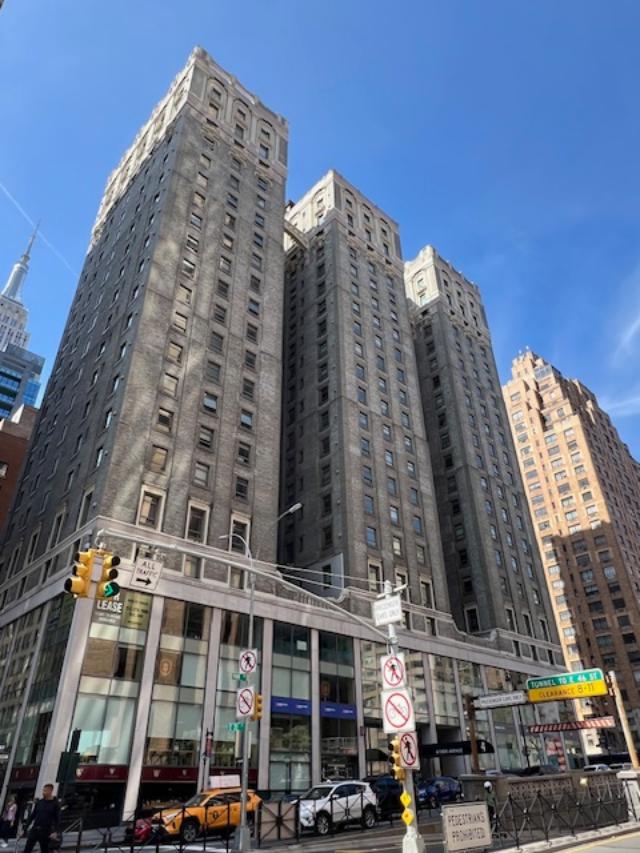
4 Park Avenue-The former Vanderbilt Hotel
https://streeteasy.com/building/four-park-avenue
The hotel was built in 1912 by Albert Gwynne Vanderbilt and designed by architects Warren & Westmore who had designed Grand Central Terminal for the Vanderbilt family. Mr. Vanderbilt had wanted a luxury hotel built near the terminal and it is located six blocks away. The hotel was designed in the British Adams style with clean lines and a brick face. It remained a hotel until after the 1964 World’s Fair and then was sold and converted into a office building (Daytonian).
Most of the neighborhood was relatively newer buildings either soaring corporate headquarter types or apartment buildings in an ever growing residential neighborhood. It was in front of 475 Park Avenue that I saw a piece of art that just stood out. The piece was “Triad” by artist Irving Marantz. The statue was inspired by Picasso’s “The Three Musicians” (ArtNet).
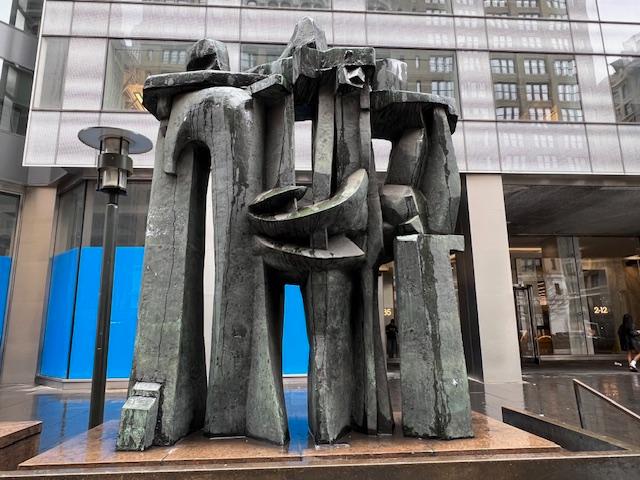
“Triad” by artist Irving Marantz
Mr. Marantz studied at the Art Student League and graduated from the Newark School of Fine and Industrial Art. He served at the Director of the Princetown Art Association and Museum and taught at the Brooklyn Museum Art School (ArtNet/American Art).
https://americanart.si.edu/artwork/irving-marantz-8945
The afternoon grew cooler and I finished my walk of the Avenues of Koreatown/Midtown South with lunch with a little hole in the wall dumpling restaurant in the Garment District. Stick to my Pot Potstickers is at 224 West 35th Street. The food is so good here and made nicer by the fact that you can eat inside. I would never thought that eating inside would be such a big deal but in the era of COVID it has become so.
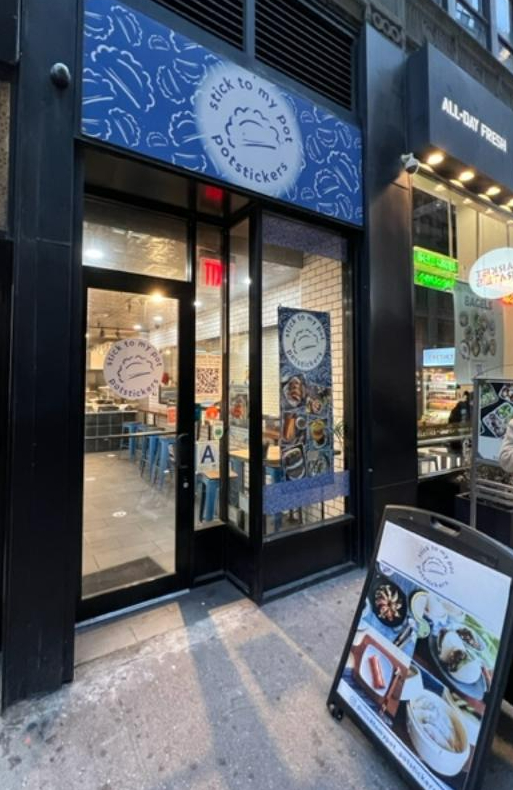
I love the restaurant’s logo
The dumplings here are so good! They are freshly made on premises and are loaded with freshly ground pork, chives and spices and are pan-fried perfectly ($3.99). Crisp on the outside and tender on the inside. Dipped in their spicy soy sauce were perfect on a cool afternoon. Their scallion pancakes were delicious as well ($2.99). Just eating at the bar and relaxing after a long walk meant so much. I forgot how much fun it was to eat INSIDE a restaurant again.
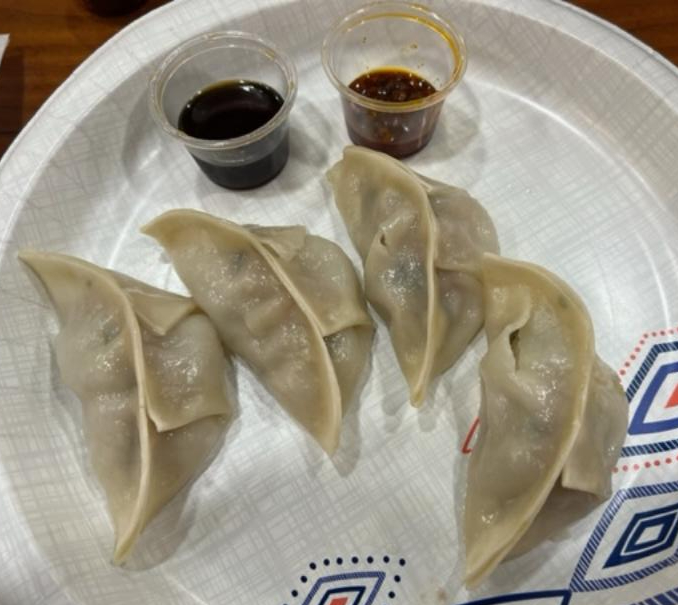
The dumplings here are excellent
Exploring the neighborhood was interesting and good exercise. Its a nice way to spend the afternoon.
My time walking around the neighborhood of Koreatown/Midtown South/NoNaNe:
Walking the Borders of the Koreatown/Midtown South/NoNaNe:
https://wordpress.com/post/mywalkinmanhattan.com/16912
Walking the Streets of Koreatown/Midtown South/NoNaNe:
https://wordpress.com/post/mywalkinmanhattan.com/17125
Places to Eat:
Stick to my Pot Potstickers
224 East 35th Street
New York, NY 10001
(646) 822-2003
https://www.facebook.com/sticktomypot/
Open: Sunday Closed/ Monday-Friday 11:00am-8:00pm/Saturday 11:00am-7:00pm
My review on TripAdvisor:
My review on DiningonaShoeStringinNYC@Wordpress.com:
https://wordpress.com/post/diningonashoestringinnyc.wordpress.com/2017
Places to Visit:
Ginseng Museum Cafe by CheongKwanJang
315 Fifth Avenue
New York, NY 10016
(212) 685-1003
Open Sunday 12:00pm-6:00pm/Monday-Saturday 11:00am-7:00pm
My review on TripAdvisor:

Dining on a Shoestring in the New York City area and beyond.
Lahor Kabab
106 Lexington Avenue
New York, NY 10016
(646) 620-3183
https://www.facebook.com/pages/category/Indian-Restaurant/Lahori-kabab-1563556847278295/
Open: Sunday-Saturday 10:00am-11:30pm
My review on TripAdvisor:
I enjoy coming to this little hole in the wall where it is a lot of home cooking and caters to many of the delivery people, Uber Eats and Doordash drivers, cabbies and members of the Traffic Police on the NYPD. It is always crowded in the afternoon for lunch.
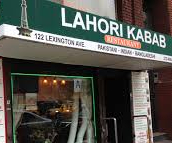
Lahori Kabab is a great little hole in the wall in “Curry Hill”
I love all the appetizer foods for snacks when I am researching the area for my blog, “MywalkinManhattan.com” traveling to Kips Bay. There is a nice selection of freshly made items both appetizers and entrees.
The restaurant is not the fanciest. It is lined with booths on both sides of the restaurant and the counter in the back has shelves lined with all the entrees and other…
View original post 196 more words

I returned to the NoMAD (North of Madison Square Park) neighborhood after the holidays were over on a rather cold and cloudy day. What a difference three weeks makes in the mood of New York City. What ever was left of that little Christmas cheer that was in Manhattan was over. The streets had gotten really quiet again. Not the same when I walked the neighborhood on Christmas Day but still the busiest place in the neighborhood was Madison Square Park. Those little kids really love that playground and the dog walkers are finding refuge in the Dog park. Madison Square Park has been a blessing in disguise for many people in this neighborhood.
I started my walk on West 30th Street and Broadway. I have walked this part of Broadway many times on my full length walk of Broadway from 242nd Street to the Bowling Green Park at the tip of the Island and recognized many of these buildings from previous walks. This part of Broadway is so impressive in architecture and played such an important park of the City’s development as a business district.
My ‘Walk down the Length of Broadway’ has been done four times:
https://wordpress.com/post/mywalkinmanhattan.com/14302
As the neighborhood as started to gentrify before my eyes (I have never seen so many buildings being gutted and sandblasted back to life), a new generation of upscale stores and restaurants are finding a home on Broadway between 30th to 26th Streets. Broadway right now is closed off for outdoor winter dining in the era of COVID. I could not believe the way people are bundling up to eat outside.
One of the most impressive buildings on the edge of the neighborhood that is currently under renovation is 1200 Broadway, former The Gilsey House Hotel.
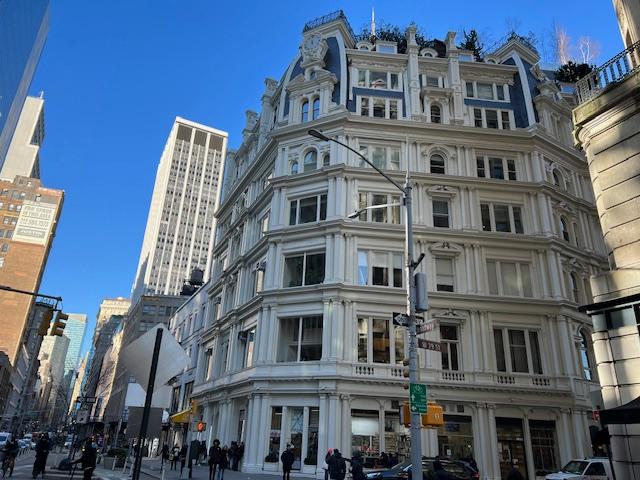
1200 Broadway-The Gilsey House Hotel
https://en.wikipedia.org/wiki/Gilsey_House
This elegant Victorian confection was designed by architect Stephen Decatur Hatch with a cast iron facade in the Second Empire style. The hotel opened in 1872 as a luxury hotel catering to well-heeled guests when this was the main business district. I now is being renovated for residential use (Wiki).
One of the most beautiful buildings on Broadway is 1181 Broadway, The Baudouine Building, at the corner of Broadway and West 28th Street. The building was built for furniture maker Charles A. Baudouine with architect Alfred Zucker. The building was completed in 1896 (Daytonian).

1181 Broadway-The Baudouine Building
http://daytoninmanhattan.blogspot.com/2013/09/the-1896-baudouine-bldg-no-1181-broadway.html
The ornate building has a unique feature on the top in the form of a small Greek temple on the roof that was once used for the Baudouine Realty business. There was a succession of businesses using the building over the years but it has now given way to apartments (Daytonian). You really have to walk around this building to admire its details done in terra cotta and limestone.
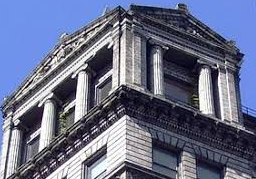
The Greek Temple roof at 1181 Broadway
Walking down Broadway, I passed 1133 Broadway, The St. James Building. It is another building that makes you stop and take notice of the detail work on the outside of the building. The St. James was built in 1896 by architect Bruce Price in the Beaux Arts style with a limestone exterior and noted for its arched windows (New Yorkitecture).
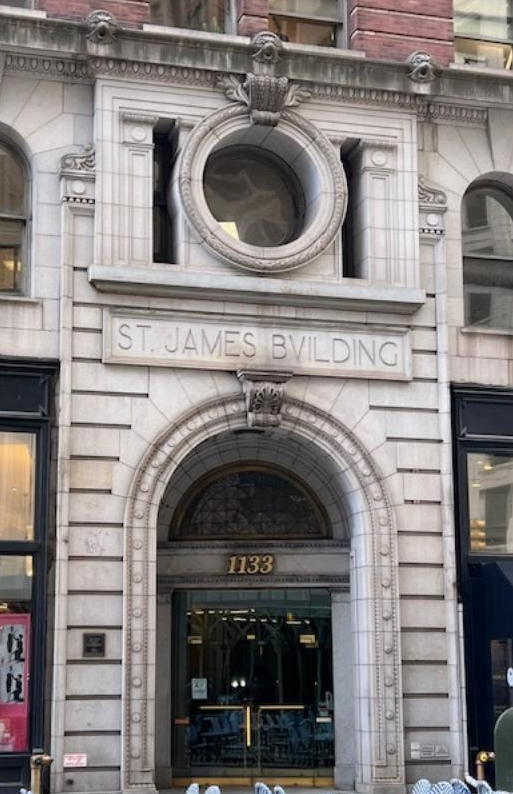
1133 Broadway The St. James Building entrance.
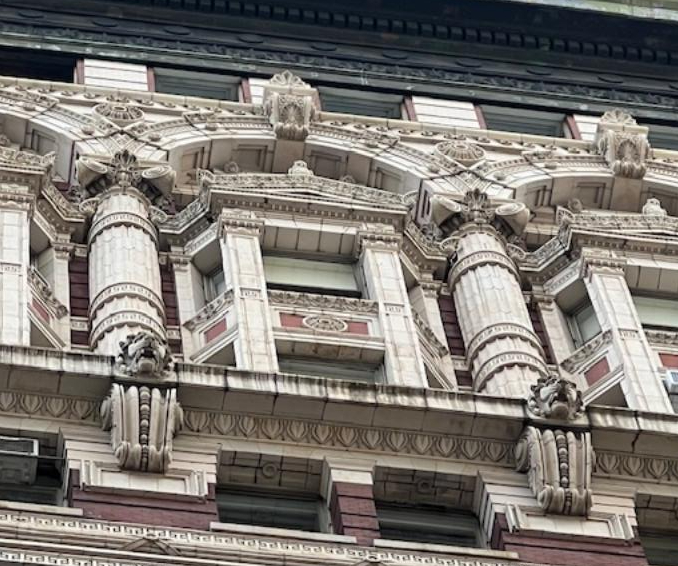
The embellishments on the top of the building.
The buildings in this section of Broadway became more commercial towards the turn of the Ninetieth Century in a ‘race to sky’ with the rise of early skyscrapers (Flatiron Partnership).
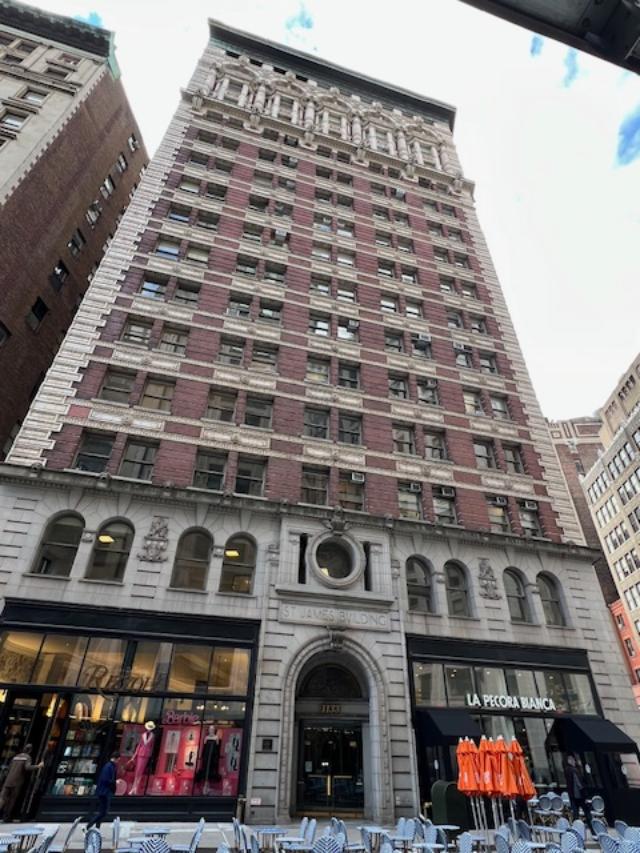
1133 Broadway-The St. James Building
https://42floors.com/us/ny/new-york/1133-broadway
One building that stands out in the neighborhood that sits right near Madison Square Park like another overgrown confection amongst the other buildings is 1132 Broadway (also known as 210 Fifth Avenue), the Cross Chambers Building, once home to the Marc Cross & Company leather goods store. This detailed building was designed by architect John B. Snook & Sons in the Beaux Arts style (Daytonian).
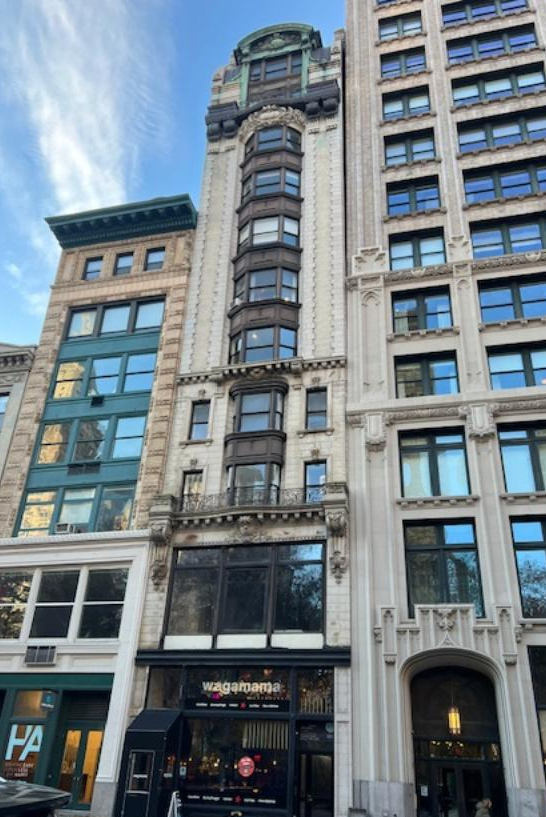
1132 Broadway-The Cross-Chambers Building (210 Fifth Avenue)
https://www.cityrealty.com/nyc/flatiron-union-square/210-fifth-avenue/61843
This marble clad building stands guard impressively amongst the surrounding buildings and you really have to look closely of the details in design to see its beauty. Walking closer to the park, another stand out building is 1128 Broadway (212 Fifth Avenue).
This impressive building is next door to 210 Fifth Avenue and faces Madison Square Park between West 25th and West 26th Streets. This former commercial building was converted to residences in 2016. The building was built in 1912 by architects Schwartz & Gross in the Neo-Gothic and Romanesque style. The building is amazing when it is lit at night (Flatiron Partnership).
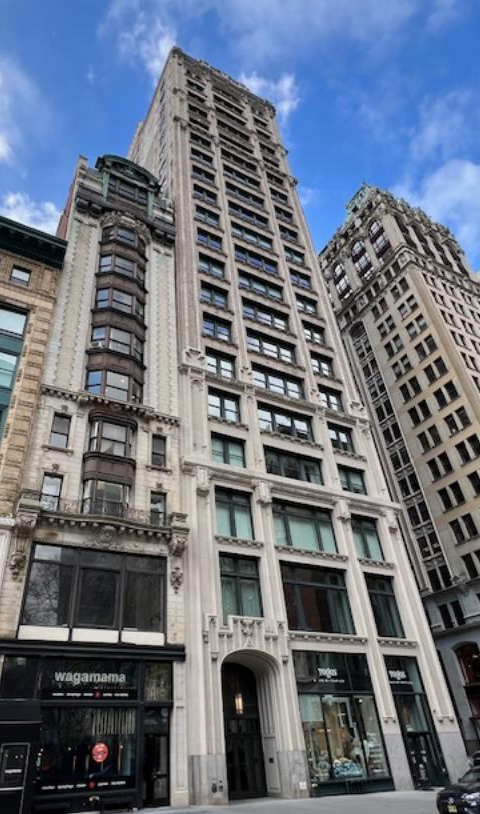
210 & 212 Fifth Avenue (1128 and 1132 Broadway) across from Madison Square Park
http://daytoninmanhattan.blogspot.com/2019/04/the-1905-cross-chambers-building-210.html
Making my way through the park, I relaxed by the playground again and could not believe how busy it was for a late afternoon. I was wondering if these kids were in school or had virtual classes and were taking a break. If the parents were cooped up in the apartments surrounding the park with their kids, maybe it was them that needed the break and the fresh air. Either way, the kids were having a ball and climbing all over the place while the parents talked amongst themselves happy to see other adults.

Madison Square Park in the summer months
https://www.nycgovparks.org/parks/madison-square-park
From the park, I started my trip up Fifth Avenue from 25th to 30th Street. Fifth Avenue is the dividing line between the West Side and the East Side of Manhattan and has been almost the cultural divide between these two sections of Manhattan over the years.
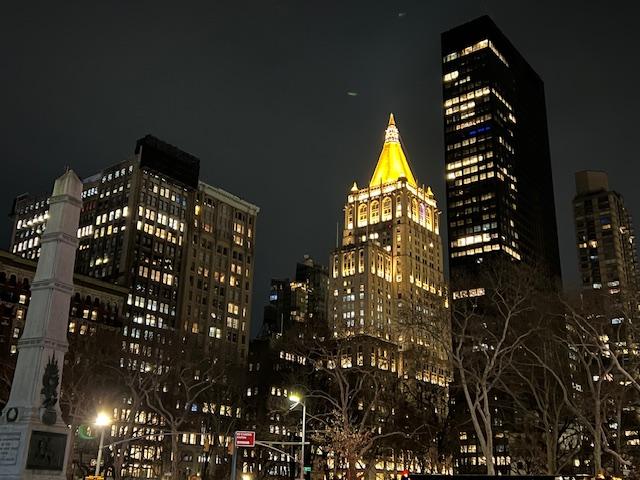
Madison Square Park at night.
For years when I was working in Manhattan in the Rug industry, this had been the Handmade Rug District and the Textiles District for the Garment Industry. Slowly this is giving way to more residential and commercial use for other industries such as the growing Tech, Advertising and Multi-Media industries that have been growing since 1998. It has been because of the fiber optic cables that line Eighth and Ninth Avenues along with beauty of all these classic buildings. More and more people want the charm of these Beaux-Arts style buildings that just a decade ago were considered obsolete and were being knocked down.
I finished my afternoon by having dinner at AweSum Dim Sum at 160 East 23rd Street. Since dining inside was still closed in the City, I had to brave eating my dinner at one of the outdoor tables in the 40 degree evening with no pool heaters in site. I could not believe the other five tables were filled as well. It shows the popularity that this restaurant has gotten in the four months I have been visiting this neighborhood.
I explored the Dim Sum menu and settled on an order of Fried Rice Dumplings, an order of Spring Rolls and for dessert an order of Baked Cream Buns. Everything was nicely wrapped in small containers and boxes and I ate the furthest table by East 23rd Street. Talk about a view at twilight. All the lights were coming on and surprising the traffic around the restaurant was busy.
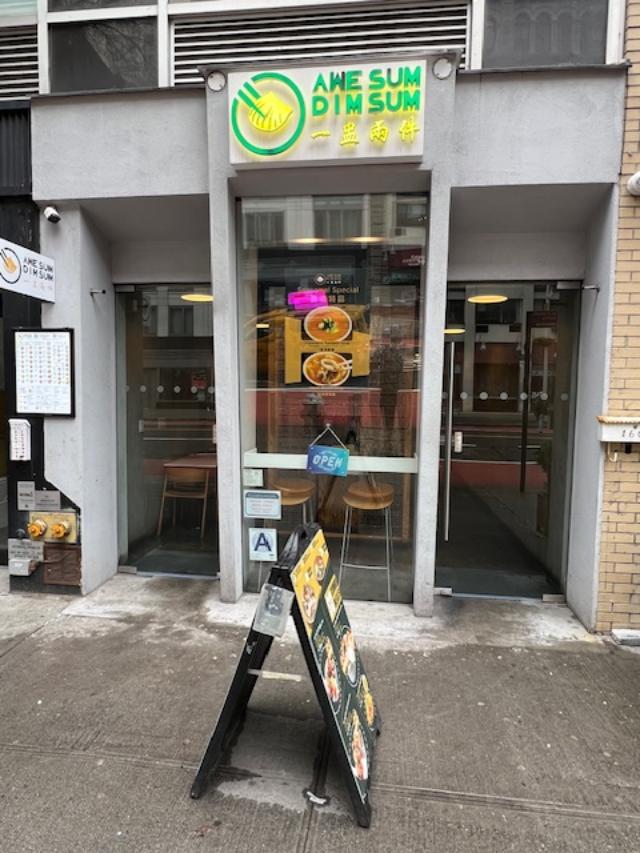
AweSum Dim Sum at 160 East 23rd Street
The food here is excellent and reasonable. The Cream Buns especially were crisp on the outside due to the rice dough and sweet on the inside. Everything on the menu here is terrific.
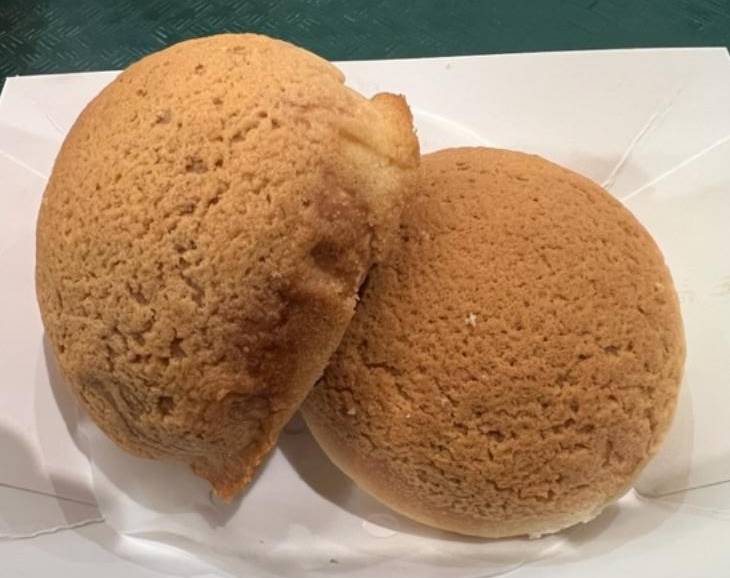
The Cream Buns here are amazing
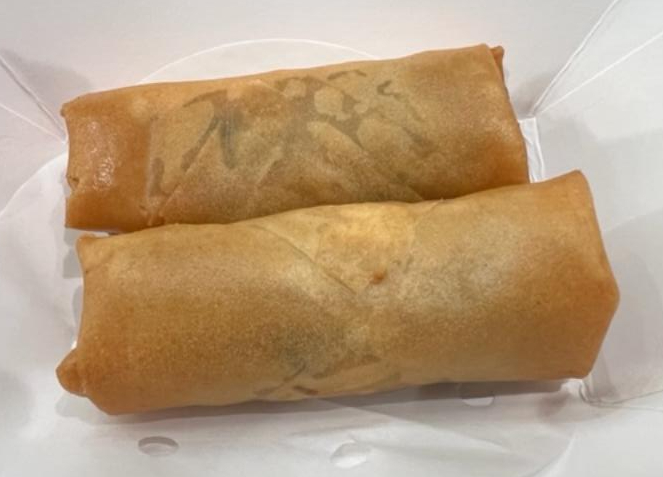
The Spring Rolls are delicous
Fifth Avenue has so many charming buildings as well. Walking up Fifth Avenue from Madison Square Park I passed one of the most impressive buildings at 225 Fifth Avenue, the former Brunswick Hotel and called The Grand Madison. It presides over the northern part of Madison Square Park.
This impressive building also once the New York Gift Building was designed by architects Francis H. Kimball and Harry E. Donnell in the Renaissance Revival style in 1906. The outside of the impressive building is built with multi-color brick and limestone (StreetEasy).
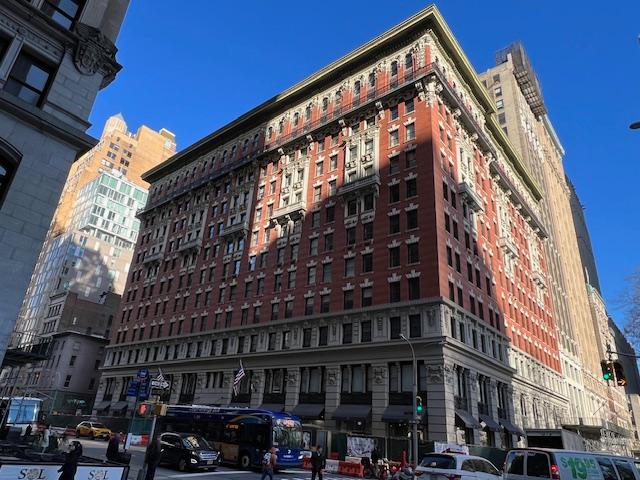
225 Fifth Avenue-The Grand Madison/The former Brunswick Hotel
https://en.wikipedia.org/wiki/The_Grand_Madison
As I headed up Fifth Avenue, one neighborhood museum you should not miss is the Museum of Sex at 233 Fifth Avenue. Talk about an interesting museum dedicated tastefully to the art and history of sex.
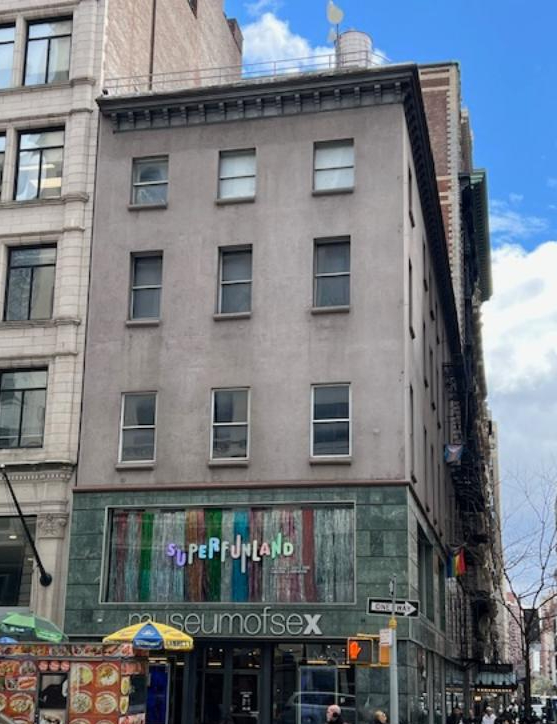
Museum of Sex at 233 Fifth Avenue
Homepage
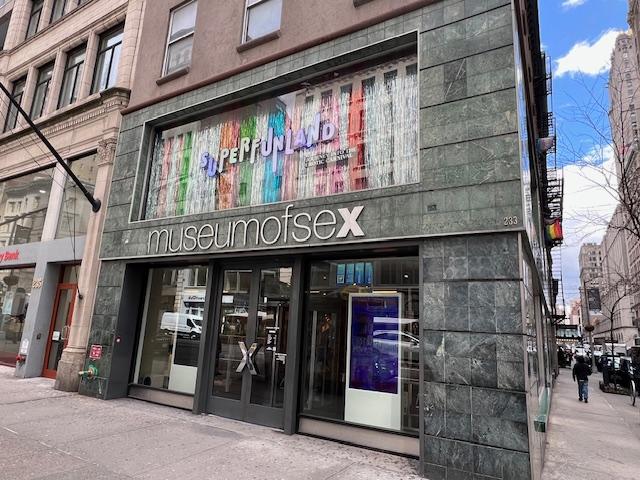
I had visited the museum in the Pre-COVID days (that seems like a lifetime ago) and visited the exhibitions on the “History of Pornography” in film and “Punk Lust: Raw Provocation 1971-1985”, an exhibition on the ‘Punk Music Scene’ during the height of the ‘sexual revolution’. I also saw their “Artifacts” exhibition that opened their very unusual collection to the public.

Items from the movie “Deep Throat” in the “Artifacts” show at the museum
There is some very interesting art in this museum as well as they were building ‘Funland’ while I was visiting so I have to go back and see the exhibition. Don’t miss their interesting gift shop.

Funland at the Museum of Sex

Funland at the Museum of Sex
At the corner of West 27th Street and Fifth Avenue, is 236 Fifth Avenue with a colorful painting of a Victorian woman by artist Triston Eaton. The painting has many meanings from the emancipation of women through the “Ladies Mile” shopping district where women could walk without being escorted by a man to the trail of the century of the Stanford White shooting.
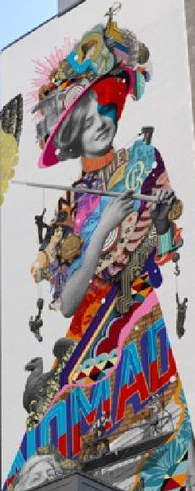
“The Gilded Lady” on the side of 236 Fifth Avenue by artist Triston Eaton (no longer there as of 2023)
Artist Triston Eaton is an American born artist who graduated from the School of Visual Arts in New York City and started his career in the toy industry. He is now sought out today for his large-scale murals (Artist Bio).

Artist Triston Eaton in front of “The Gilded Lady” (Triston Eaton Bio)
As I continued the walk up Fifth Avenue, I passed another architectural gem at 242 Fifth Avenue, The Bow Building. This unique building was finished in 1885 and was converted to apartments in 2016 (CityRealty.com).
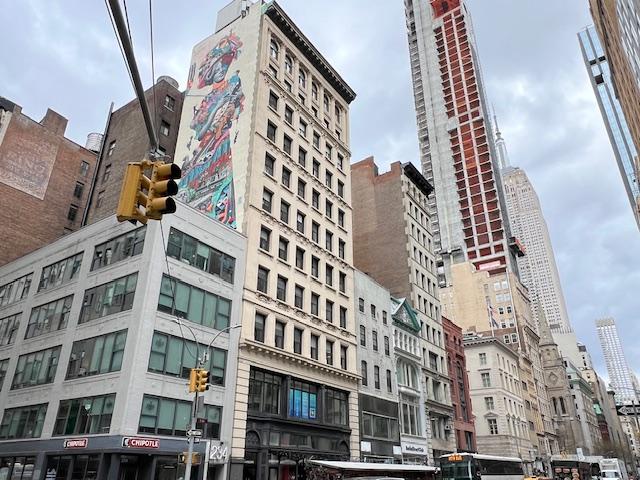
Fifth Avenue at East 23rd Street
The building was the former home of John C. Ely, a real estate owner and was originally built in 1883 as a private brownstone home. In 1885, architect George Harding converted it from residential to a commercial building with the addition of the large bay windows and a cast iron front (Daytonian).
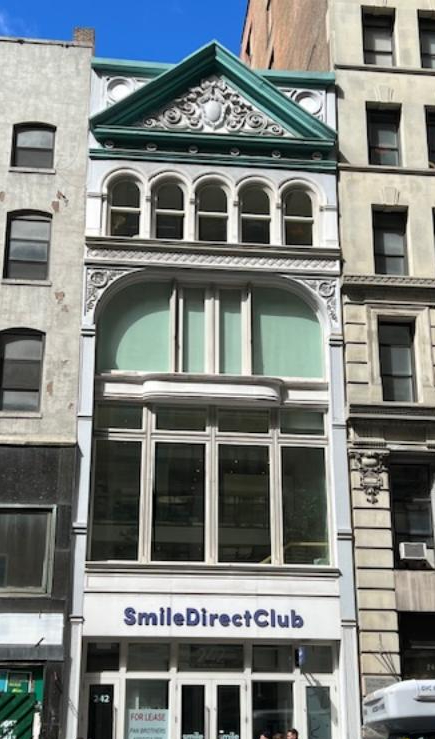
242 Fifth Avenue-The Bow Building
http://daytoninmanhattan.blogspot.com/2014/06/the-1885-renovation-of-no-242-fifth.html
Just further up Fifth Avenue near East 28th Street is 256 Fifth Avenue which also has the most interesting facade. The building was built by furniture maker Charles A . Baudouine when he started to buy real estate. The building was designed by architects Alfred Zucker (who also designed 1188 Broadway for the same owner) and John H. Edelman and was completed in 1893. The building is designed in the Moorish Revival style and was designed for retail use that started to fill the area at the later half of the 1800’s (Daytonian).
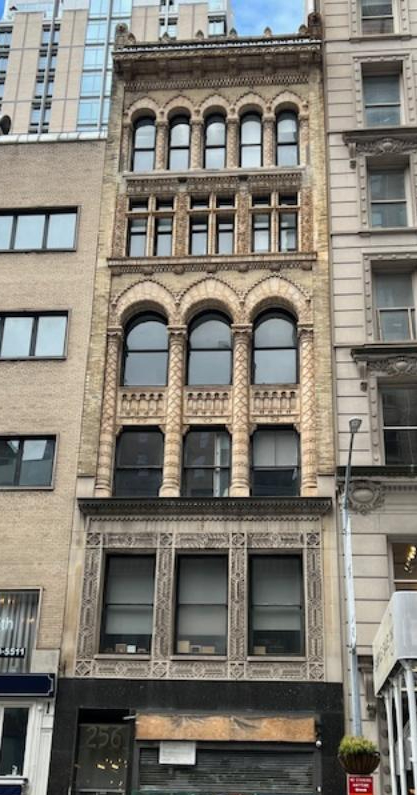
256 Fifth Avenue
http://daytoninmanhattan.blogspot.com/2011/07/1893-moorish-fantasy-no-256-fifth.html
Tucked in the courtyard of The Cambia Hotel at 123 West 28th Street are some interesting flower paintings lining the walls of the courtyard. These colorful paintings enhance the look of a hotel that was built in the middle of the Flower District.
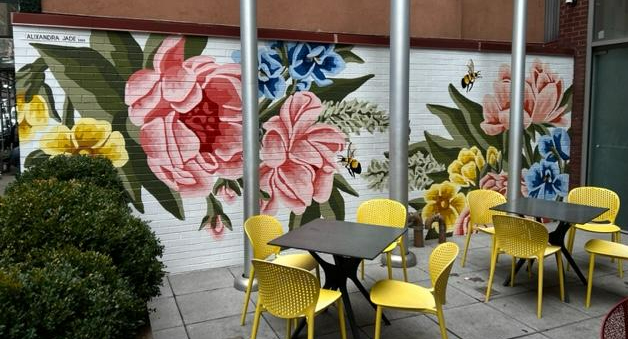
The Cambria Hotel courtyard painting at 123 West 28th Street

The other wall
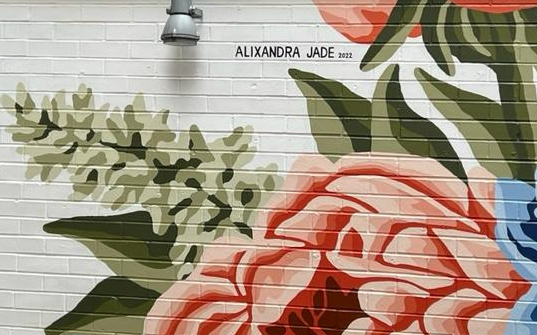
Artist Alixandra Jade painted this in 2022. It was painted after I toured the neighborhood

Alixandra Jade is an artist and owner of Alixandra Jade Art & Design. She has a BS in Design in Visual Communications from the University of Alberta. She is known for her bold abstracts and murals.
At the tip of the neighborhood between East 29th and 30th Streets is the Marble Collegiate Church at 272 Fifth Avenue and 1 West 29th Street. The Marble Collegiate Church is one of the oldest churches in New York City being part of the Reformed Dutch Church. It was founded in 1628.
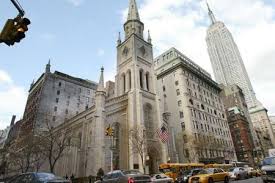
The Collegiate Marble Church at 272 Fifth Avenue at 1 West 29th Street
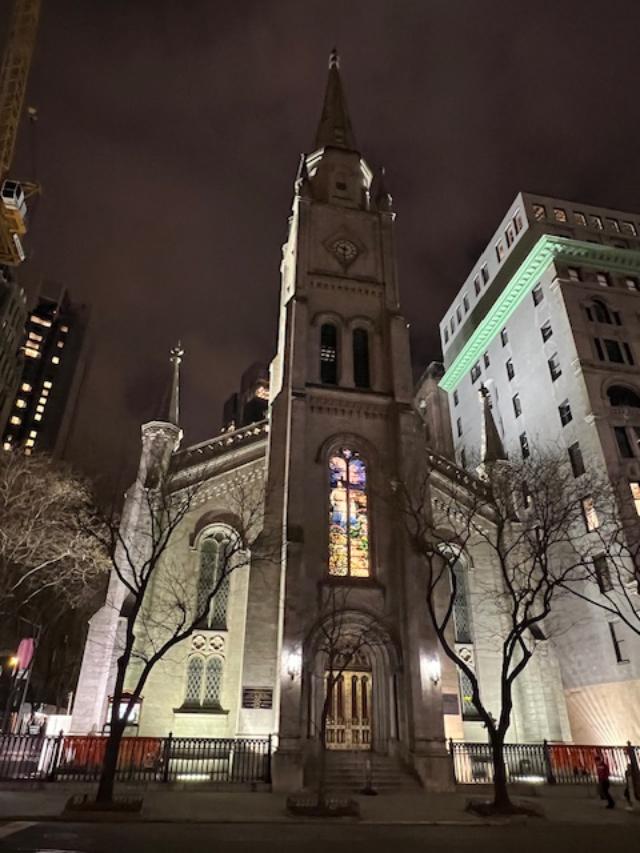
The church at night during the holidays in 2023.
The church building was built between 1851 and 1854. It was designed by architect Samuel A. Warner in the Romanesque Revival style with Gothic Trim and is made of Tuckahoe marble (Wiki).
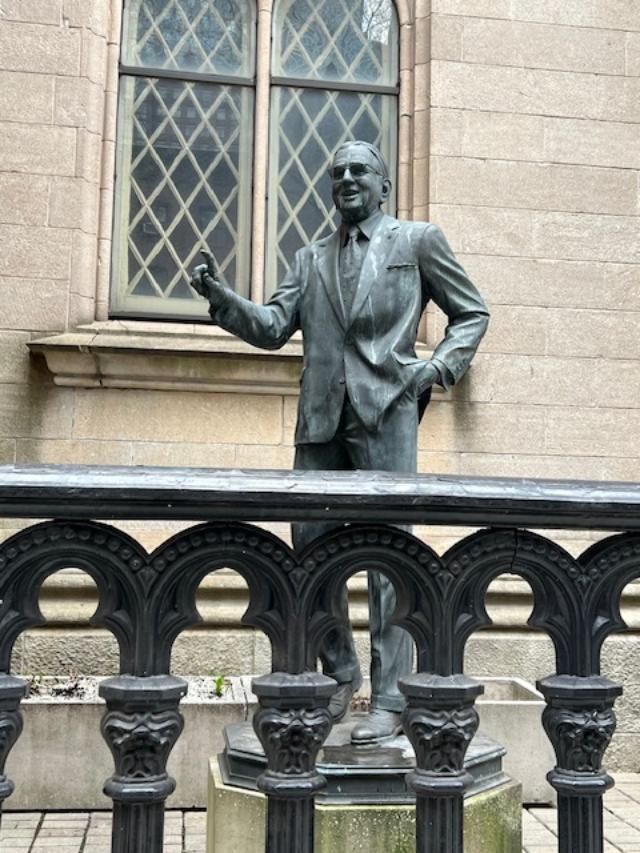
The Dr. Norman Peale statue just outside the church.
https://en.wikipedia.org/wiki/Norman_Vincent_Peale
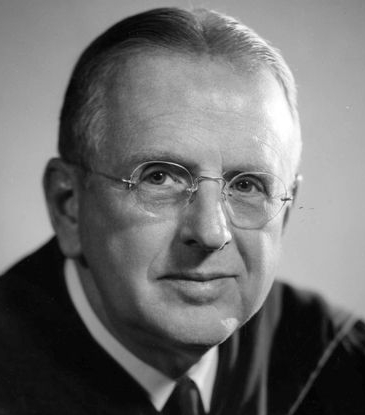
Clergyman and Author Norman Peale who wrote “The Power of Positive Thinking”
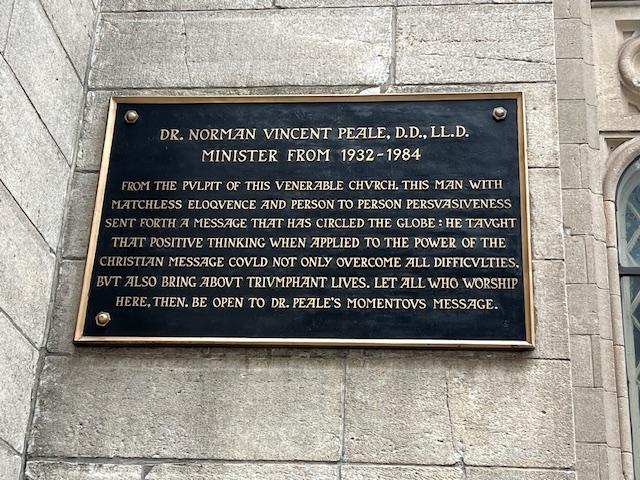
The plaque outside the church dedicated to Dr. Norman Peale.
For dinner that evening, I made a detour back through Kips Bay to try Kips Bay Deli at 545 Second Avenue again for dinner. Indoor dining was still not available in Manhattan so I ordered a sandwich and took it with me to the little plaza across the street from Hassenfeld Children’s Hospital at NYU Langone on the corner of East 34th Street and First Avenue.
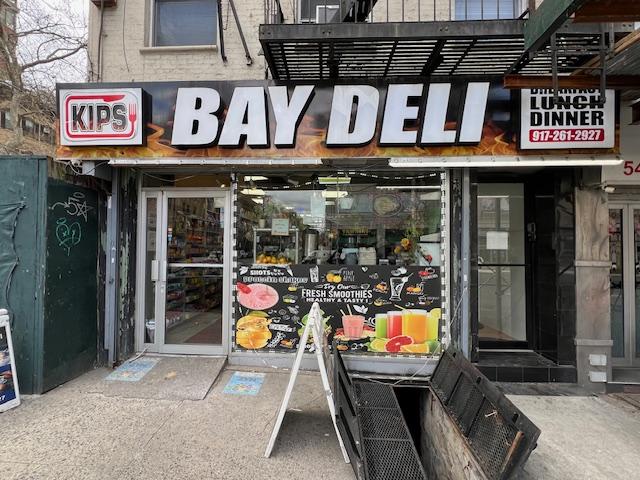
Kips Bay Deli is at 545 Second Avenue
https://kips-bay-deli.business.site/
The sandwiches at Kips Bay Deli are just excellent and can easily feed two people. I ordered a Chicken Parmesan on a hero roll and it was just excellent (see my review on TripAdvisor and DiningonaShoeStringinNYC@Wordpress.com). The sandwich was stuffed with two large fried chicken cutlets with tomato sauce and fresh mozzarella. I was starved from all that walking up and down both Broadway and Fifth Avenue. It tasted so good on a cool night. I just sat and watched the doctors leave from their shifts that evening.
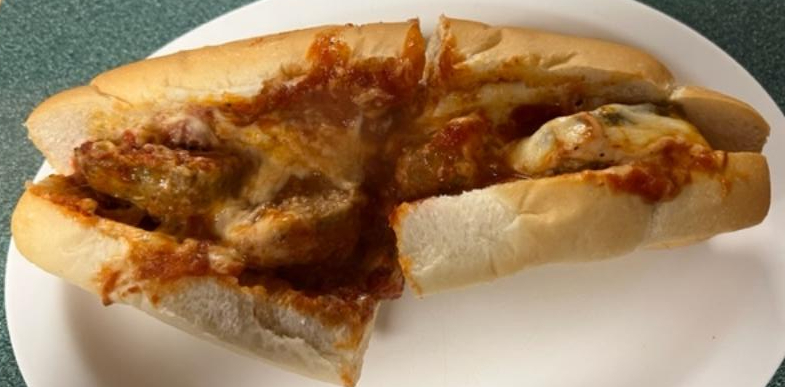
The Chicken Parmesan sandwich here is really good
My last afternoon in NoMAD, I explored all the side streets from West to East 30th to West to East 25th Streets again between Sixth and Madison Avenue. I saw a lot of the same buildings that lined both Broadway, Fifth and Madison Avenue before and it was nice to admire them from all angles. Even on the side streets, I can tell even in the era of COVID this is an extremely desirable neighborhood and buildings are being gutted and renovated.
I started back in Madison Square Park to figure out my game plan. On this cool day, the park was extremely busy. The dog walkers were all talking amongst themselves while the kids were all yelling and screaming in the playground.
I started my walk on the corner of Madison Avenue and East 26th Street and made my way down the street. I passed the now closed Museum of Mathematics at 11 East 26th Street (now at 225 Fifth Avenue) and looked through the window. The museum finally reopened after its COVID closing in December of 2022. This interesting interactive museum is perfect for young children and their parents.
The museum is all about teaching children math from a hands-on approach. There are two floors of displays where children and adults alike can participate in the activity.

Museum of Mathematics at 225 Fifth Avenue
https://www.facebook.com/MoMath1/
I found the Tessellation Display and the Human Tree to be fun for me to play at and create my own art while learning something about math and its distinctions. Still, it is geared for children under the age of twelve.
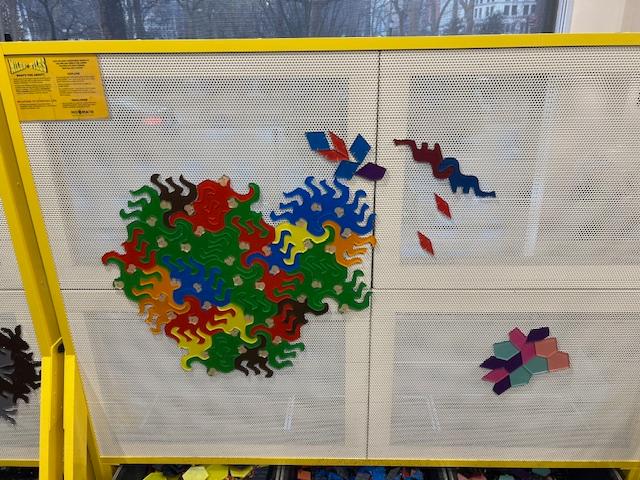
The Tessellation Display at the National Museum of Mathematics

The Human Tree at the National Museum of Mathematics
Walking down from East 26th to West 26th Streets to Sixth Avenue, I passed many of the historic buildings on Fifth Avenue and Broadway again with their beautiful details and their impressive stonework. This is true until you get to Sixth Avenue with its modern apartment buildings that were built in the late 1990’s until today.
Slowly the borders and businesses of the Garment and Flower Districts around Sixth Avenue are slowly disappearing. There is still some small manufacturing and whole businesses left but little by little these buildings are being torn down for another building or gutted for an upscale merchant or restaurant. The character of the old neighborhood will be gone within the next five years.
As I made my back down West 26th Street and rounded the corner on Madison Avenue to East 27th Street, so many interesting small buildings stood out when you left the confines of the Avenues. There is one standout that has an interesting history at 13-15 East 27th Street, The Prince Edward Hotel.

13-15 East 27th Street-The Prince Edward Hotel
https://www.realtyhop.com/building/13-west-27th-street-new-york-ny-10001
The was designed by architect Howard Greenley in the Beaux-Arts style and opened in 1904 with a ‘British Flair’ with a “Ladies Tea Room’ and a “British Tap Room’ as noted by the signs outside. When it opened, it had its own celebrity clientele that spanned that era. The history changed 65 years later when in the 1970’s it was considered one of the most dangerous welfare residencies in the City. Today the hotel is going through another renovation to bring it back to its glory (Forgotten New York).
Another set of beautiful buildings you have to look up at to admire their beauty is 28-32 West 27th Street which was built in 1909 in the Beaux-Arts design and 34 West 27th Street next door which has a unique design itself and both are heavily decorated.
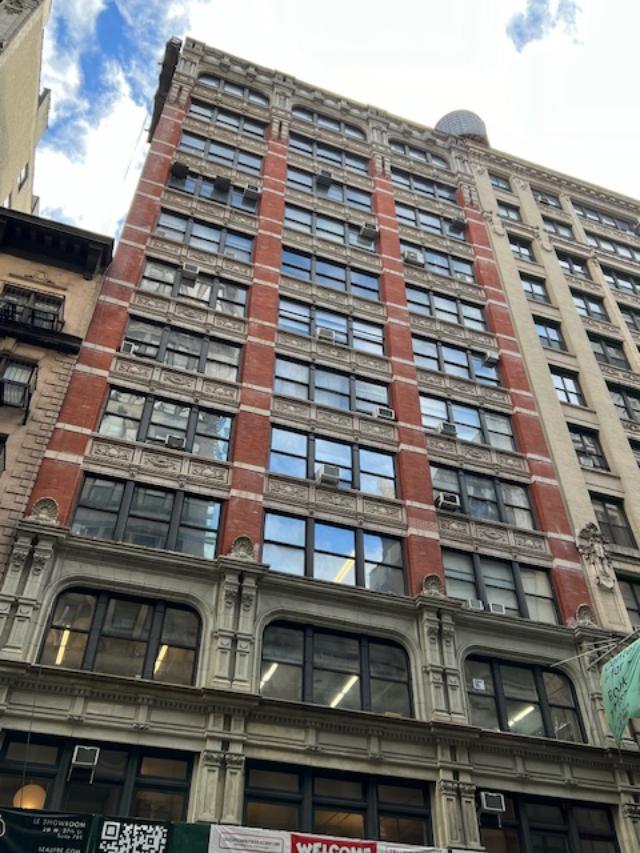
28-32 West 27th Street and 34 West 27th Street next door
https://www.realtyhop.com/building/28%20West%2027th%20Street
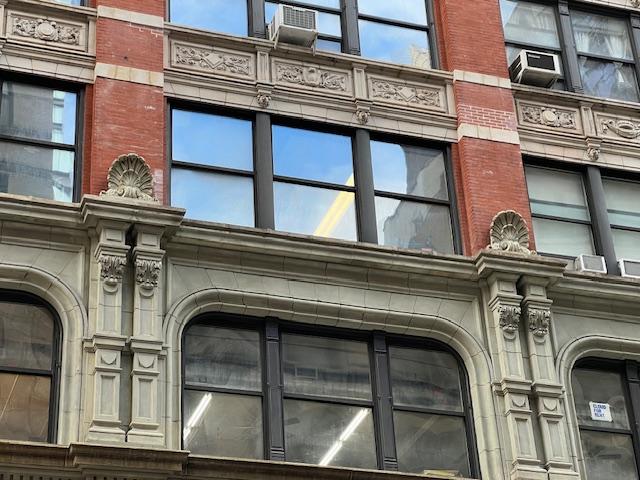
The beautiful details of the outside of 28-32 West 27th Street.
There are two small places to eat on the way back down West 27th Street that you should not miss. Pastry Chef Dominique Ansel opened his new bakery, Workshop at 17 East 27th Street recently and the pastries are amazing and innovative (as unusual). The small bakery is very creative in its design to match the delicious treats being sold.
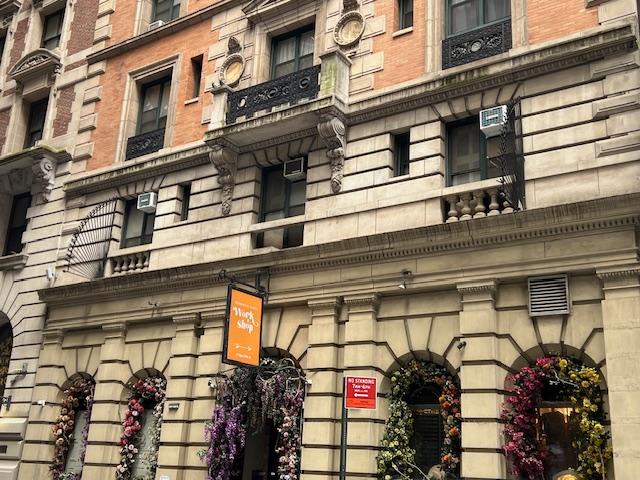
Dominique Ansel’s Workshop Bakery at 17 East 27th Street
https://www.facebook.com/DominiqueAnselWorkshop/
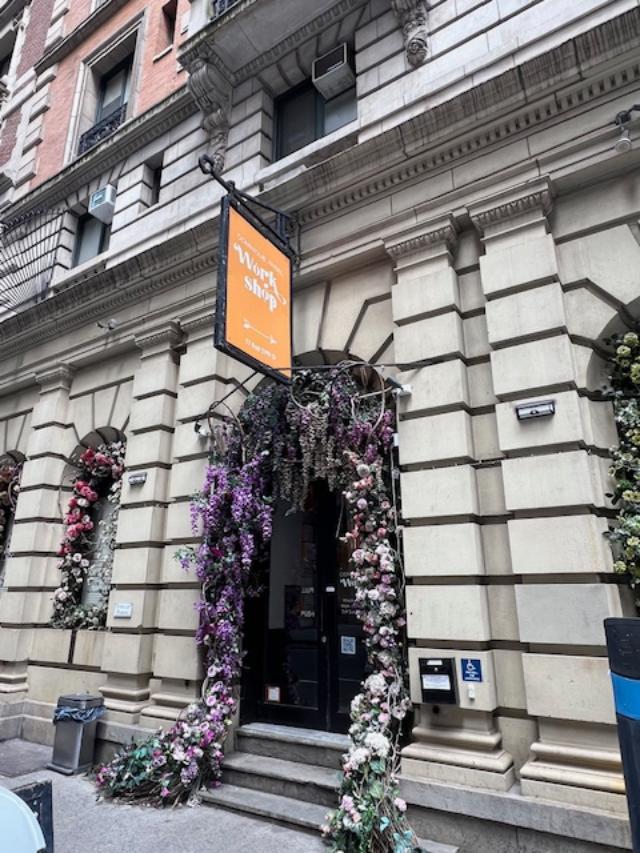
I tried the Brown Sugar DKA (Dominique’s Kouign Amann), a type of caramelized brioche/croissant that is loaded with cinnamon and butter and baked in a muffin dish. You have to pull it apart to enjoy each sweet piece of pastry. I also tried a savory pastry, the Crispy Molten Comte Gougere which is a type of cream puff filled with Comte and mozzarella cheese and then topped with bread crumbs and then warmed up. It was heaven.
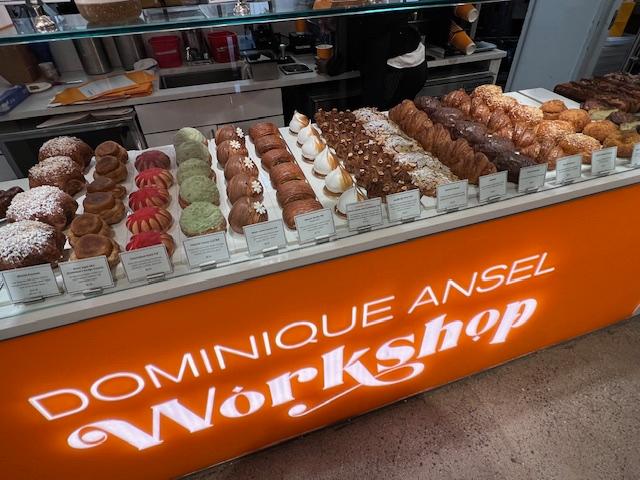
The bakery case at the Workshop.
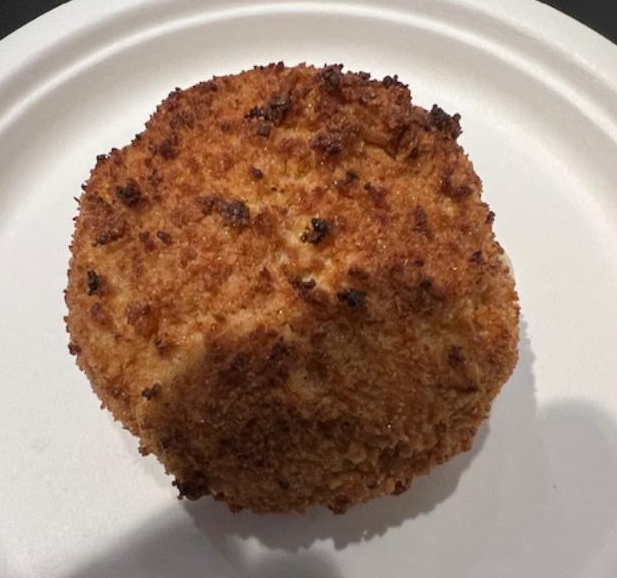
The Crispy Molten Comte Gougere.

The pastry when it is heated and melting.

The DKA Brown Sugar

The DKA Brown Sugar pulled apart and so buttery
The other is a little hole in the wall pizzeria called French Pizza at 1158 Broadway on the corner of Broadway and West 27th Street. The pizza slice was a $1.00 and the pizza was quite good. The sauce was amazing and the guy working the counter was really nice. They have a selection of breakfast and lunch dishes that are all under $5.00.

French Pizzeria at 1158 Broadway is a reasonable ‘hole in the wall’ restaurant
Heading back down 27th Street to Fifth Avenue, I passed the Museum of Sex again and I could see through the window that the gift shop was busy. It was interesting that everyone was wearing masks because of COVID but it seemed rather suited for the museum.
My walk down East 28th Street offered similar architectural treasurers. As the neighborhood started to change from wealthy residential to commercial, the rich started to build their new mansions on the upper parts of Fifth Avenue around Central Park. This area became the new Midtown from the end of the Civil War to the beginning of WWI. It became home to many of the top hotels and the Hotel Latham from 4-8 East 28th Street became one of the top hotels.
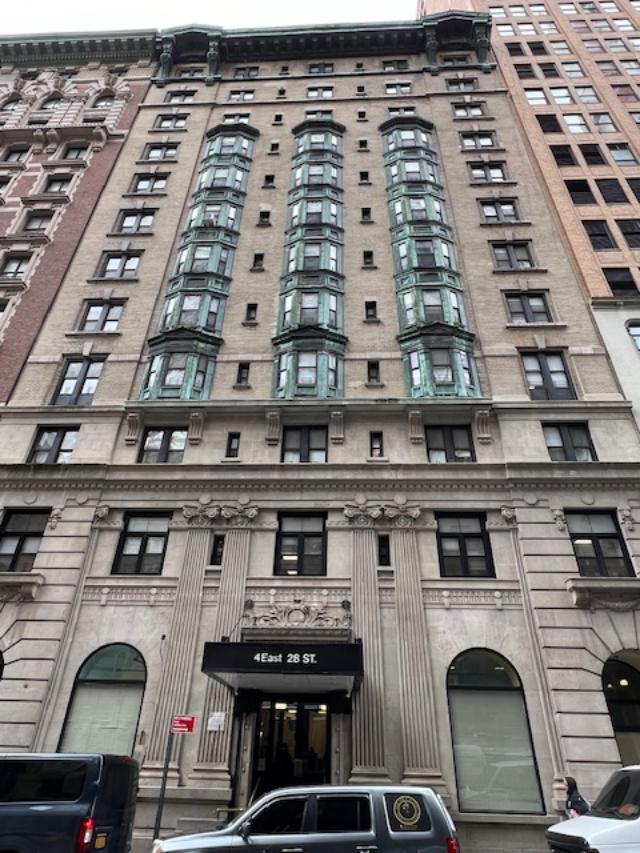
4-8 East 28th Street-The Latham Hotel
http://daytoninmanhattan.blogspot.com/2014/08/the-1904-hotel-latham-no-4-east-28th.html
The Latham Hotel was built 1904 and designed by architect Augustus N. Allen in the Beaux Arts style. The hotel opened as both an upscale residential and transient hotel. Like the Prince Edward Hotel, the modern era was not the best to the hotel and it was used for the homeless during the 1970’s and 80’s. Currently it is being renovated again (Daytonian).
One building I admired was at 34 East 28th Street. This small building has a unique facade that looks like it belongs in New Orleans. This brownstone with marble trim was built in 1910.

34 East 28th Street
https://streeteasy.com/building/34-west-28-street-new_york
I rounded the corner again to East 29th Street and stopped right in front of 2 West 29th Street. This elegant marble commercial building was built in 1928 and has since been renovated into condos. Don’t ask what the going price is to live here!
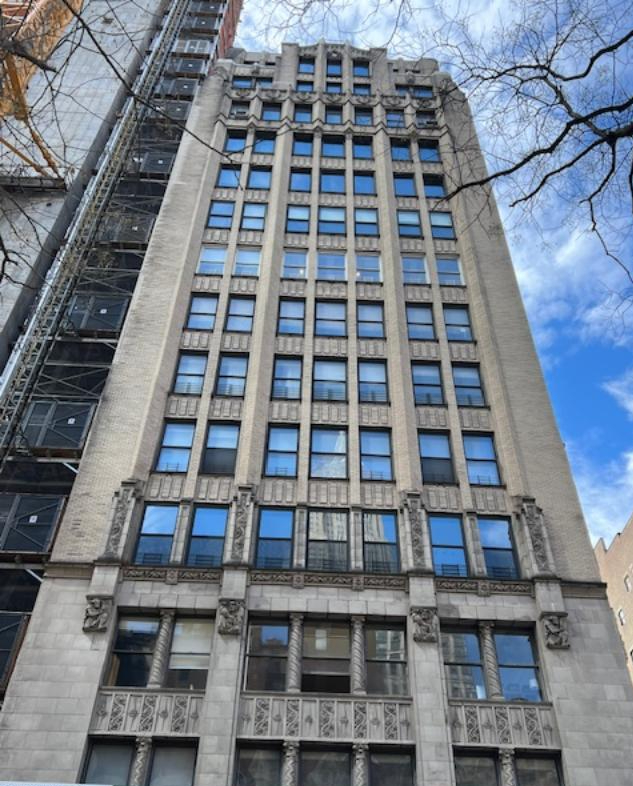
2 West 29th Street
https://www.cityrealty.com/nyc/flatiron-union-square/2-west-29th-street/109254
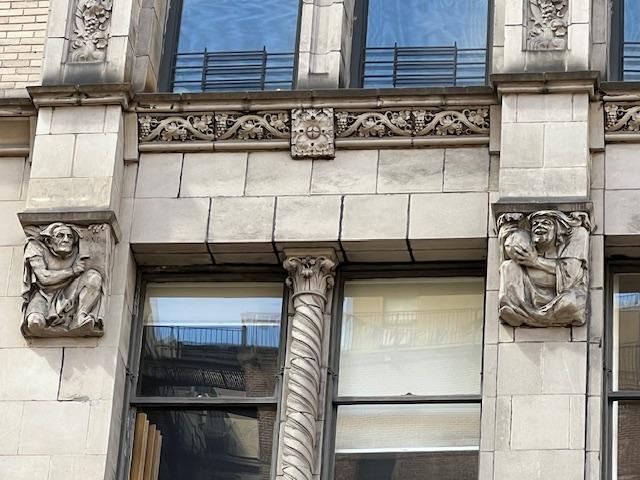
The detail work on 2 West 29th Street.
On the way back to the East Side of Fifth Avenue, I walked past 1186 and 1200 Broadway again with their scaffolding and sandblasting that will be going on for months. I also passed many small groups of Caribbean men who work at the wholesale stores huddling under the scaffolding to keep warm and dry on the gloomy afternoon.
As the buildings in this neighborhood go through the transition back to hotels and upscale retail awaiting the post-COVID days in the future I wondered how much longer they will all be working here. Almost all the buildings I have highlighted in the neighborhood are going through some form of renovation turning the neighborhood back to its glory days as the Midtown hub.
My last stop in the neighborhood was the Church of the Transfiguration at 1 East 29th Street. The church was built in the English Neo-Gothic style in 1849. The church had continued to be added onto during the late 1800’s with the tower and guildhall built in 1852 and the lych-gate designed by architect Fredrick Clarke Withers in 1869. The chapels were added in 1906 and 1908. The early claim to fame of the church was it had actor Edwin Booth (the father of John Wilkes Booth) Memorial stained glass window designed by John LeFarge in 1898 located in the church (Wiki).
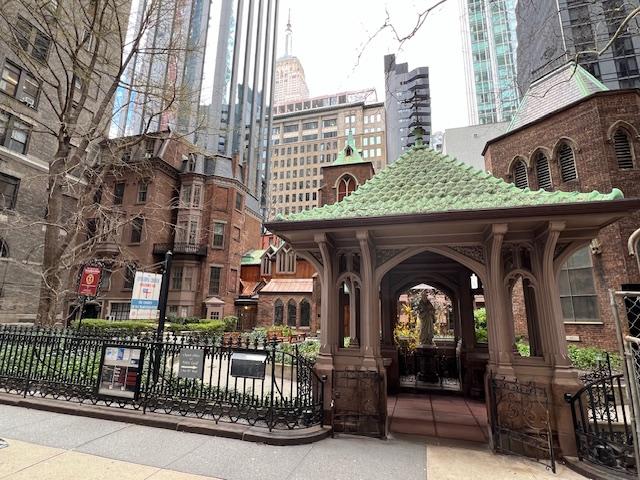
The Church of the Transfiguration at 1 East 29th Street
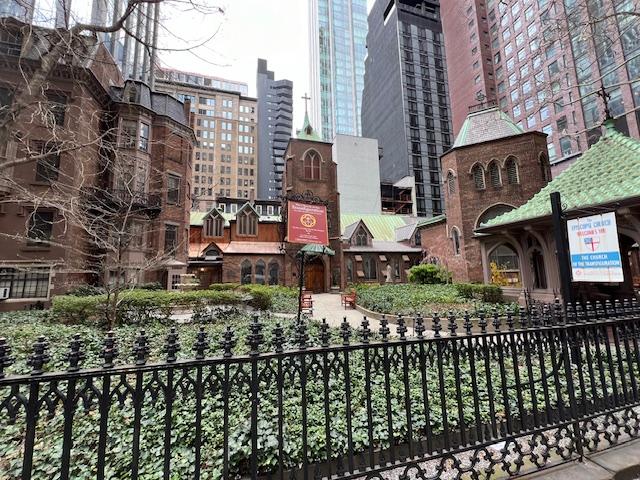
The grounds of the Church of Transfiguration
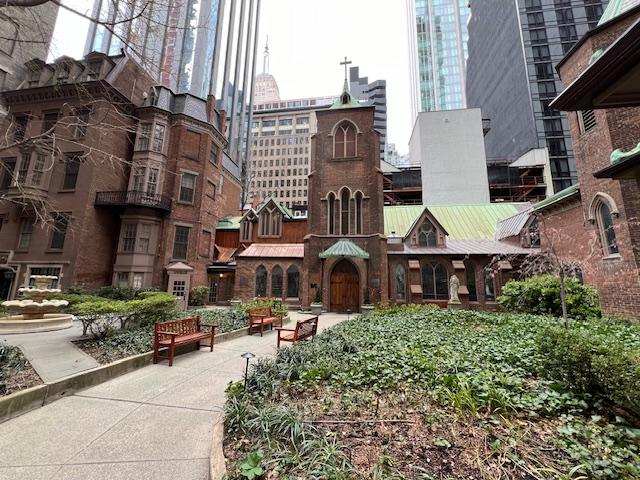
The Church of Transfiguration.
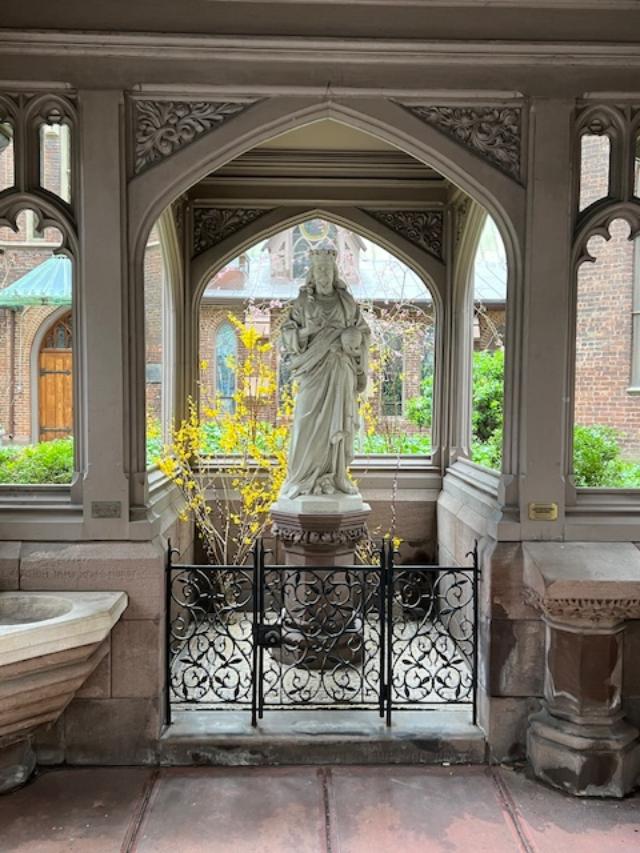
The Church of Transfiguration.
What is nice about the church is the gardens in the front where you can sit down and rest and contemplate about yourself. The original architect of the church is unknown but designed these English gardens as a place of refuge. What I thought was interesting was that the church had been used in films since Silent films and the most famous current film was the Woody Allen film “Hanna and her Sisters” (Wiki).
Still even on a gloomy day, it was a nice place to just rest, relax and think about how this neighborhood is going through its own transformation as the rest of the City is during this time of COVID. What will be the end results and what will the City look and be like?
I ended my evening once again with a quick slice of pizza at Fresh Pizza and Deli at 876 Sixth Avenue. I don’t know why I love this little dump of a restaurant but the food is so good. The pizza is a $1.00 and on a cold gloomy night tasted so good. The cooks here keep giving strange looks like I am going to arrest them or something. The people that eat here are real characters that work in the neighborhood and like to defy City orders and eat their pizza and sandwiches at the small counter inside the restaurant. I found myself doing the same until they nudged me to the sidewalk.
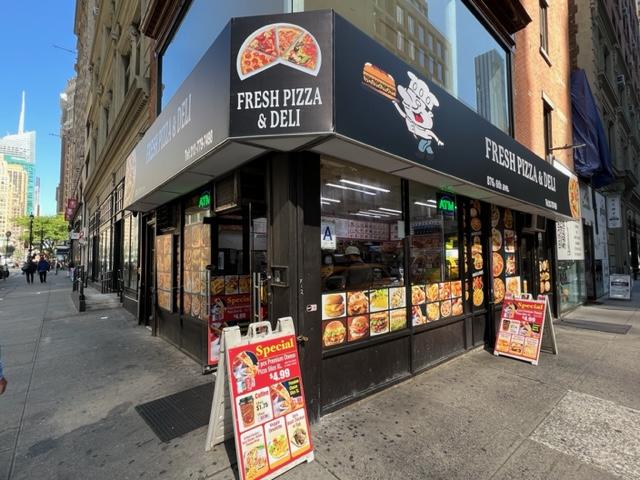
Fresh Pizza and Deli at 876 Sixth Avenue
https://www.seamless.com/menu/fresh-pizza–deli-876-6th-ave-new-york/2406485
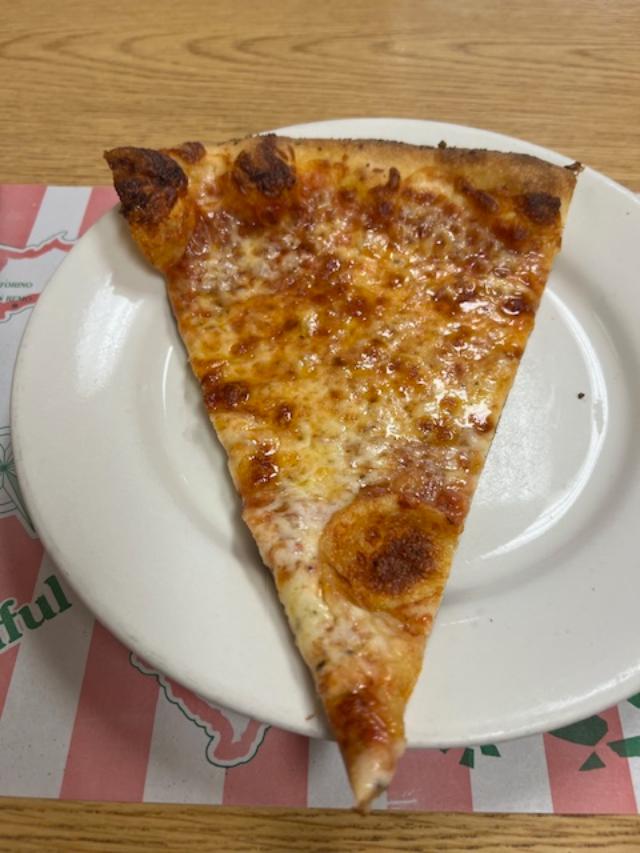
The Cheese Pizza here is delicious
I keep wondering how long this little neighborhood gem with last in the latest transformation of this neighborhood. I will stay-tuned as I continue my walk around the old Midtown.
My blog on “Walking the Borders of NoMAD/Rose Hill/Flatiron District”:
https://wordpress.com/post/mywalkinmanhattan.com/16580
My blog on “A Victorian Christmas: Touring the Ladies Shopping Mile” with the Cornell Club:
https://wordpress.com/post/mywalkinmanhattan.com/8117
Places to Eat:
AweSum Dim Sum
160 East 23rd Street
New York City, NY 10010
(646) 998-3313/3314
Open: Sunday 9:30am-8:00pm/Monday-Thursday 11:00am-8:00pm/Friday 11:00am-9:00pm/Saturday 9:30am-9:00pm
My review on TripAdvisor:
My review on DiningonaShoeStringinNYC@Wordpress.com:
https://wordpress.com/post/diningonashoestringinnyc.wordpress.com/1898
Kips Bay Deli
545 Second Avenue
New York, NY 10016
(917) 261-2927
https://kips-bay-deli.business.site/
Open: Sunday-Saturday 24 Hours
My review on TripAdvisor:
My review on DiningonaShoeStringinNYC@Wordpress.com:
https://wordpress.com/post/diningonashoestringinnyc.wordpress.com/1961
Fresh Pizza & Deli
876 Sixth Avenue
New York, NY 10001
(212) 779-7498
https://99centsfreshpizzaanddelinewyork.mybistro.online/
Open: Sunday-Friday 6:00am-12:00am/Saturday 24 hours
My review on TripAdvisor:
My review on DiningonaShoeStringinNYC@Wordpress.com:
https://wordpress.com/post/diningonashoestringinnyc.wordpress.com/2000
French Pizza
1158 Broadway at West 27th Street
New York, NY 10001
(917) 472-7732
My review on TripAdvisor:
My review on DiningonaShoeStringinNYC@Wordpress.com:
Dominique Ansel Workshop
17 East 27th Street
New York, NY 10016
(212) 901-1015
My review on TripAdvisor:
Places to Visit:
The Museum of Sex
233 Fifth Avenue (@27th Street)
New York, NY 10016
(212) 689-6337
Open: Sunday-Thursday 10:30am-11:00pm/Friday & Saturday 10:30am-12:00am
Fee: General Admission $20.50/$3.00 off for Students, Seniors and Military
Homepage
https://www.museumofsex.com/museum/about/
My review on TripAdvisor:
My review on VisitingaMuseum.com:
https://wordpress.com/post/visitingamuseum.com/3081
Madison Square Park
11 Madison Avenue
New York, NY 10001
(212) 520-7600
https://www.nycgovparks.org/parks/madison-square-park
https://www.facebook.com/madisonsquarepark/
Open: Sunday-Saturday 6:00am-11:00pm
https://www.madisonsquarepark.org/
My review on TripAdvisor:
National Museum of Mathematics
11 East 26th Street
New York, NY 10010
(212) 542-0566
https://www.facebook.com/MoMath1/
Open: Sunday-Saturday 10:00am-5:00pm
Fee: Adults $25.00/Seniors-Children-Students $20.00
My review on TripAdvisor:
My review on VistingaMuseum.com: